
Mamas & Papas Vardo Pushchair Bundle Review: Three Months of Real-Life Testing
It’s been three months since the Mamas & Papas Vardo Pushchair Bundle rolled into our lives, and as a new parent, I’ve put it through… The post Mamas & Papas Vardo Pushchair Bundle Review: Three Months of Real-Life Testing appeared first on The Daily Struggle.
Family
Tips For Your First Outing with a Newborn (From a New First Time Mum)
As a new parent, the idea of leaving the house with a tiny human can feel like orchestrating a small military operation. The mere thought… The post Tips For Your First Outing with a Newborn (From a New First Time Mum) appeared first on The […]
Family
Essential things to pack for a family camping trip with kids
Camping with kids isn’t for the faint hearted! Especially if you’ve got a mix of ages and the weather is less than ideal. But over… The post Essential things to pack for a family camping trip with kids appeared first on The Daily Struggle.
Family




Pamper House: America As It Was Learning to Treat Itself
The term “day spa” is as much a part of the modern vocabulary as “smart phone” or “Zoom meeting,” which makes sense, because one can feel like an antidote to the others. But the concept of a day spa was just coming into being when […]
LifestyleThe term “day spa” is as much a part of the modern vocabulary as “smart phone” or “Zoom meeting,” which makes sense, because one can feel like an antidote to the others.
But the concept of a day spa was just coming into being when LIFE magazine devoted several pages in its June 4, 1952 issue to a new business called Pamper House, which was located at 5th avenue and 48th street in Manhattan.
These were the rules of the Pamper House, as described in LIFE’s story:
At this unique club, in which a yearly membership costs $1, members can take a shower, wash their hair, give themselves a manicure or a home permanent, freshen their make-up, change their clothes or just drop in to read or watch television in the modern lounge, or to rest in the quiet alcove. Each visit to Pamper House costs 25¢. A dime is the fee for almost every service or item. Five trained beauticians are on hand to give free advice about hair styling and make-up, and to help customers help themselves.
LIFE staff photographer Nina Leen documented what went on at the Pamper House. Perhaps the most interesting novelty there was a perfume vending machine in which women could pay a dime for a spritz of Chanel No. 5.
To the modern eye Pamper House looks like the first draft of a concept that has since been much refined over the years. There is plenty to recommend it, starting with the basic idea of a private enclave for women to have their needs attended to. It’s easy to envy the women who stop by for a nap after lunch. But what stands out about the Pamper House is how much members had to do for themselves. One photograph shows a member doing her own nails, with no manicurist in sight. In another photo a woman irons her own blouse—she basically looks like she’s doing housework. A modern version of Pamper House would have a lot more pampering.
Pamper House was founded by Tanya Pitt, a former French model. LIFE reported that the business at Pamper House was brisk, and that she had plans to add locations both around New York and across the country.
But that doesn’t seem to have happened. Internet searches for Ms. Pitt or Pamper House yield little more than reports about the launch of her venture, which happened to be located just a couple blocks from the old Time-Life Building and many other media outlets.
Even if Pamper House didn’t become a lasting brand, the basic impulse behind the venture was right on. We were on our way to a world where “treat yo self” has become a catch phrase. America is now home to more than 20,000 spas. In short, there are descendants of Pamper House all across the country.

Members of the Pamper House in midtown Manhattan applied cosmetics in the club’s make-up nooks, 1952.
Nina Leen/LIfe Picture Collection/Shutterstock

At the Pamper House in New York, some women stopped by for a quick nap after lunch, 1952.
Nina Leen/LIfe Picture Collection/Shutterstock

Women relaxed at Pamper House, a midtown Manhattan club that catered to working women and suburban housewives, 1952.
Nina Leen/Life Picture Collection/Shutterstock

This vending machine at the Pamper House in midtown Manhattan dispensed perfume at a nickel per spray, 1952.
Nina Leen/LIfe Picture Collection/Shutterstock

Using the hair dryers at Pamper House in New York City cost ten cents for fifteen minutes, 1952.
Nina Leen/LIfe Picture Collection/Shutterstock

Members of the Pamper House in midtown Manhattan paid ten cents to use the shower, plus another ten cents if they needed a towel, 1952.
Nina Leen/LIfe Picture Collection/Shutterstock
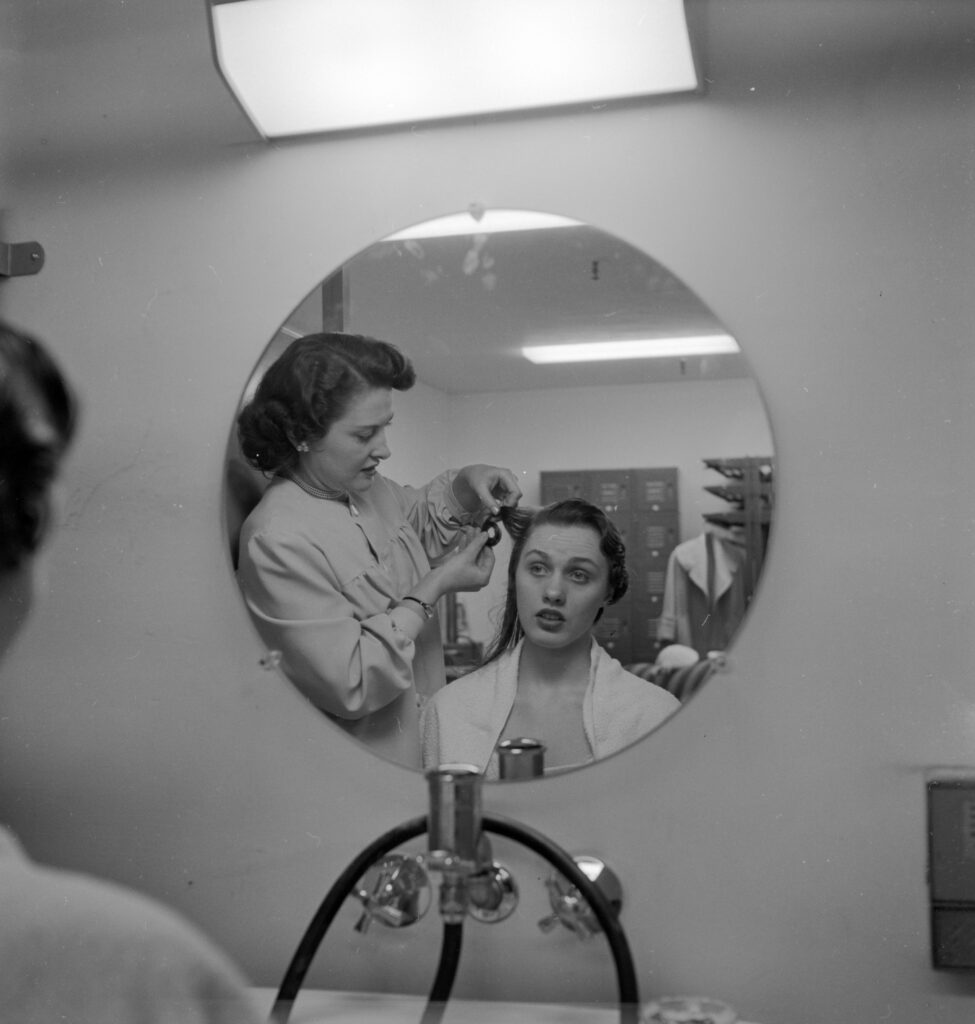
A member of the Pamper House in Rockefeller Center, NYC, got her hair done by one of the staff beauticians, 1952.
Nina Leen/LIfe Picture Collection/Shutterstock
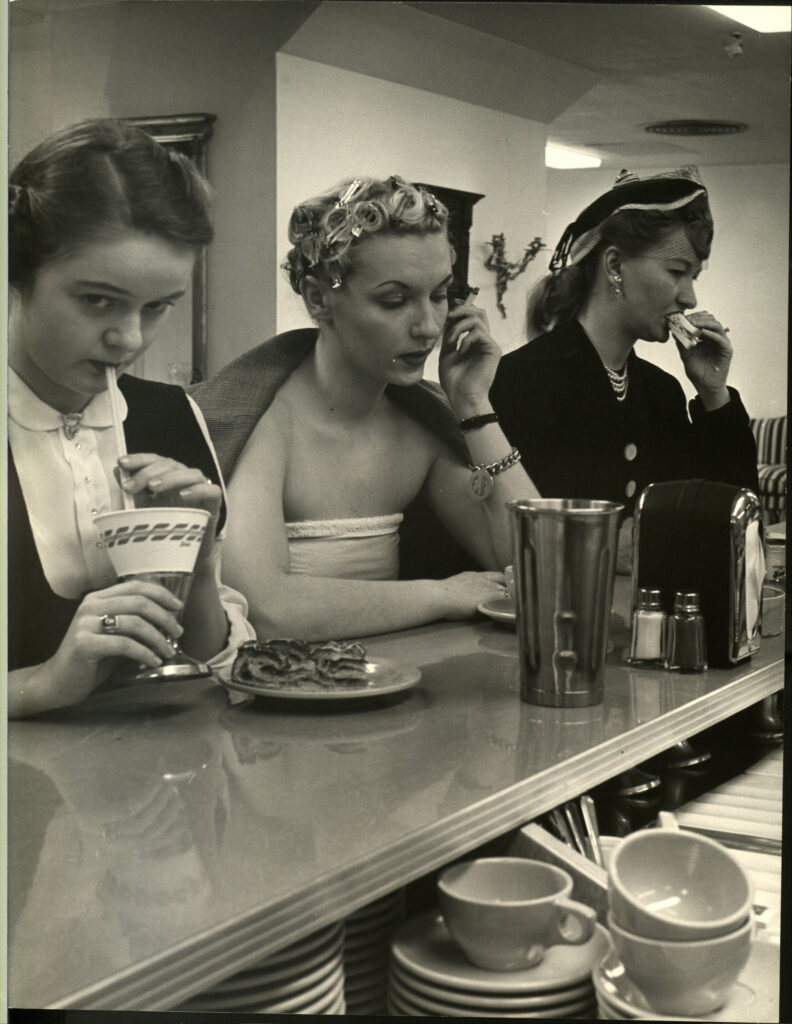
Members of the Pamper House in midtown Manhattan enjoyed a snack while their hair was setting, 1952.
Nina Leen/LIfe Picture Collection/Shutterstock
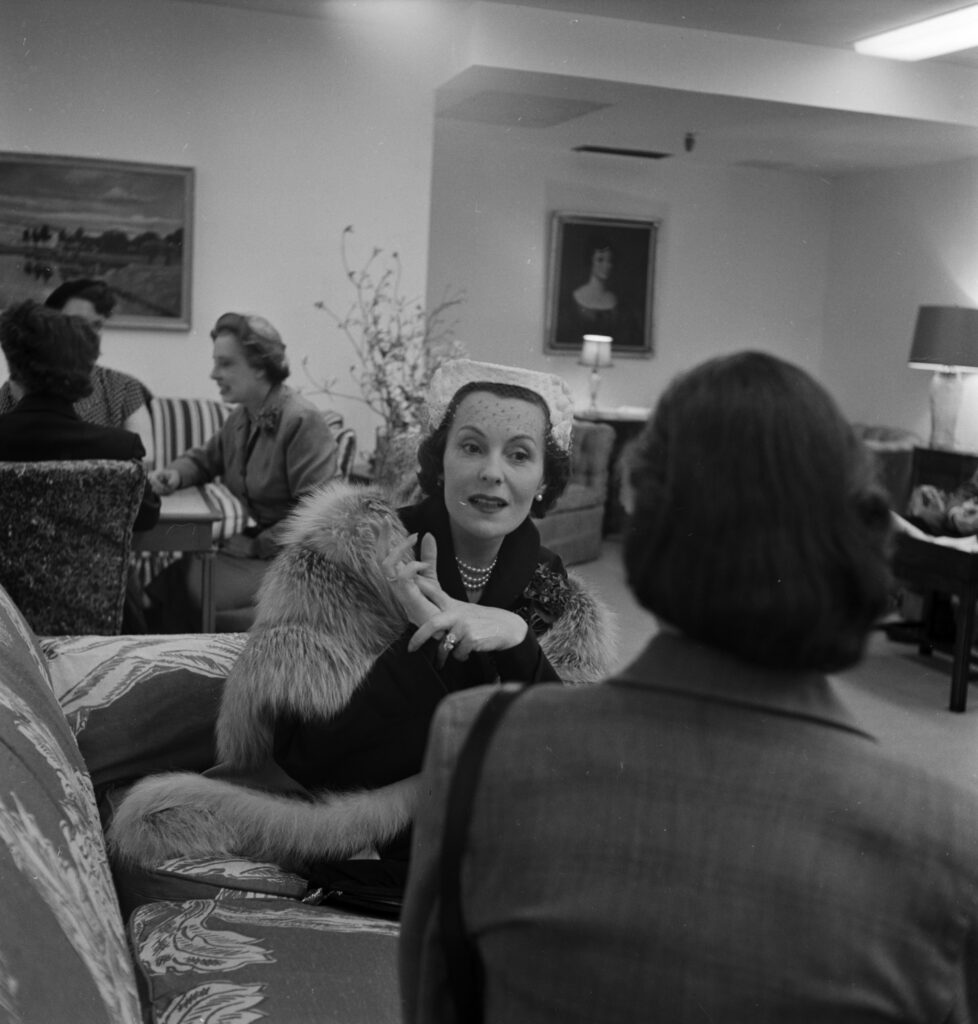
Two members of the Pamper House in Rockefeller Center in New York enjoyed a conversation, 1952.
Nina Leen/LIfe Picture Collection/Shutterstock

A member of the Pamper House in Rockefeller Center in New York stopped by to iron her own blouse, 1952.
Nina Leen/LIfe Picture Collection/Shutterstock
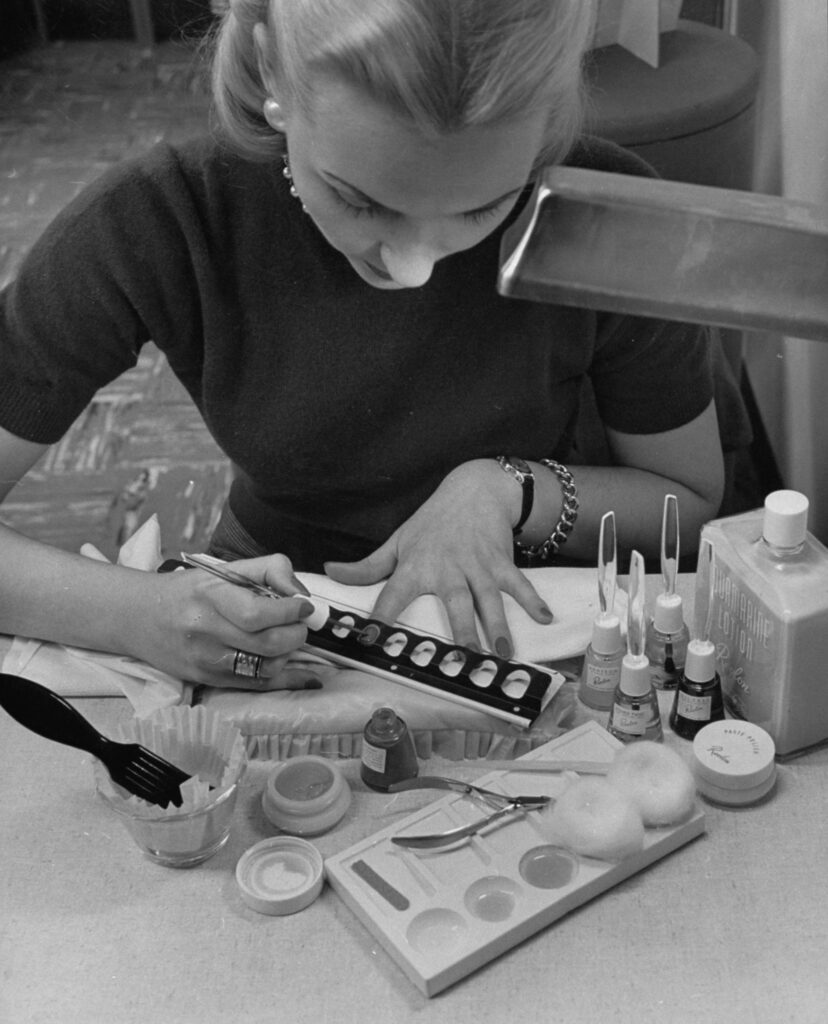
A member of the Pamper House in Rockefeller Center, NYC, gave herself a manicure, 1952.
Nina Leen/LIfe Picture Collection/Shutterstock

A member of the Pamper House in Rockefeller Center, NYC, washed her hair in the shampoo booth, 1952.
Nina Leen/LIfe Picture Collection/Shutterstock
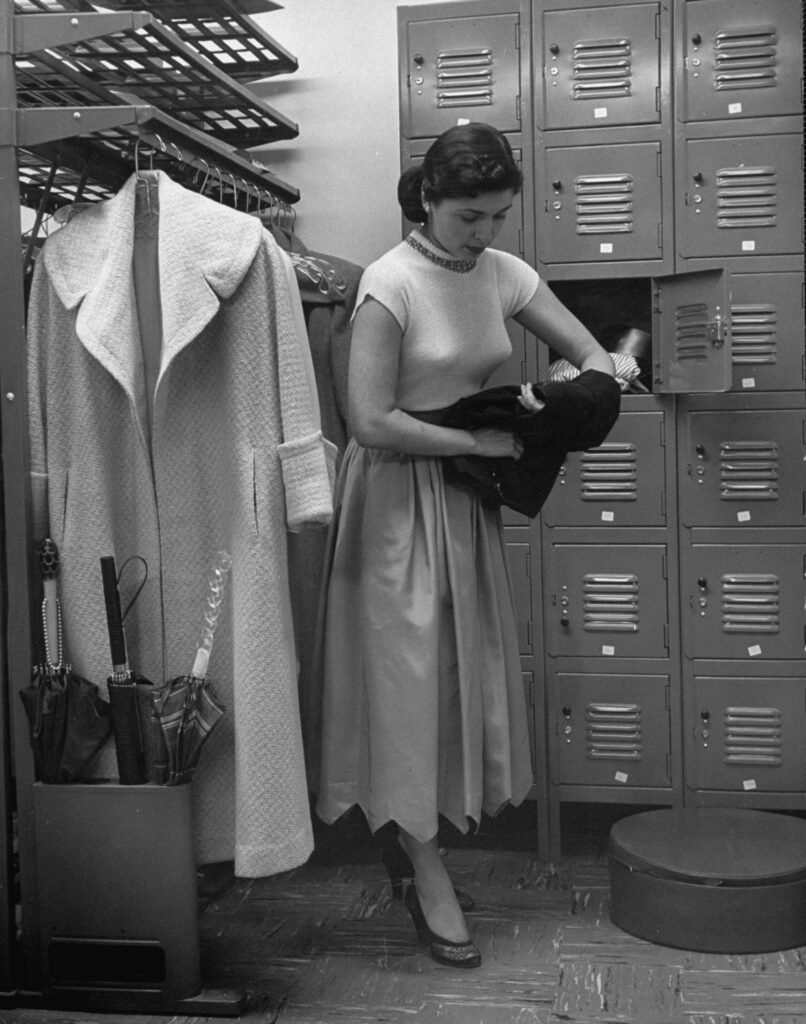
Using the lockers at Pamper House in New York City cost ten cents a day, 1952.
Nina Leen/LIfe Picture Collection/Shutterstock

Tanya Pitt, a French former model, was the founder of the Pamper House in midtown Manhattan, 1952.
Nina Leen/LIfe Picture Collection/Shutterstock
The post Pamper House: America As It Was Learning to Treat Itself appeared first on LIFE.
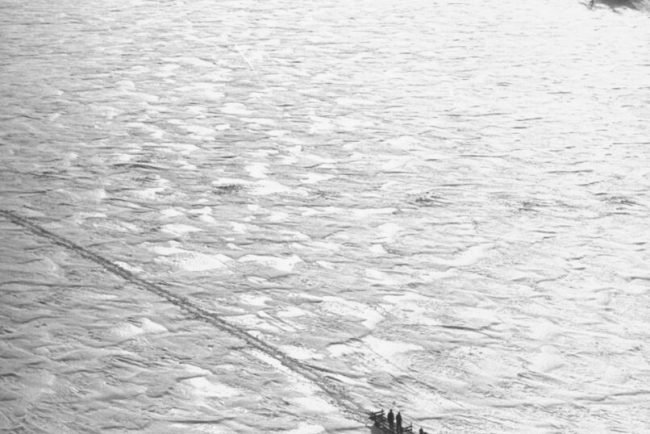
Wild and Frozen: Minnesota at Its Coldest and Most Remote
Today Alaska holds a well-earned place in the American imagination as the country’s final frontier, and a host of reality shows use the 49th state as a backdrop for its rugged adventures. In 1950, eight years before Alaska officially joined the union, LIFE took its […]
LifestyleToday Alaska holds a well-earned place in the American imagination as the country’s final frontier, and a host of reality shows use the 49th state as a backdrop for its rugged adventures.
In 1950, eight years before Alaska officially joined the union, LIFE took its readers to the what was then America’s northernmost territory—a chilly and remote part of Minnesota known as Northwest Angle. This patch of land seems like it should really be part of Canada—it does connect with the rest of The Gopher State by land and has physical borders with Manitoba and Ontario. Northwest Angle is only part of the U.S. because people got confused while the details of the U.S.-Canada border were being negotiated.
If you’ve never heard of the Northwest Angle, you’re not alone. LIFE began its 1950 story by explaining just what this place was, and what life was like there:
Jutting out like a tiny bell tower at the top of Minnesota is a strip of woodland-and-lake wilderness called the Northwest Angle. … Its inhabitants, cut off from the rest of the U.S. by the 1,500-square mile Lake of the Woods, are an isolated, frontier people. For a brief period during the summer they live in a paradise of thick green forests and deep blue lakes. They hunt, fish, eat wild berries and trap for lynx. But when the long winter sets in, they live in an inhospitable land which is more like Siberia than the U.S. Blizzards roar down out of the North. The temperature drops to 50 degrees below zero, cold enough to split the logs of a cabin. Even on warmer days it seldom gets to more than 20 below zero.
In 1950 this isolated piece of America was out there in more ways than one. “The Angle has no telephones, roads, telegraph, movies, churches or doctors,” LIFE wrote. “The log homes have neither running water nor plumbing. The main meat dish is venison.”
The frontier aspects of the Northwest Angle were a large part of its appeal to residents, most of whom were living there by choice. They had vacationed there during the summer and fallen in love with the place.
The photos by George Silk capture the unique way of life in Northwest Angle. Women made their own butter in hand-cranked churns, and gathered for quilting bees for amusement. Residents traveled in horse-drawn sleighs to collect firewood. Kids amused themselves by playing tag in the deep snow. One man described as a “hermit” spent his winters reading the Congressional Record.
The winters drove most residents indoors. The attitude of the locals, LIFE wrote, was “They don’t particularly like the winters, but they don’t dislike them either.”
The reward for enduring the winter, as they saw it, came when the snow thawed, the geese returned, and the Northwest Angle became an outdoor paradise. LIFE wrote, “Then the citizens of the Angle tell each other that there is no other place on earth where they could enjoy so good a life at so little cost.”
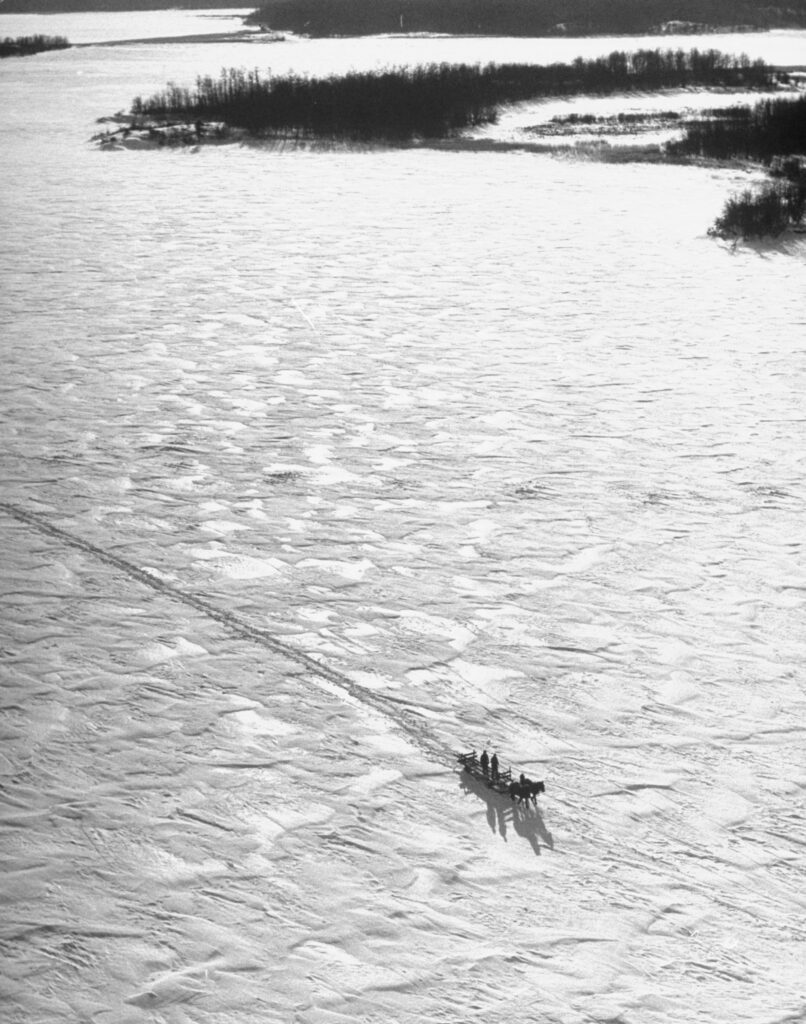
Men cross a frozen lake in a horse-drawn sleigh while on a firewood-gathering expedition. Because the Northwest Angle has no roads, gathering firewood can actually be easier when the lake is frozen..
George Silk/LIfe Picture Collection/Shutterstock
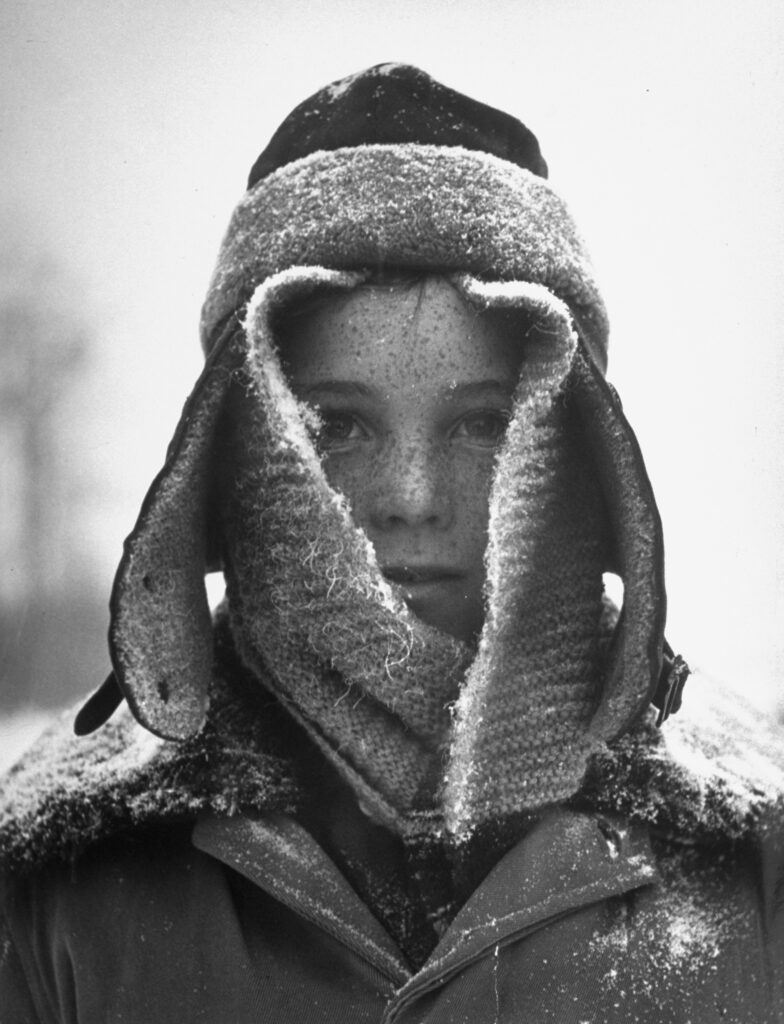
Twelve-year old David Colson of Northwest Angle, Minnesota, photographed after walking home two miles from school, 1950.
George Silk/LIfe Picture Collection/Shutterstock
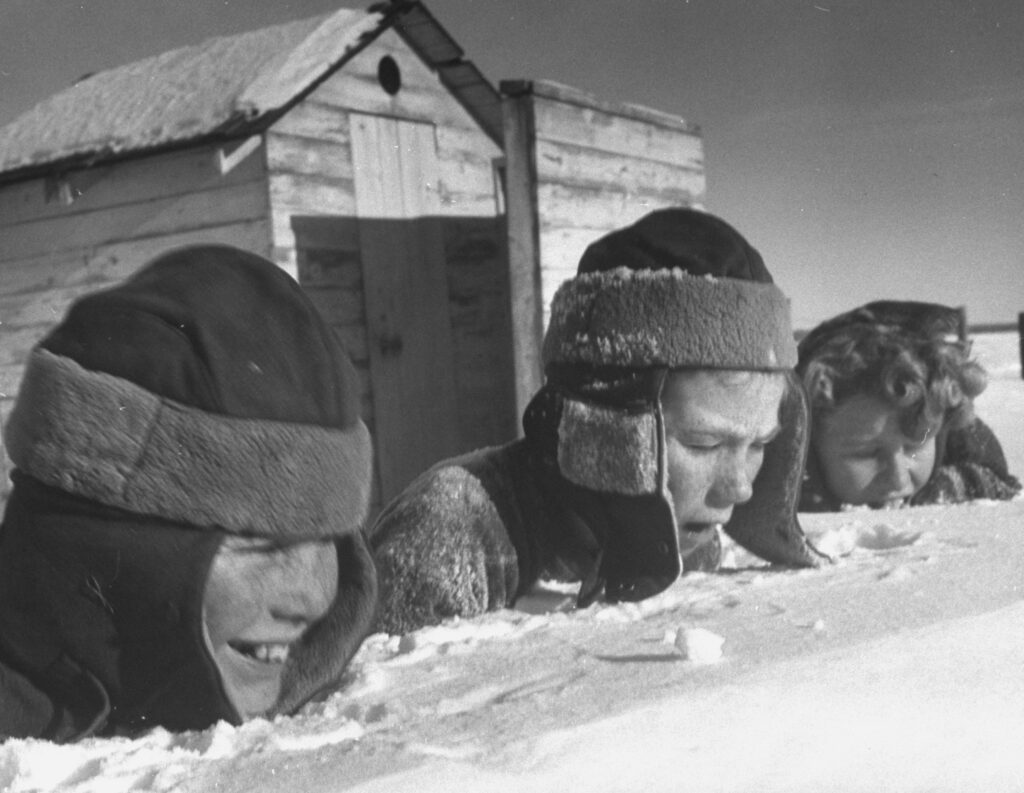
Two boys and a girl hid up to their necks in a snowdrift, nibbling at the snow.while playing a game of tag in Northwest Angle, Minnesota, 1950.
George Silk/LIfe Picture Collection/Shutterstock
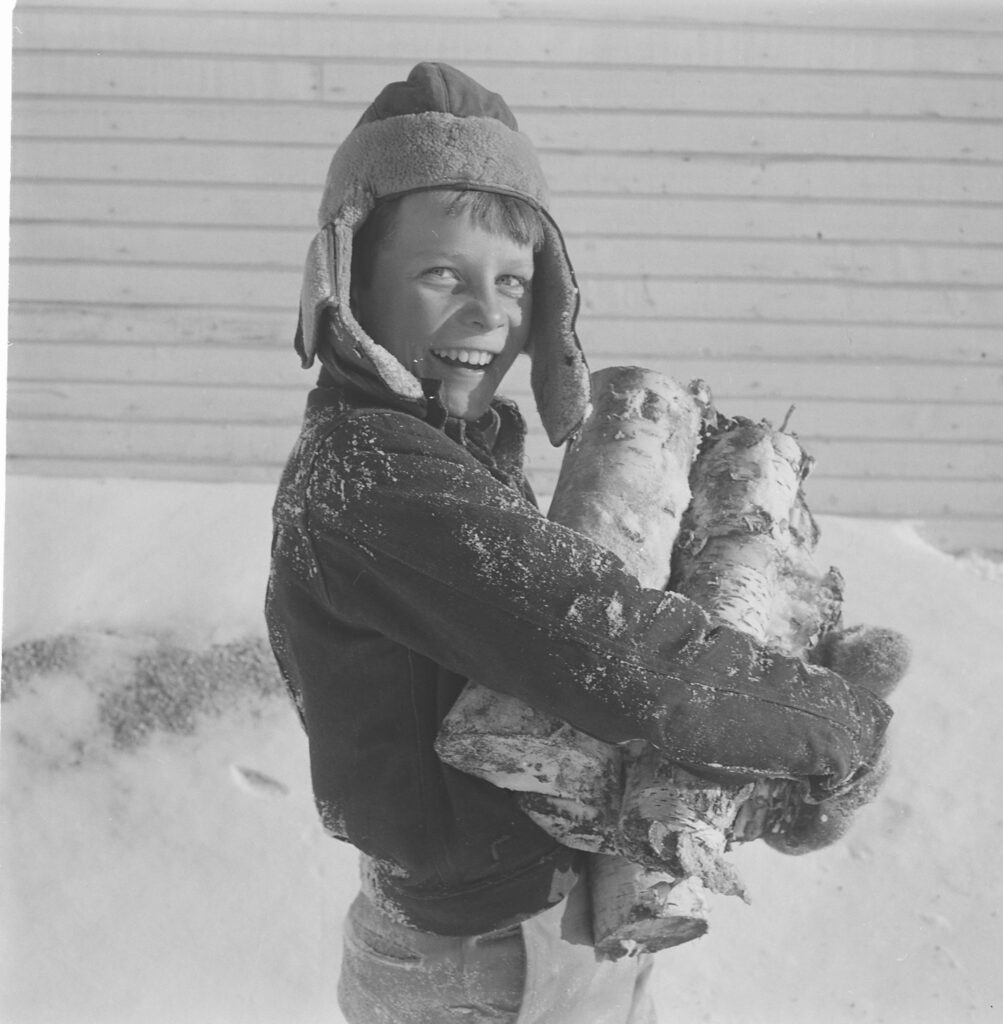
Scenes of wintertime in remote Northwest Angle, Minnesota, 1950.
George Silk/LIfe Picture Collection/Shutterstock
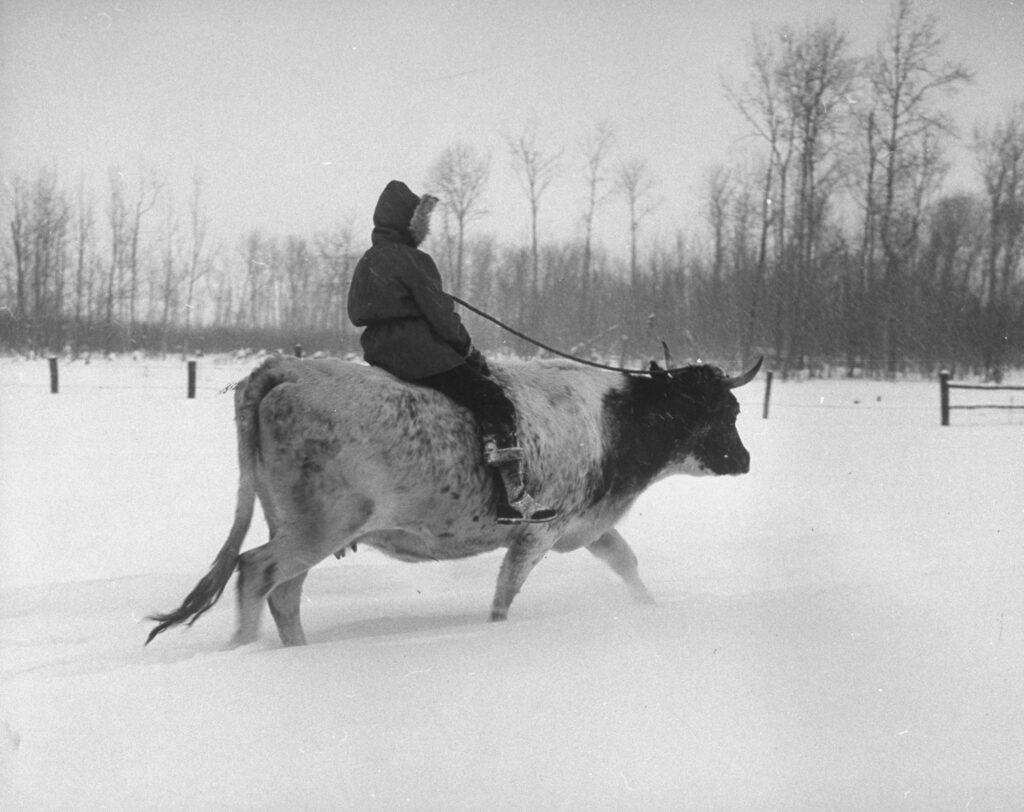
Twevle-year-old David Colson rode a cow to get water from a hole drilled through ice in the lake in Northwest Angle, Minn., 1950.
George Silk/LIfe Picture Collection/Shutterstock
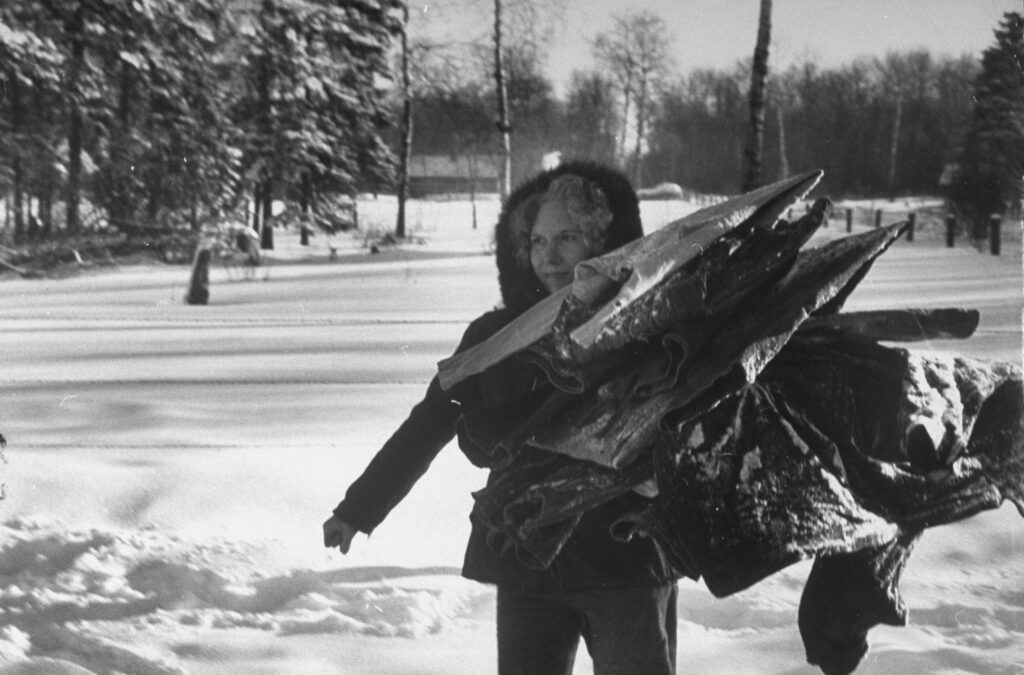
Mrs. Joe Risser of Northwest Angle, Minn., carried in wash that had frozen on the line, 1950.
George Silk/LIfe Picture Collection/Shutterstock
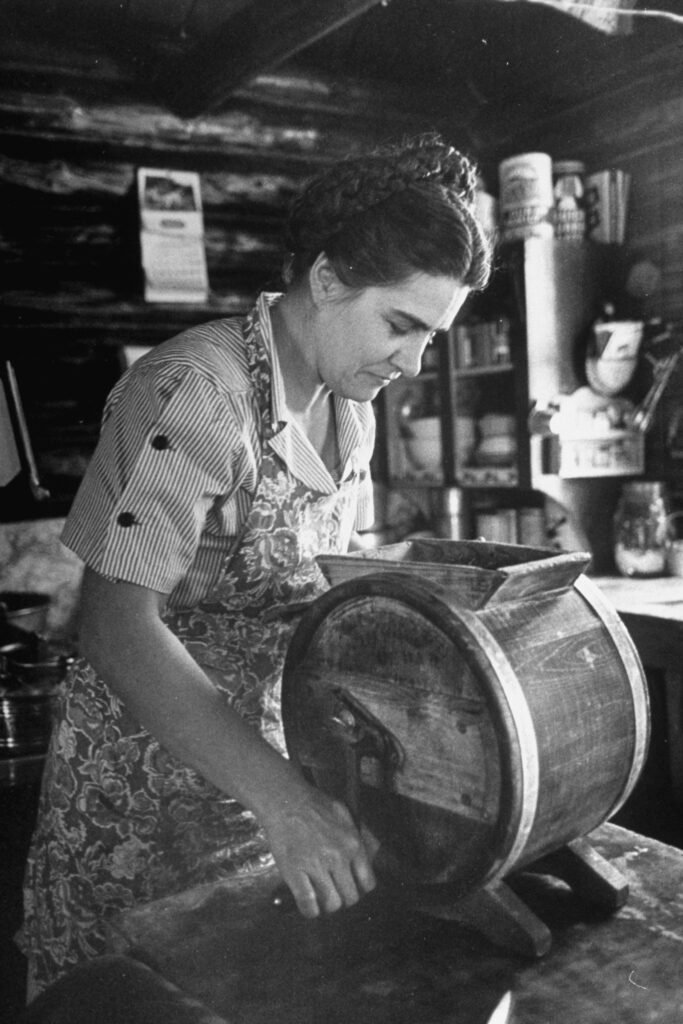
Mrs. Edison Risser used a hand-operated butter-making machine like virtually every other family did in Northwest Angle, Minnesota, 1950.
George Silk/Life Picture Collection/Shutterstock
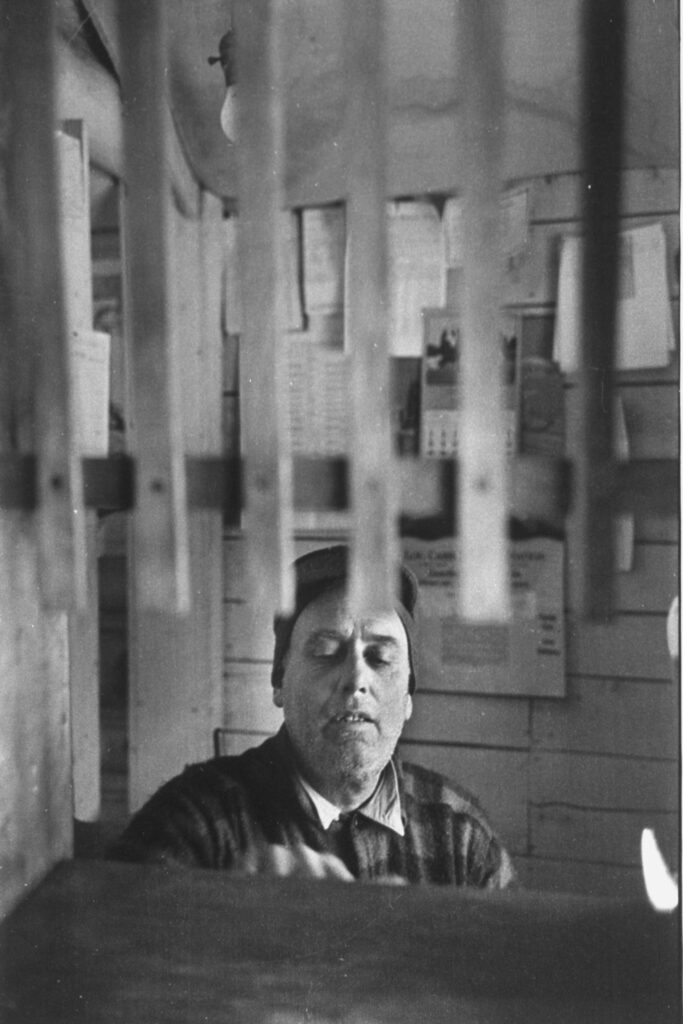
Postmaster Jake Colson ran the smallest post office in the U.S in a six-by-four-foot corner of Northwest Angle’s general store; only twelve homes received mail up there.
George Silk/LIfe Picture Collection/Shutterstock
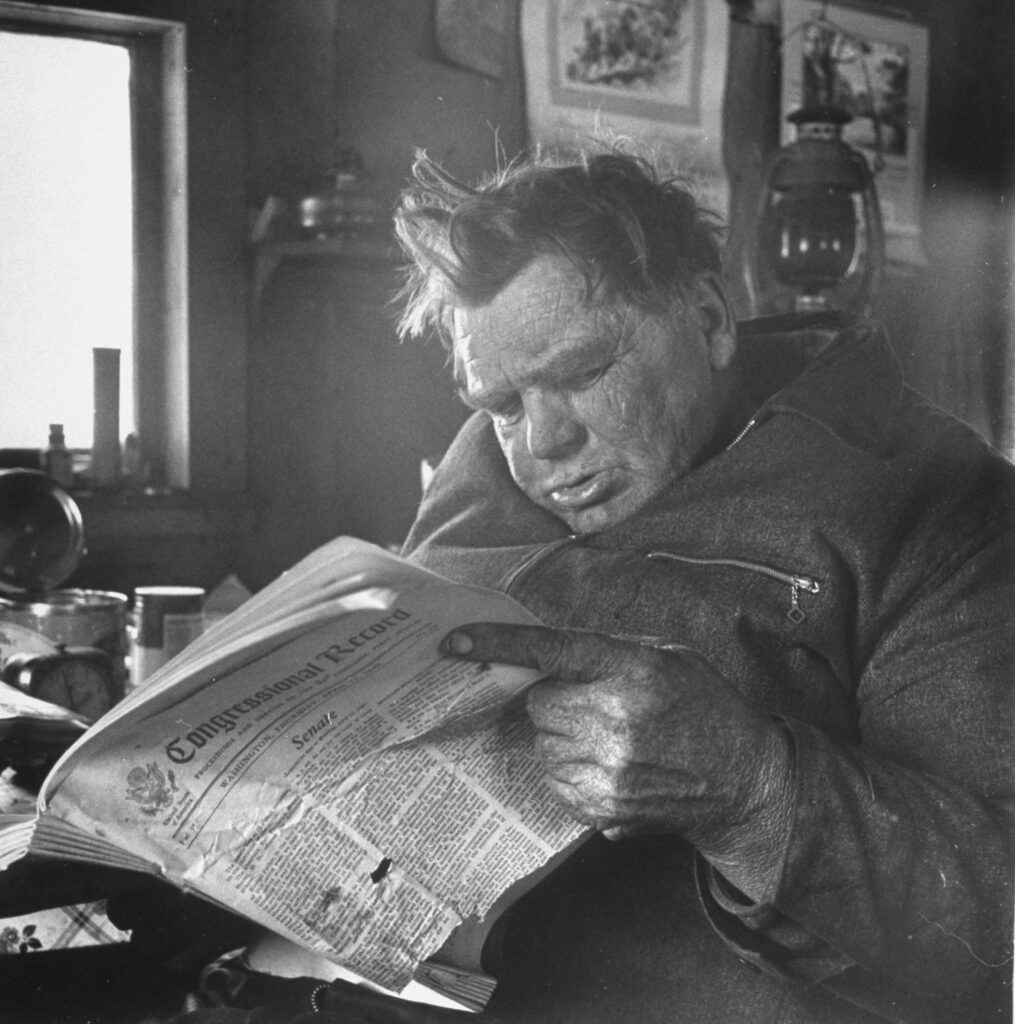
Eli Olson, a reclusive trapper and 34-year resident of Northwest Angle, Minnesota, liked to read the Congressional Record during the winter, 1950.
George Silk/LIfe Picture Collection/Shutterstock
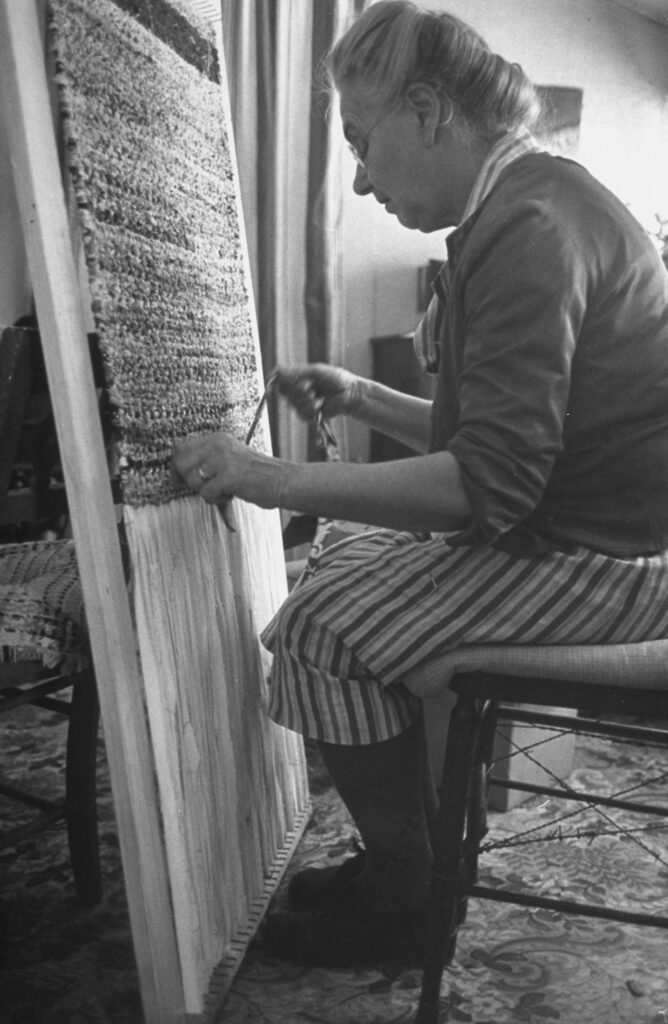
A women carefully wove a rug during the extremely cold winter months in Northwest Angle, Minnesota, 1950.
George Silk/LIfe Picture Collection/Shutterstock
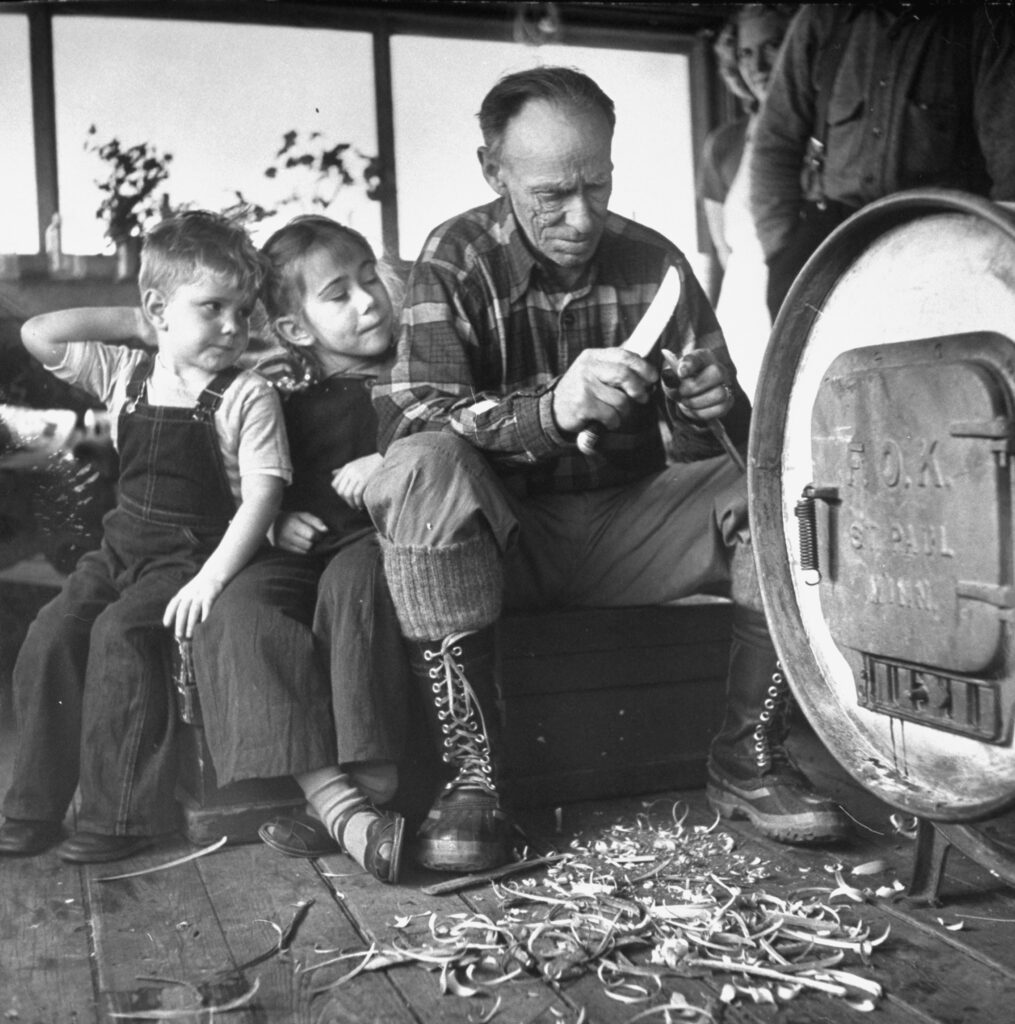
Grandfather Oscar Risser whittled while his grandchildren watched during a long winter in Northwest Angle, Minnesota, 1950.
George Silk/LIfe Picture Collection/Shutterstock
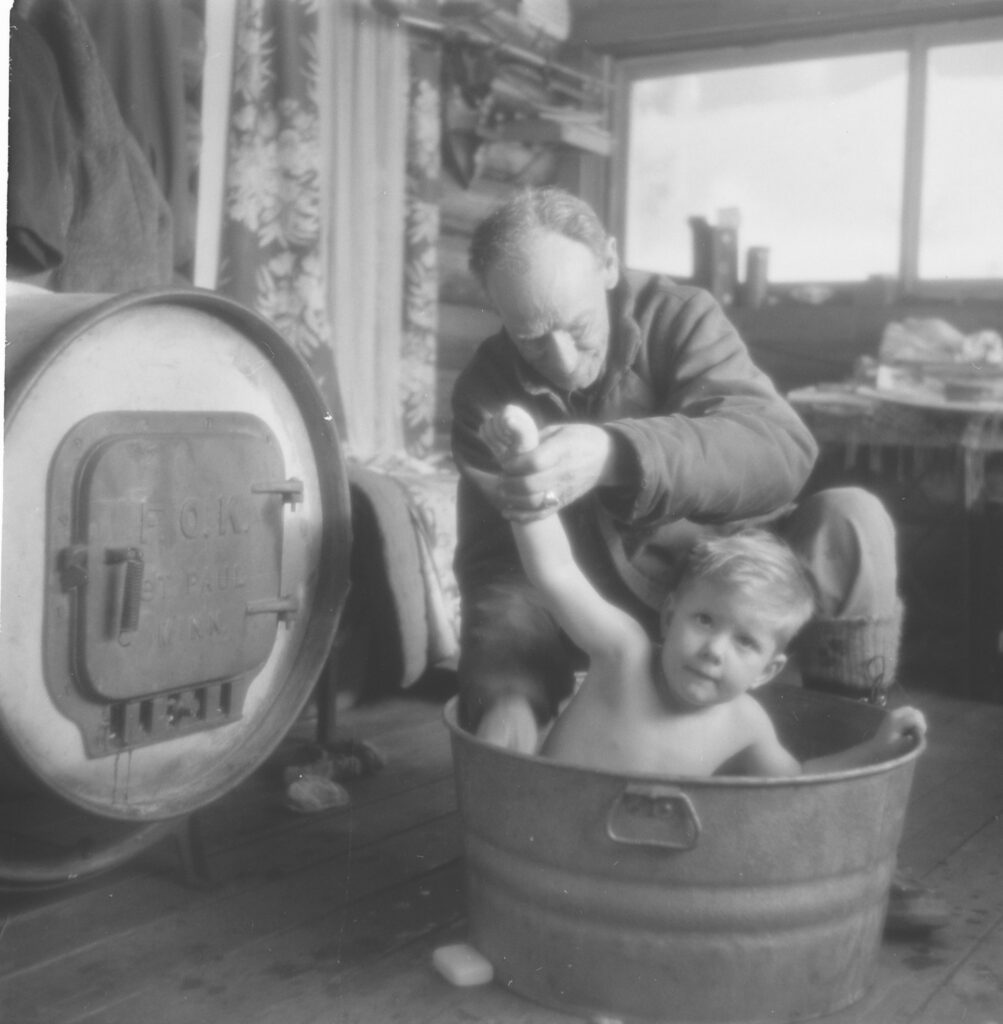
Kids in Northwest Angle, Minnesota, generally took baths once a week, on Saturdays, during the winter.
George Silk/LIfe Picture Collection/Shutterstock

Quilting bees like this one were a popular winter pastime in Northwest Angle, MInnesota, 1950.
George Silk/LIfe Picture Collection/Shutterstock

A winter quilting bee in Northwest Angle, Minnesota including a break for a two-hour lunch that featured chicken, baked beans, canned vegetables and pie, 1950.
George Silk/LIfe Picture Collection/Shutterstock
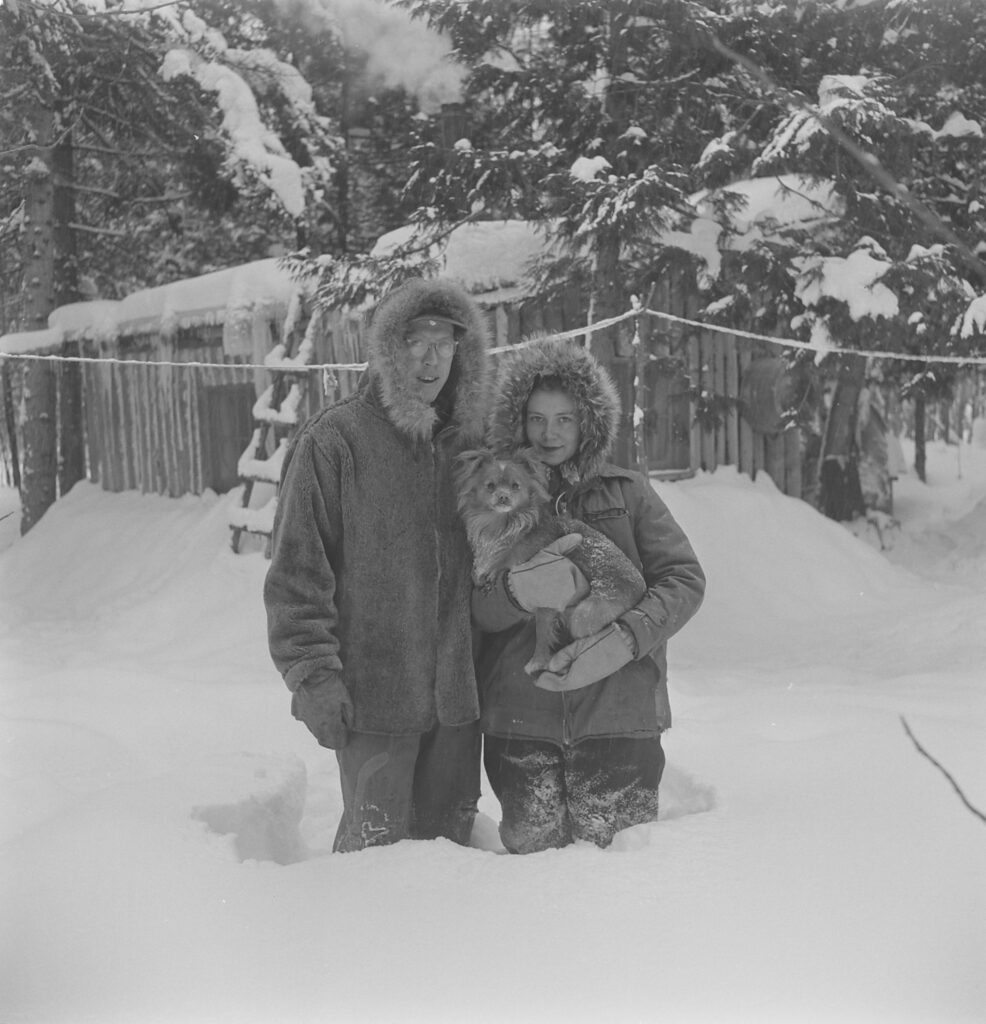
Newlyweds Sid and Skippy Hanson, ages 23 and 19, struggled to keep their cabin warm enough over the winter in Northwest Angle, Minnesota, 1950.
George Silk/LIfe Picture Collection/Shutterstock
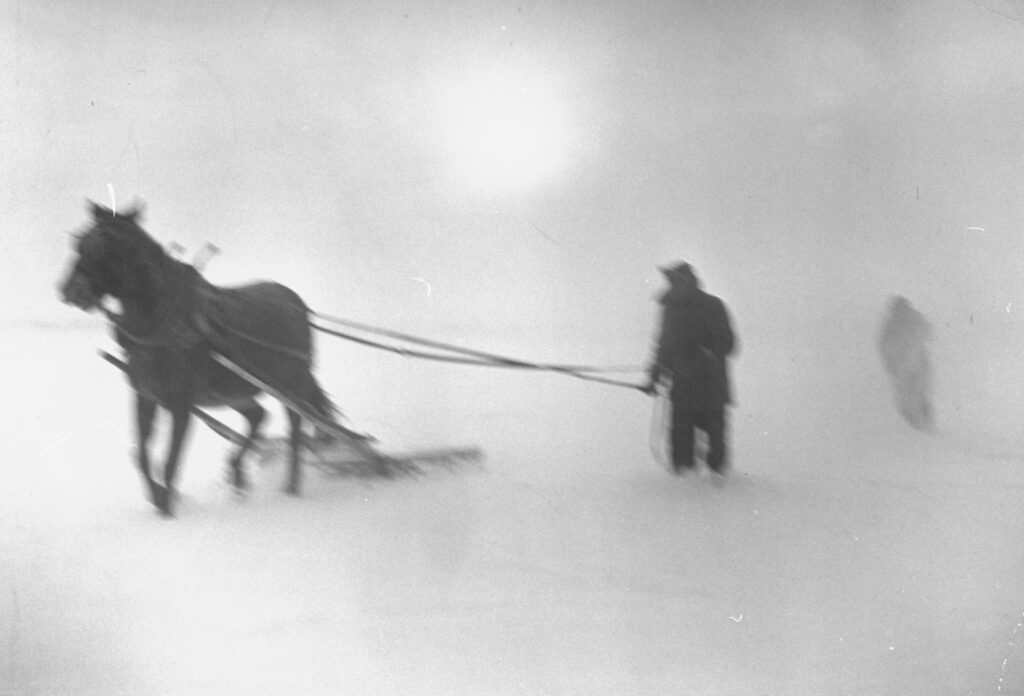
Two Canadians braved the wind and snow to come into Northwest Angle, Minnesota, to buy provisions, 1950.
George Silk/LIfe Picture Collection/Shutterstock
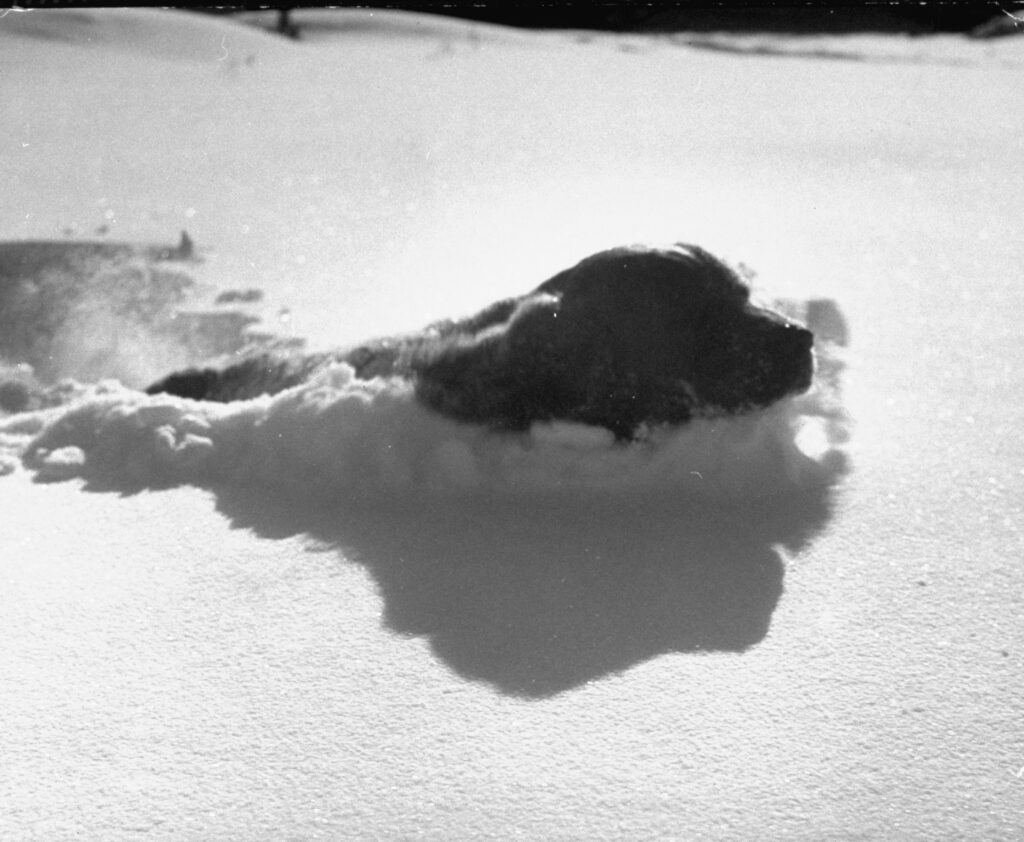
A dog made its way through three-and-a-half feet of snow In Northwest Angle, Minnesota, 1950.
George Silk/LIfe Picture Collection/Shutterstock

A lone lighthouse sat amid a stark frozen landscape during winter in Northwest Angle, Minnesota, 1950.
George Silk/LIfe Picture Collection/Shutterstock
The post Wild and Frozen: Minnesota at Its Coldest and Most Remote appeared first on LIFE.

Savvy ways to stay warm at home without paying more for heating bills
With the colder weather creeping in and the cost of energy bills rising, we’ve taken a look at the best ways to keep yourself warm… The post Savvy ways to stay warm at home without paying more for heating bills appeared first on The Daily […]
Family
With the colder weather creeping in and the cost of energy bills rising, we’ve taken a look at the best ways to keep yourself warm…
The post Savvy ways to stay warm at home without paying more for heating bills appeared first on The Daily Struggle.
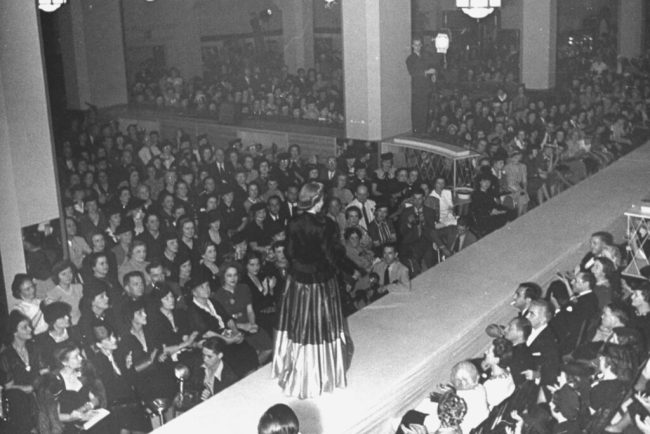
A Lone Star Fashion Show, 1939
LIFE’s coverage of the fashion world inevitably leaned on stories about the latest looks from Paris and New York, but the magazine also cast its eye further afield. Consider its 1939 story on a major show that took place Dallas, whose claim to fame in […]
LifestyleLIFE’s coverage of the fashion world inevitably leaned on stories about the latest looks from Paris and New York, but the magazine also cast its eye further afield. Consider its 1939 story on a major show that took place Dallas, whose claim to fame in the fashion world is that it was the home of the original Neiman Marcus department store. In 1939, according to the report in LIFE, more than 8,000 people flocked to the store in Dallas for an extravaganza that lasted three nights. It was “the most spectacular fashion show ever held in the great Southwest,” LIFE wrote.
And it was quite a scene: “The audience gasped, applauded and made mental notes of $200 costumes and $2,000 fur coats which would soon be bought to complete a winter wardrobe,” LIFE said. When assessing those prices, keep in mind that one dollar in 1939 is the equivalent of about $23 in 2024.
The customers might not have been daunted by those prices because they came to Neiman Marcus with oil money in their pockets, and also a dose of Lone Star pride. LIFE wrote that the wealthy shoppers of Texas ‘”spurn the labels of the great New York houses. Patriotically they prefer to flaunt the label of their great local store.”
LIFE assigned legendary photographer Alfred Eisenstadt to the Neiman Marcus show. While he did shoot the main event, he made more memorable images when he took models away from the runway and onto the streets of Dallas. A woman modeling a Hattie Carnegie dress in the parking lot of the Pig ‘n Whistle makes the point that these models are definitely not in Paris.
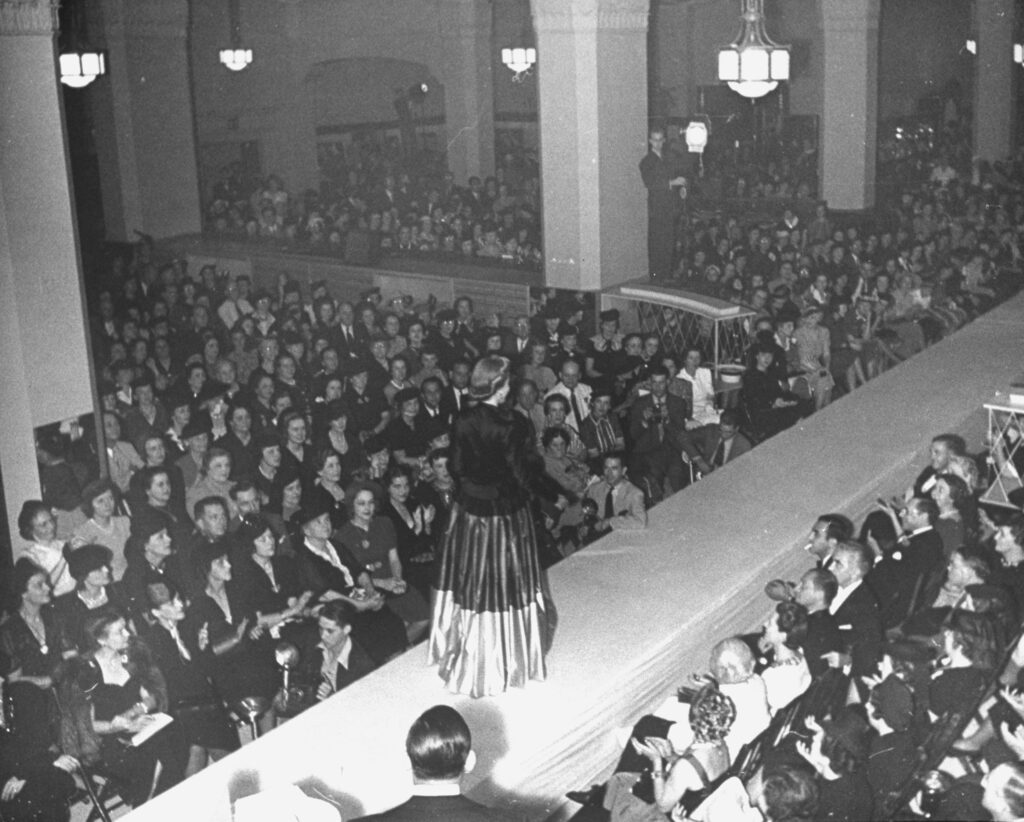
A model walked the runway during a fashion show in Dallas showcasing the fall lines at the Neiman Marcus department store, 1939
Alfred Eisenstaedt/Life Picture Collection/Shutterstock
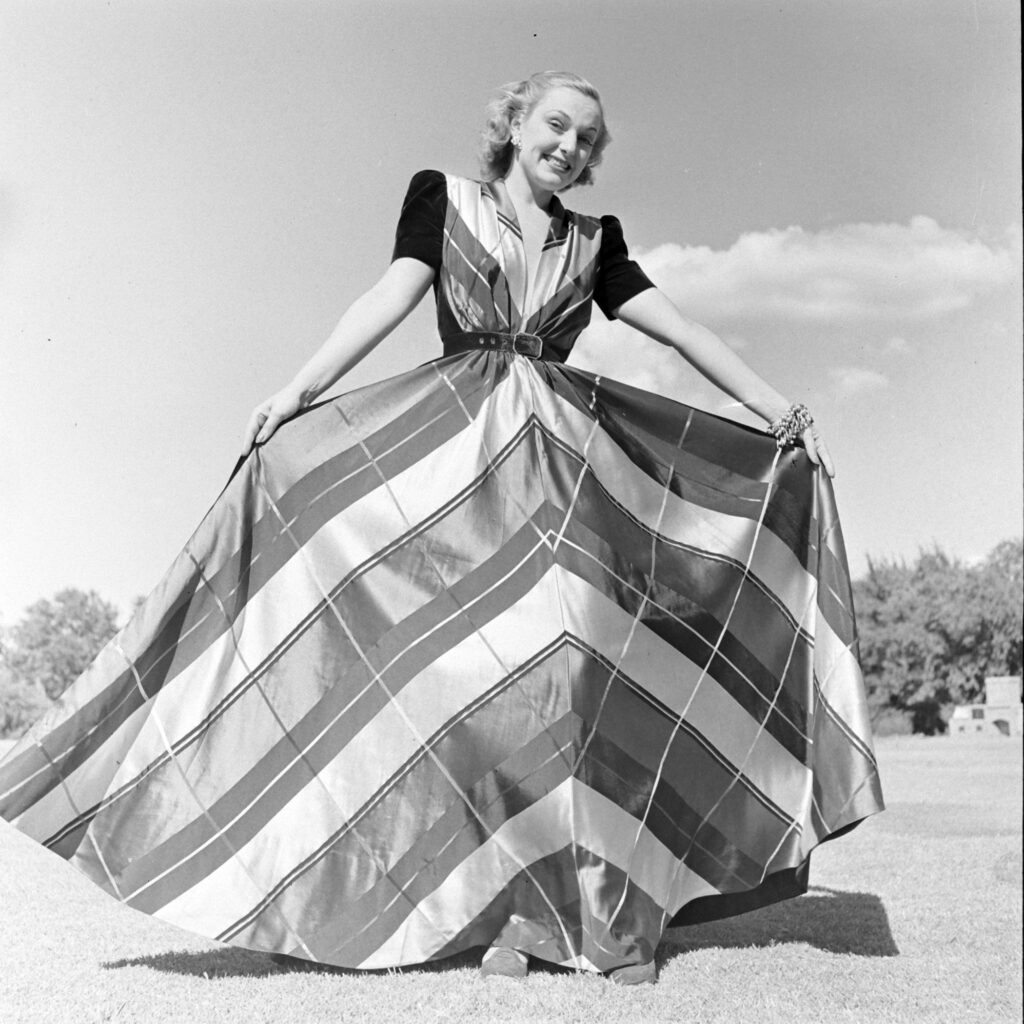
A woman modeled a dress by designer Hattie Carnegie, Texas, 1939.
Alfred Eisenstaedt/Life Picture Collection/Shutterstock
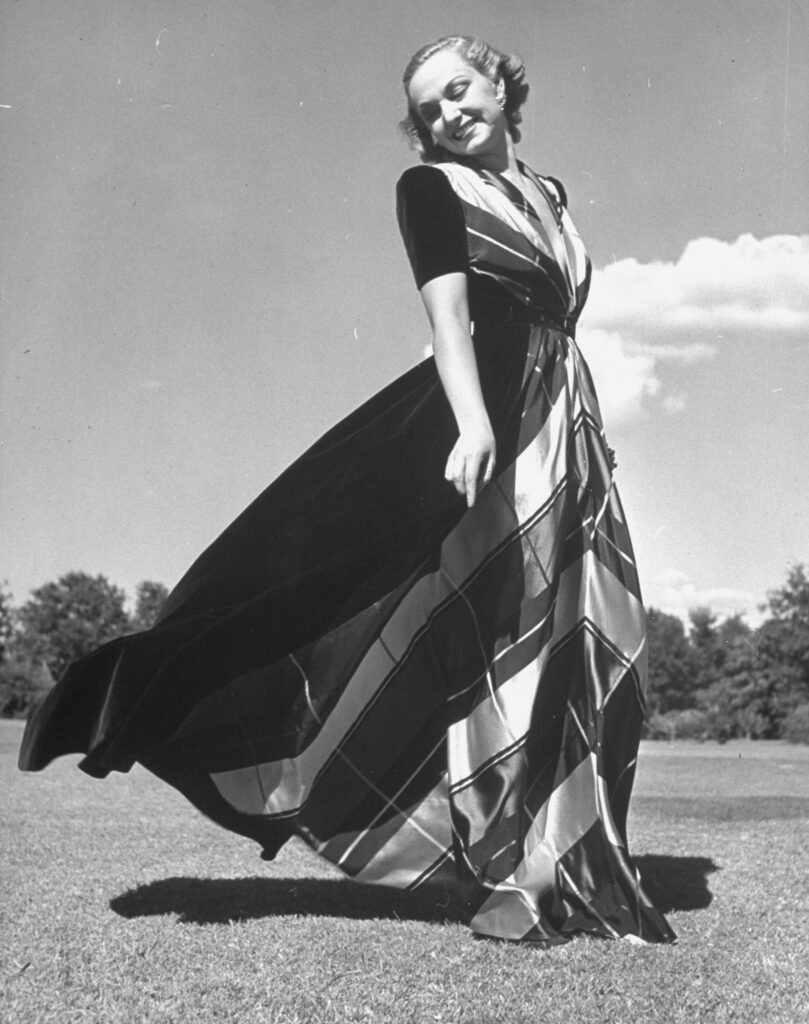
A woman modeled a dress by designer Hattie Carnegie, Texas, 1939.
Alfred Eisenstaedt/Life Picture Collection/Shutterstock
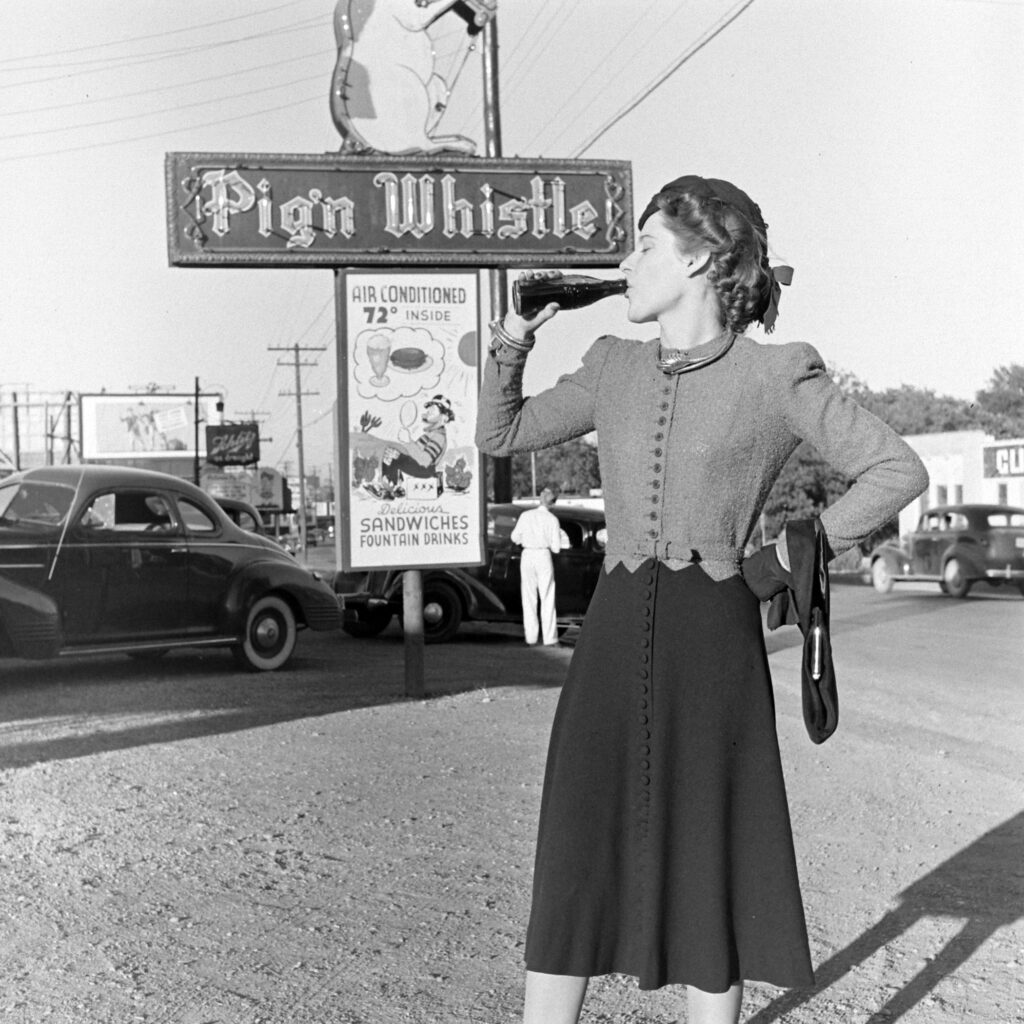
A woman modeled clothes by Hattie Carnegie in Texas, 1939.
Alfred Eisenstaedt/Life Picture Collection/Shutterstock
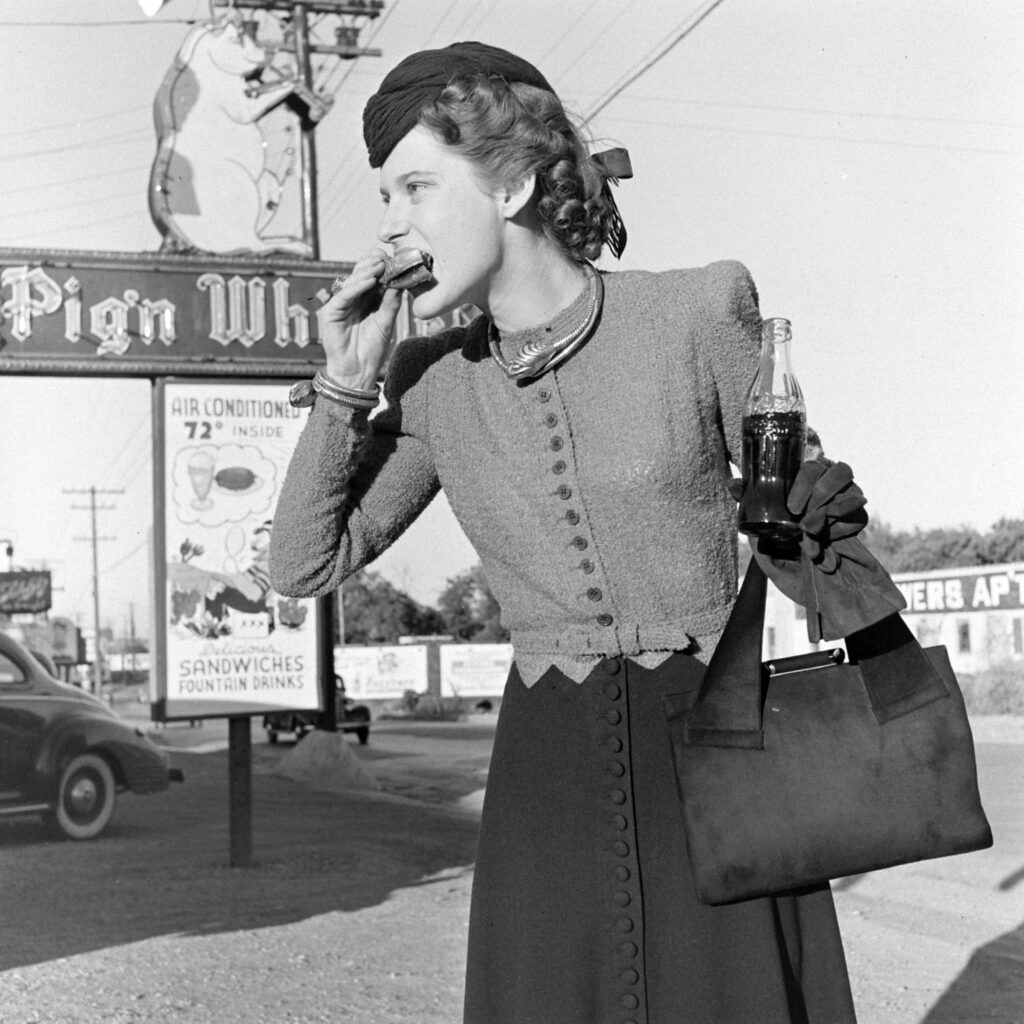
A woman modeled clothes by fashion designer Hattie Carnegie in Dallas, October 1939.
Alfred Eisenstaedt/Life Picture Collection/Shutterstock
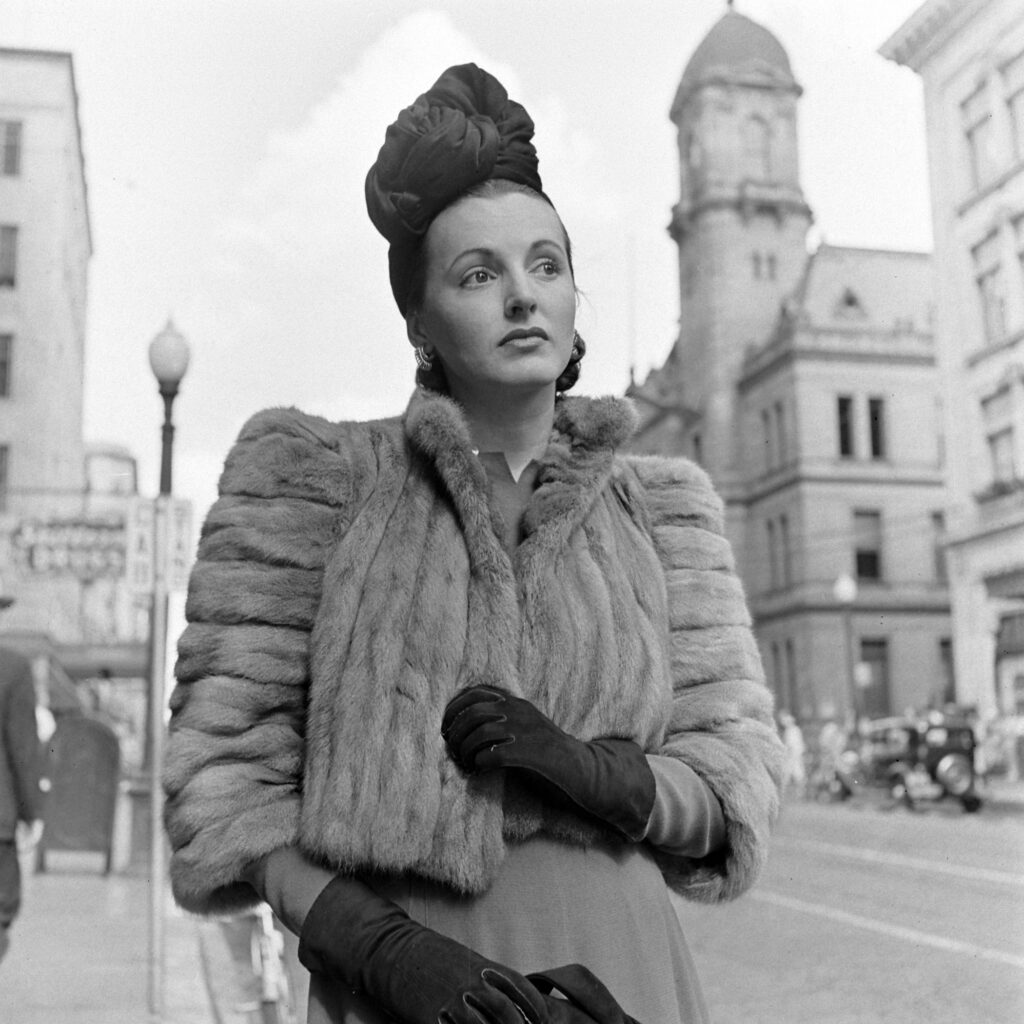
A woman modeled for a story at the new lines available at the Neiman Marcus department store in Dallas, 1939.
Alfred Eisenstaedt/Life Picture Collection/Shutterstock

A woman modeled sheared beaver mantelet and muff, Dallas, October 1939.
Alfred Eisenstaedt/Life Picture Collection/Shutterstock
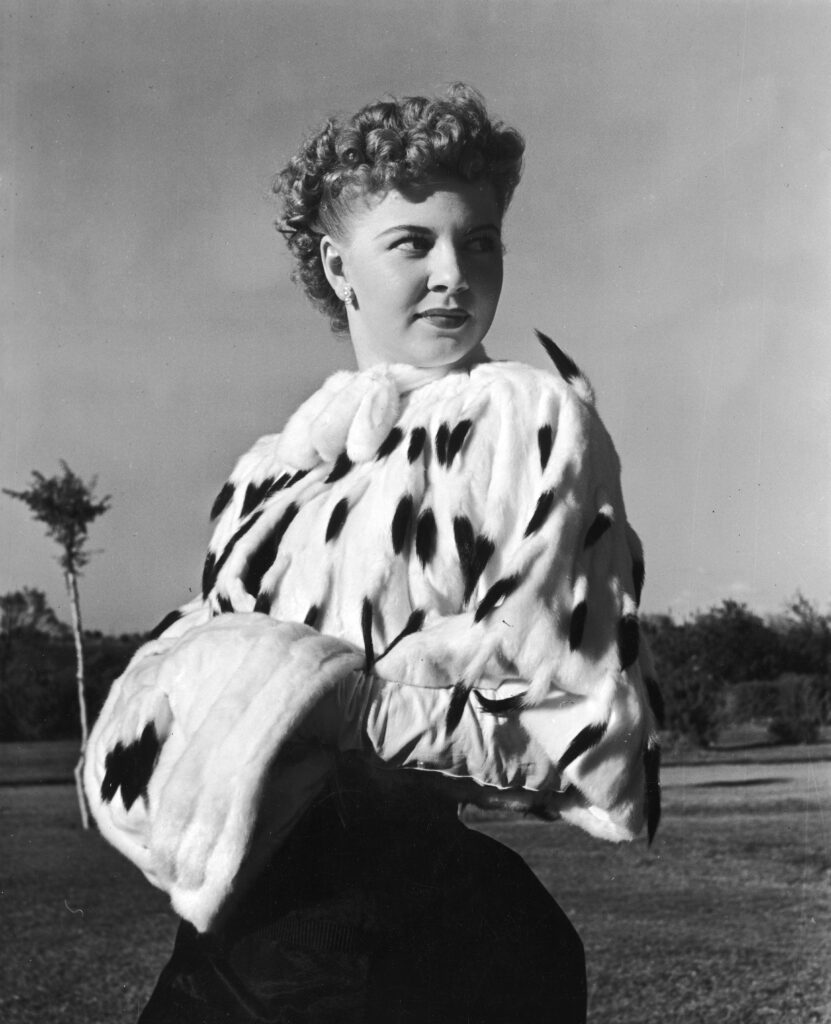
A model wore a Russian ermine mantelet trimmed in ermine tails with muff, Dallas, Texas, October 1939.
Alfred Eisenstaedt/Life Picture Collection/Shutterstock
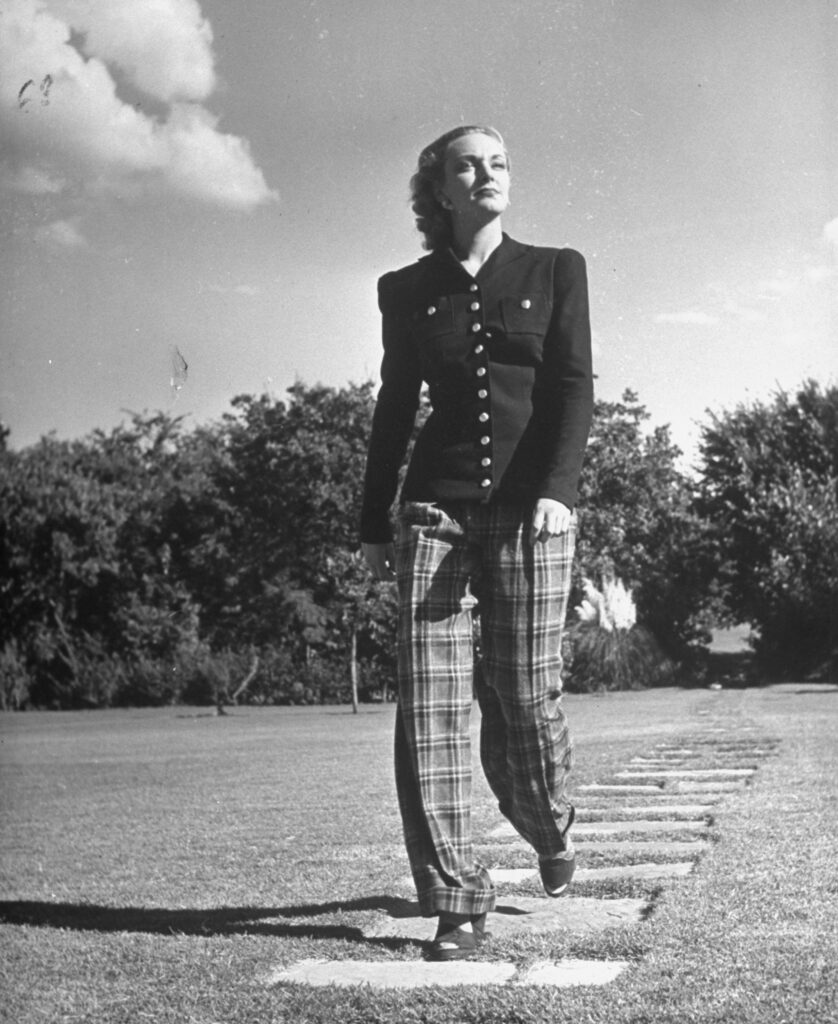
Woman wearing a suit and plaid trouser on sale at Neiman Marcus in Dallas, Texas, October 1939
Alfred Eisenstaedt/Life Picture Collection/Shutterstock
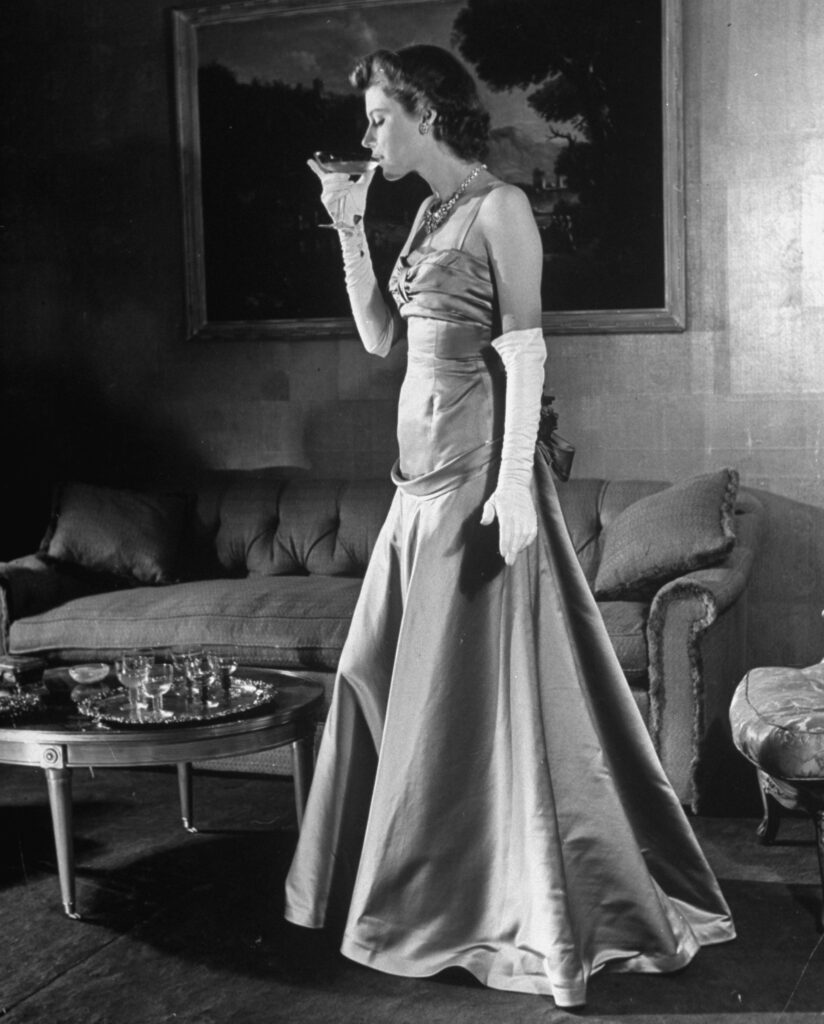
A model wore an elegant gown that was on sale at Neiman Marcus in Dallas, 1939.
Alfred Eisenstaedt/Life Picture Collection/Shutterstock
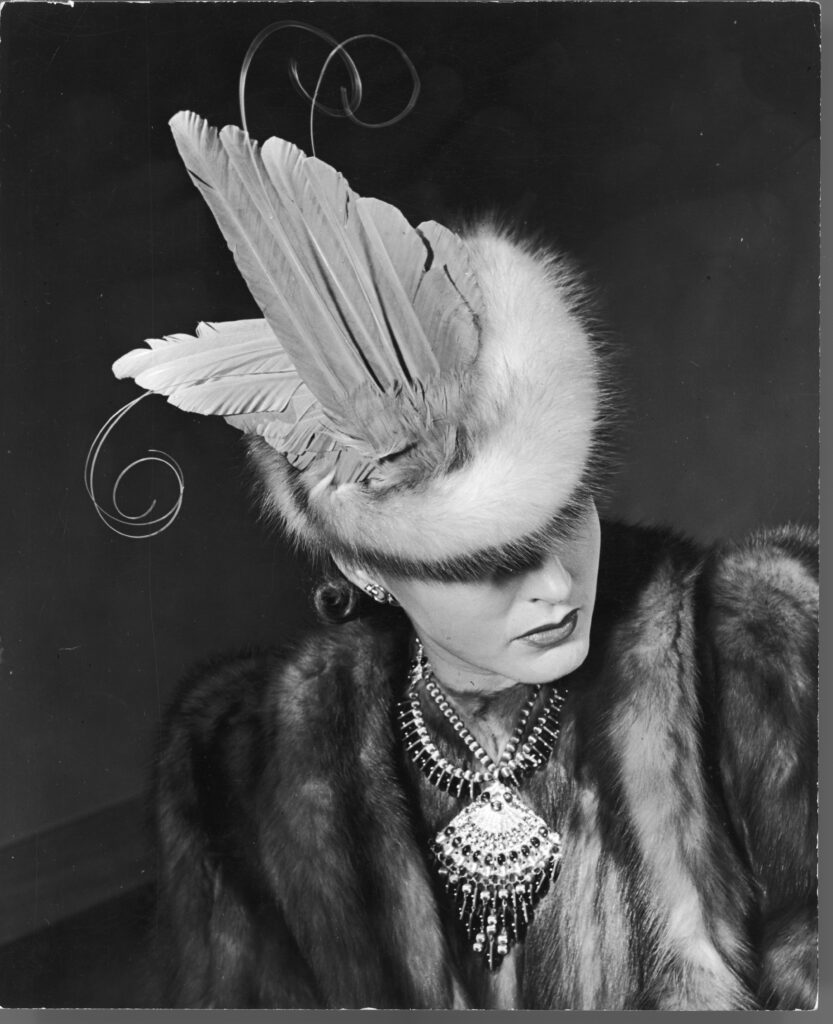
Model wearing sable fur coat with feathered fur hat by designer John Frederics, 1939.
Alfred Eisenstaedt/Life Picture Collection/Shutterstock
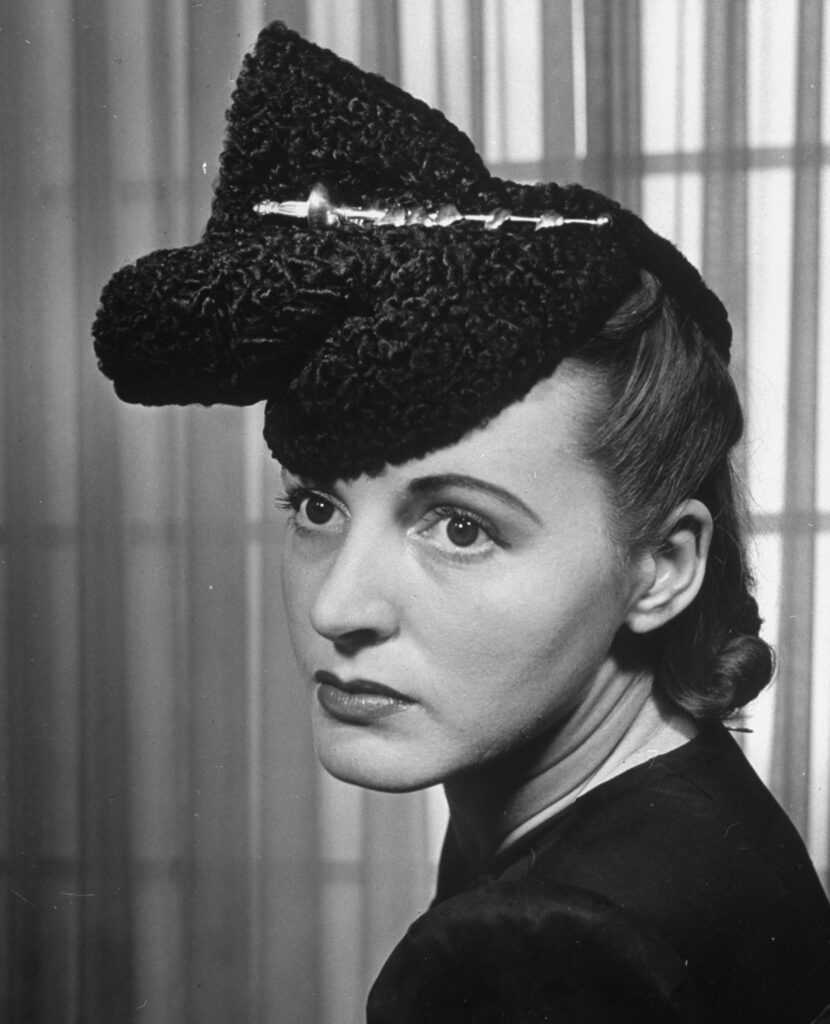
Model wearing Persian lamb hat, for sale at Neiman Marcus for $55 in 1939.
Alfred Eisenstaedt/Life Picture Collection/Shutterstock

A model wore a sweater and trousers on sale at Neiman Marcus, Texas, 1939.
Alfred Eisenstaedt/Life Picture Collection/Shutterstock

A woman modeled harem-hemlined gown at Neiman Marcus in Dallas, Texas, October 1939.
Alfred Eisenstaedt/Life Picture Collection/Shutterstock
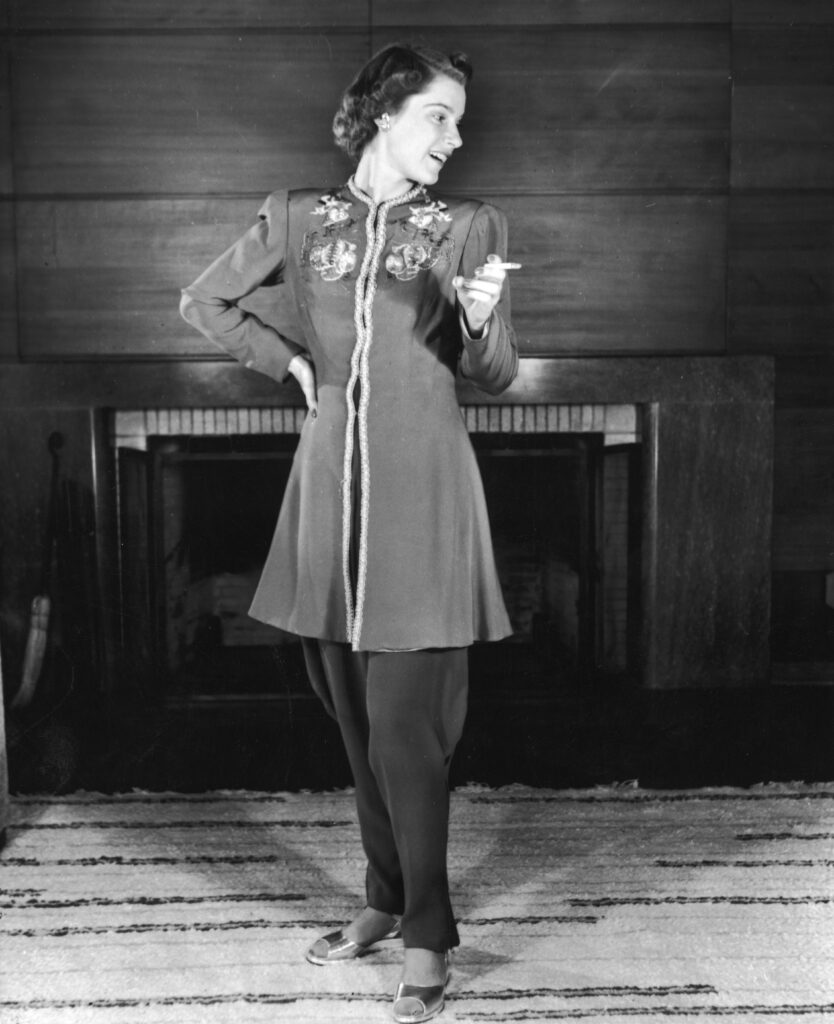
A woman modeled lounging pajamas featuring peg-top trousers like jodpurs for sale at Neiman Marcus for $89.50 in 1939.
Alfred Eisenstaedt/Life Picture Collection/Shutterstock
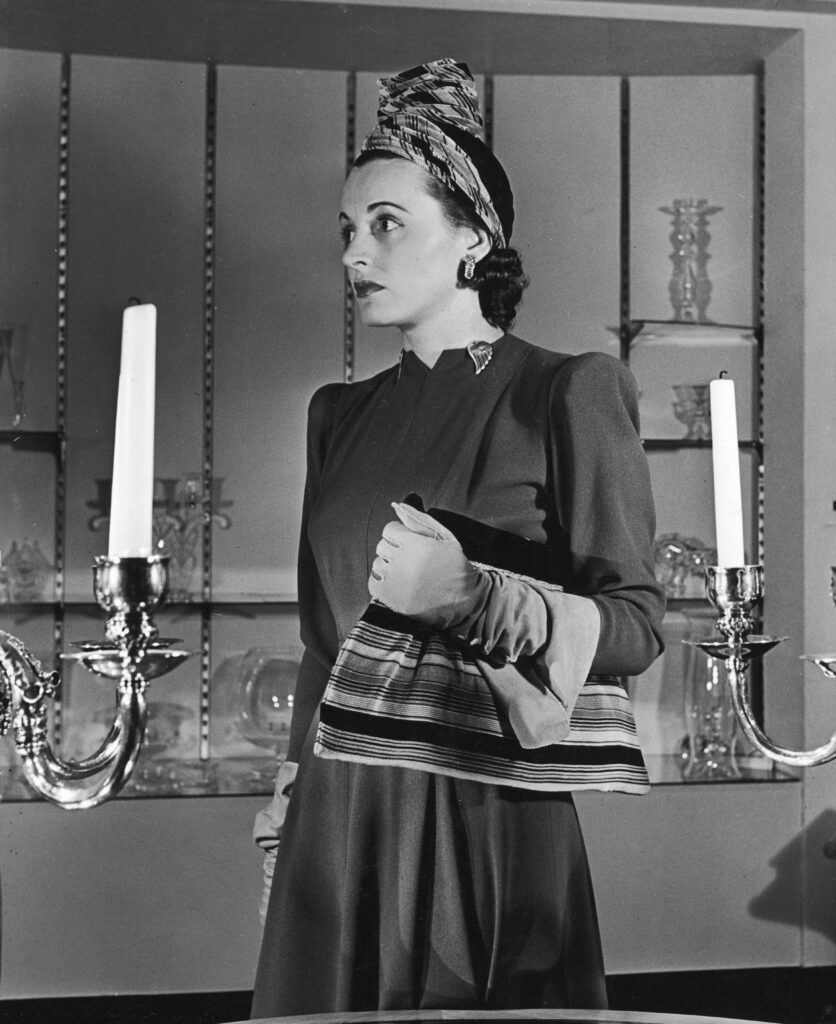
A model wore a $27.75 velvet turban with striped cloth handbag that was for sale at Neiman Marcus store in Dallas, 1939.
Alfred Eisenstaedt/Life Picture Collection/Shutterstock

The wall plaque outside the original Neiman-Marcus store in Dallas, 1939.
Alfred Eisenstaedt/Life Picture Collection/Shutterstock
The post A Lone Star Fashion Show, 1939 appeared first on LIFE.
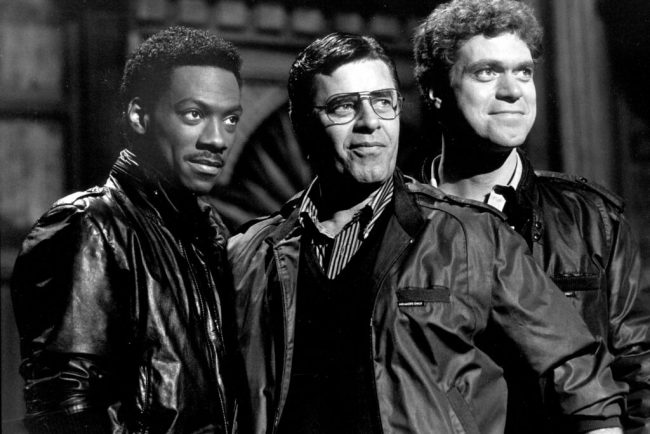
Eddie Murphy: Images of a Star Taking Flight
In its 50 years Saturday Night Live has been the launching pad for a great many stars of movies and television. The list includes Will Ferrell, Bill Murray, Adam Sander, Tina Fey, Amy Poehler, Kristen Wiig, Chevy Chase, Mike Myers, Chris Rock, and many, many […]
PeopleIn its 50 years Saturday Night Live has been the launching pad for a great many stars of movies and television. The list includes Will Ferrell, Bill Murray, Adam Sander, Tina Fey, Amy Poehler, Kristen Wiig, Chevy Chase, Mike Myers, Chris Rock, and many, many more (John Belushi, Dan Aykoryd, Kate McKinnon, David Spade, Chris Farley, Bill Hader….)
But none of these stars skyrocketed as high or as fast as Eddie Murphy. He debuted on Saturday Night Live in 1980, at the remarkable age of 19, and quickly caught fire behind the strength of such characters as Mr. Robinson, Buckwheat and Gumby. He then capitalized on that popularity with a string of hit movies that included 48 Hours, Trading Places and Beverly Hills Cop. Not to mention his wildly popular 1983 standup special Delirious.
Photos in the LIFE archive capture the public life of a young man taking flight. He is photographed in the company of such luminaries as Jerry Lewis, Liza Minelli, Michael Jackson, Sylvester Stallone, Rick James, Luther Vandross, Jamie Lee Curtis and Arsenio Hall.
The paparazzi shots are telling, and so are the images in this collection that were shot for LIFE by Ted Thai. For those photos Murphy posed shirtless, with track pants and a ball cap. If you saw those pictures without knowing why Murphy was famous, you might guess that he was an athlete—and that comparison is appropriate. He was the comedy equivalent of another 1980s contemporary, Michael Jordan, a young man electrifying the stage with his prodigal talent.
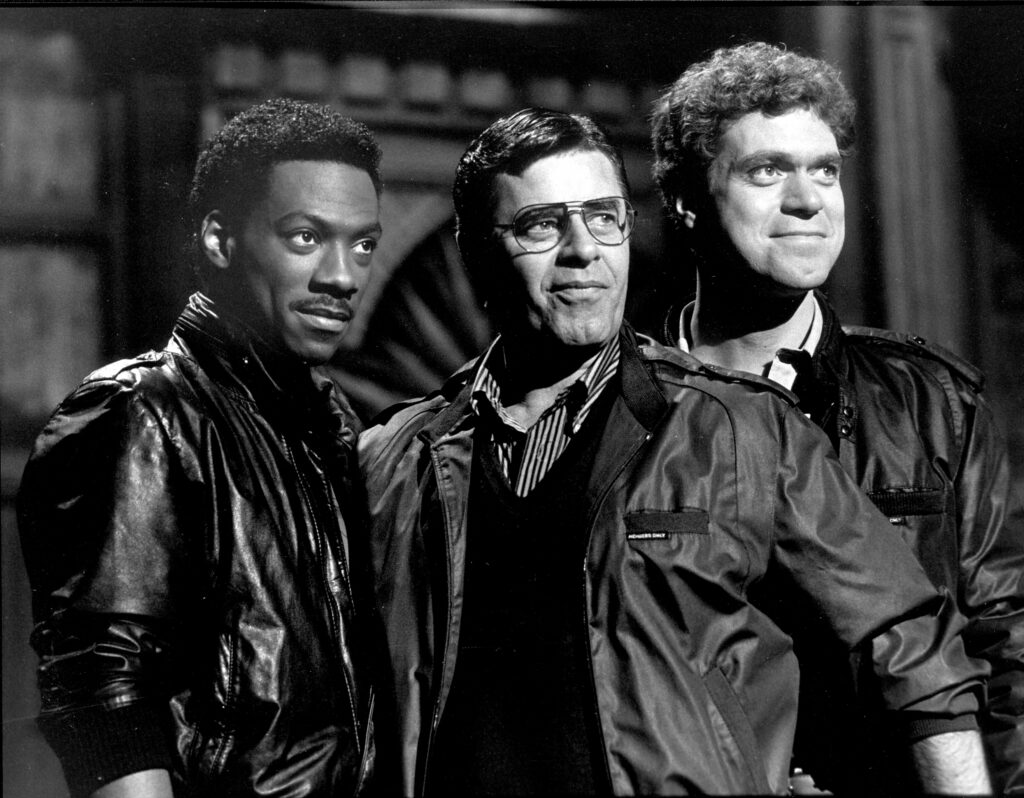
Cast members Eddie Murphy (left) and Joe Piscopo (right) appearing with guest Jerry Lewis on Saturday Night Live, 1984.
DMI/Shutterstock
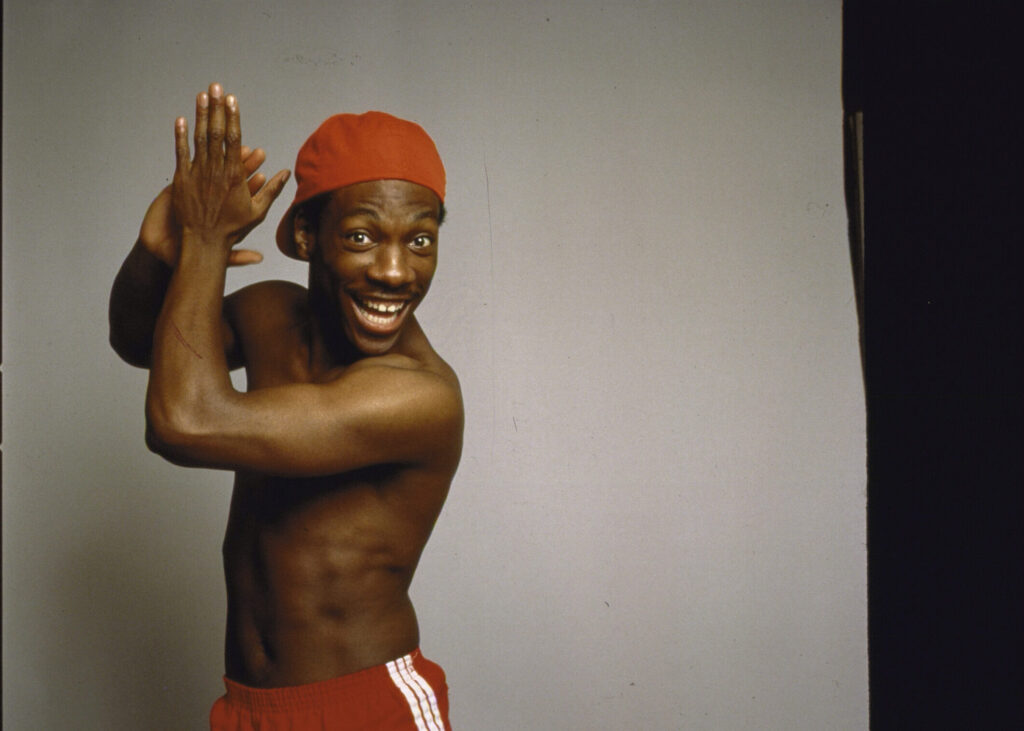
Comedian Eddie Murphy, 1983
Ted Thai/LIfe Picture Collection/Shutterstock
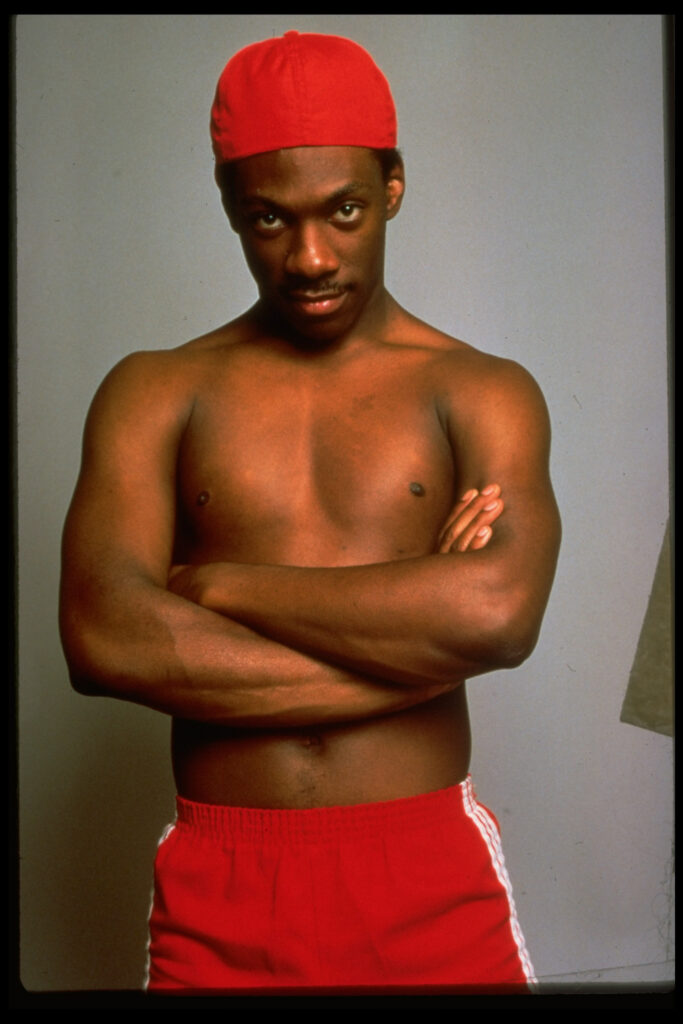
Eddie Murphy
Ted Thai/Life Picture Collection/Shutterstock
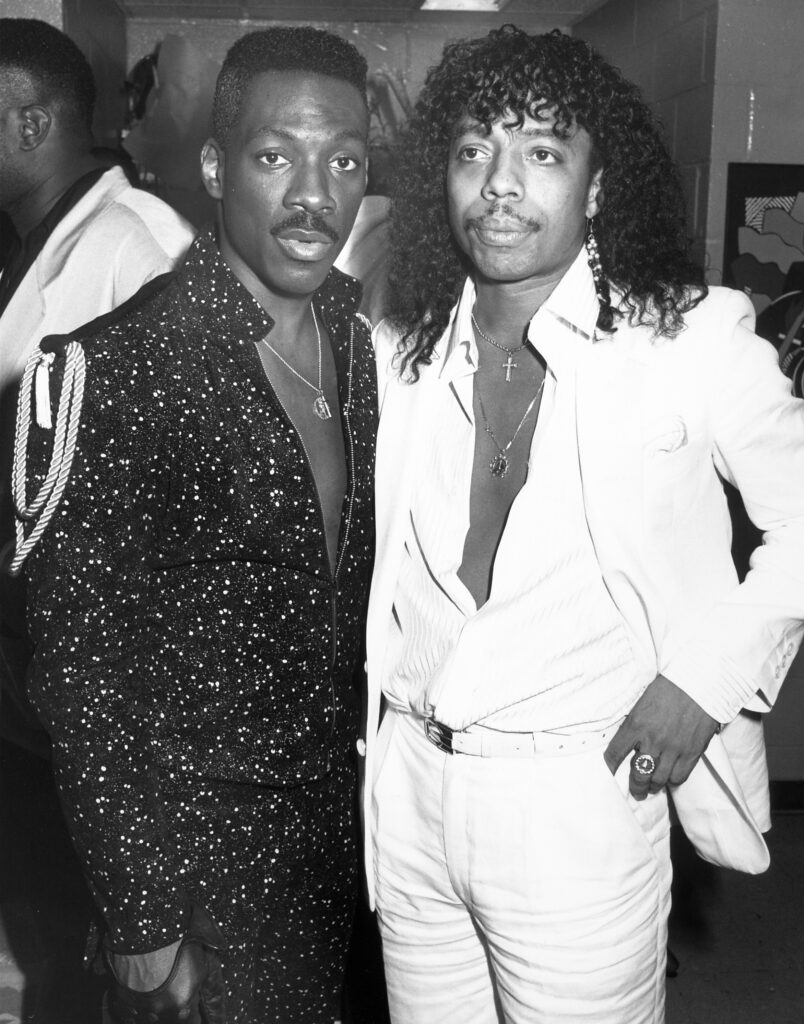
Comedian Eddie Murphy (left) and singer Rick James following Murphy’s performance at Madison Square Garden, 1986.
David Mcgough/Life Picture Collection/Shutterstock
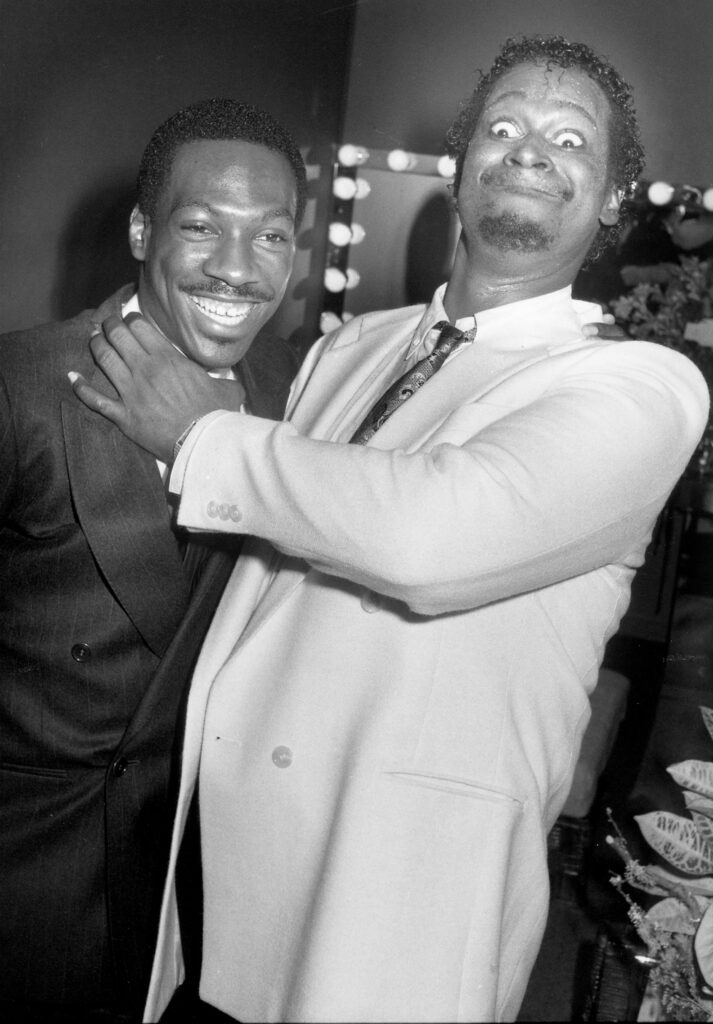
Eddie Murphy and singer Luther Vandross after Vandross’ performance at Radio City Music Hall, 1985.
DAVID MCGOUGH/DMI
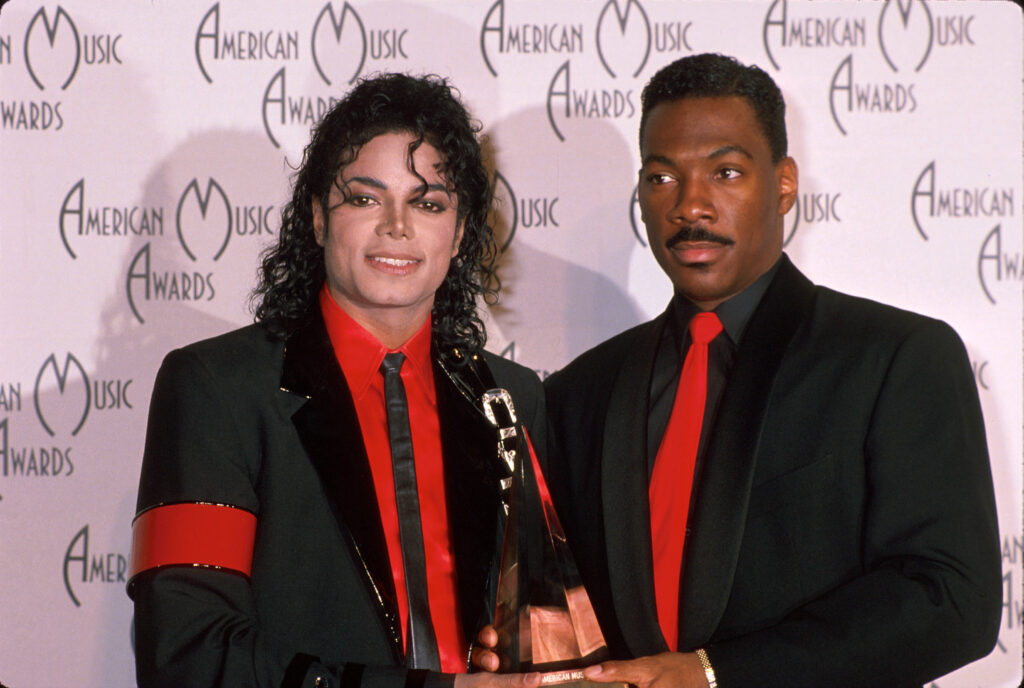
Singer Michael Jackson and actor Eddie Murphy in Press Room at American Music Awards, 1989.
Kevin Winter/DMI

Sylvester Stallone and Eddie Murphy, 1991.
DMI
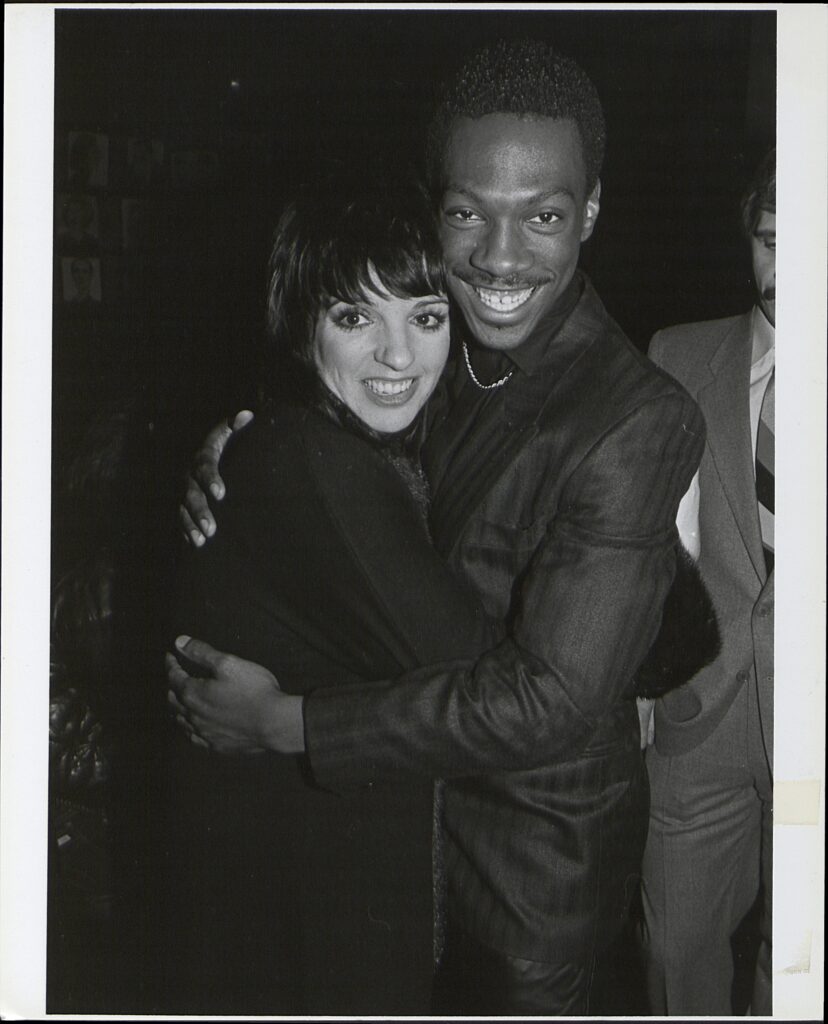
Eddie Murphy with Liza Minelli, 1990.
DMI
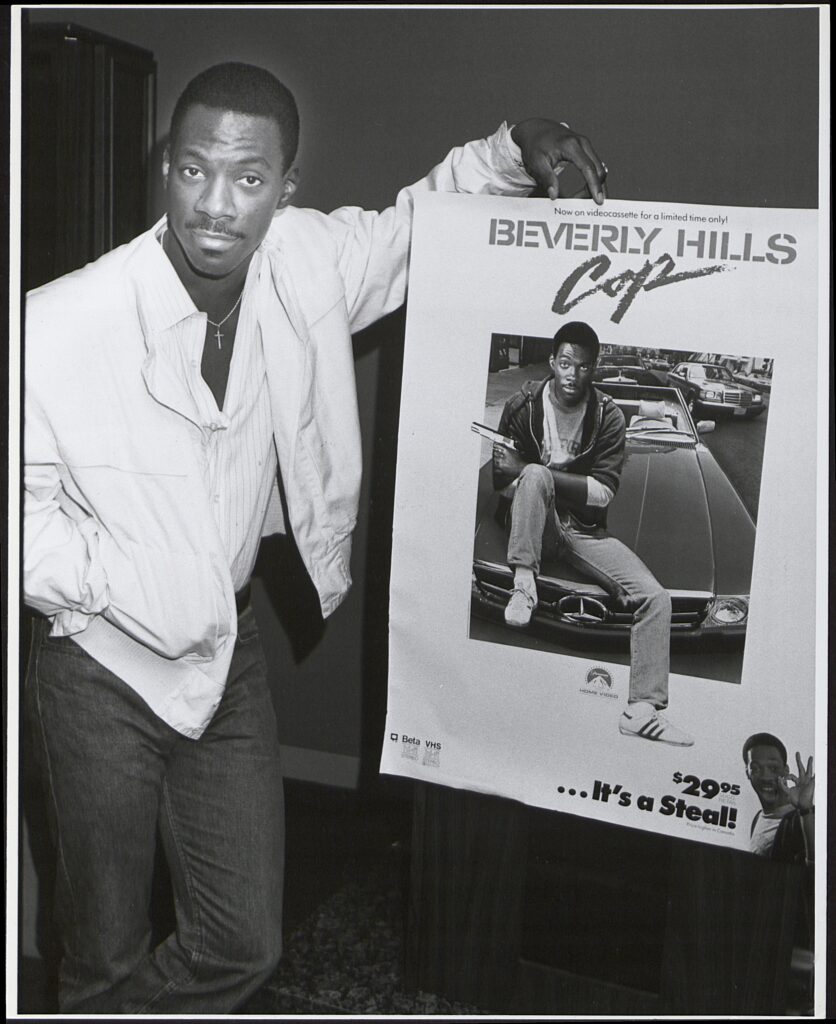
Eddie Murphy posed with the poster of his hit comedy Beverly Hills Cop.
DMI
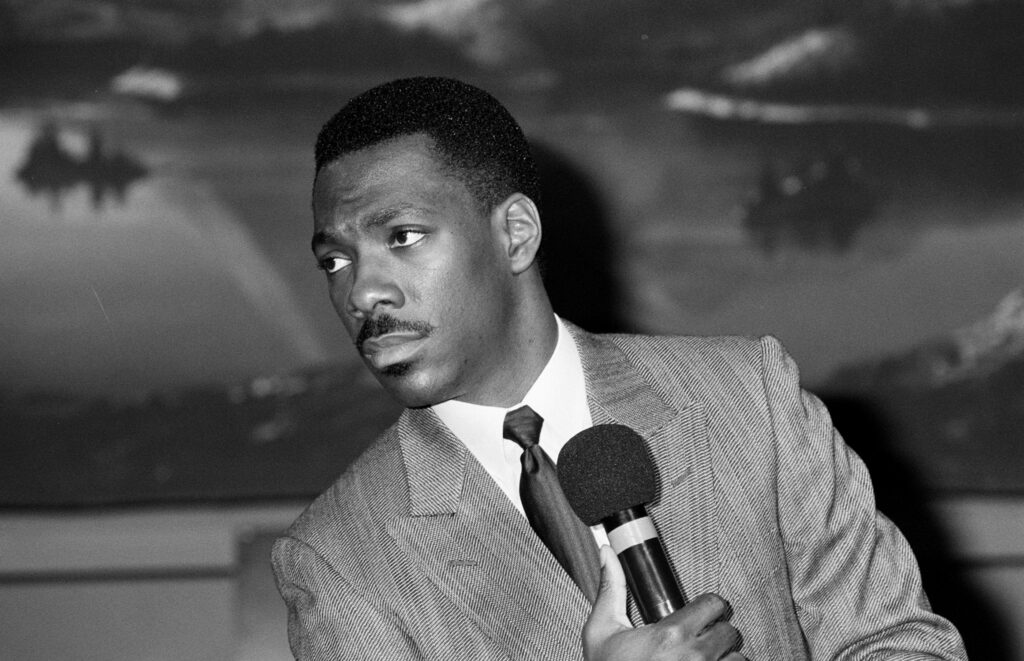
Eddie Murphy, 1987.
DMI
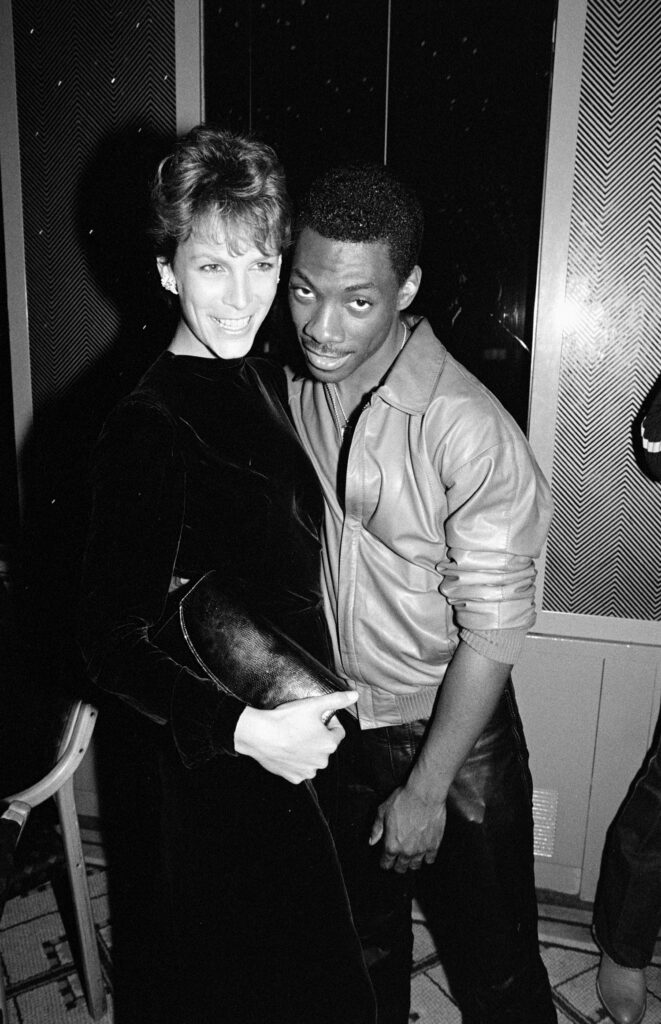
Jamie Lee Curtis and Eddie Murphy, co-stars of the film Trading Places, in 1993.
DMI
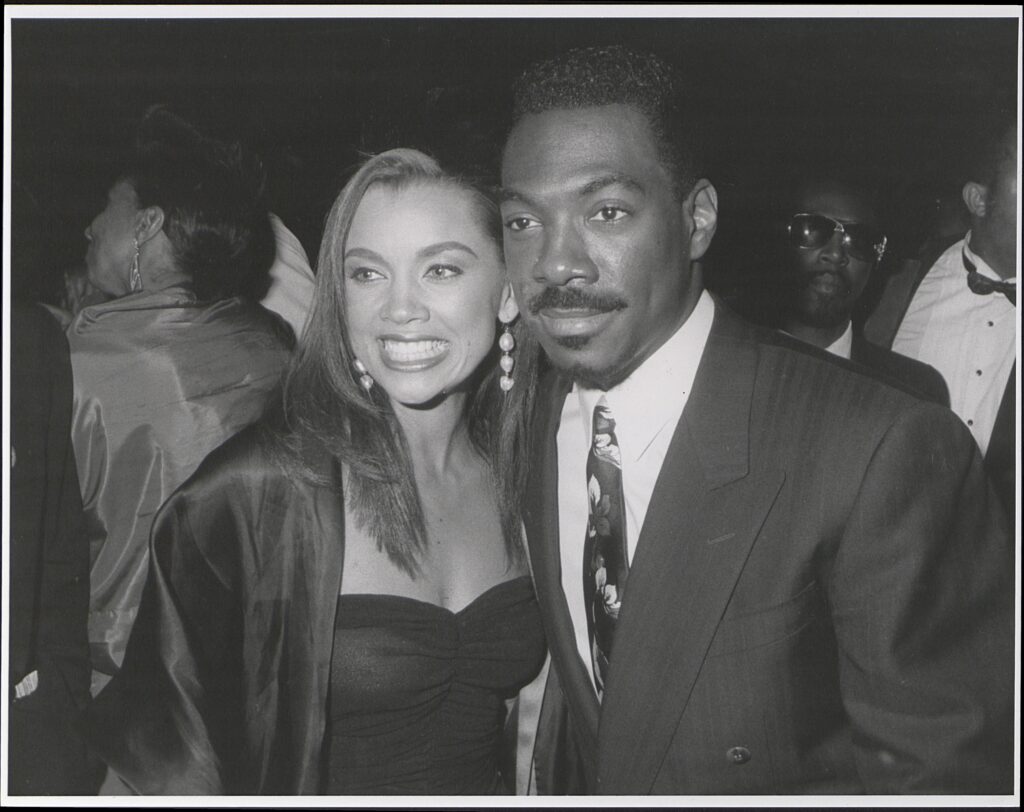
Eddie Murphy with Vanessa Williams.
DMI
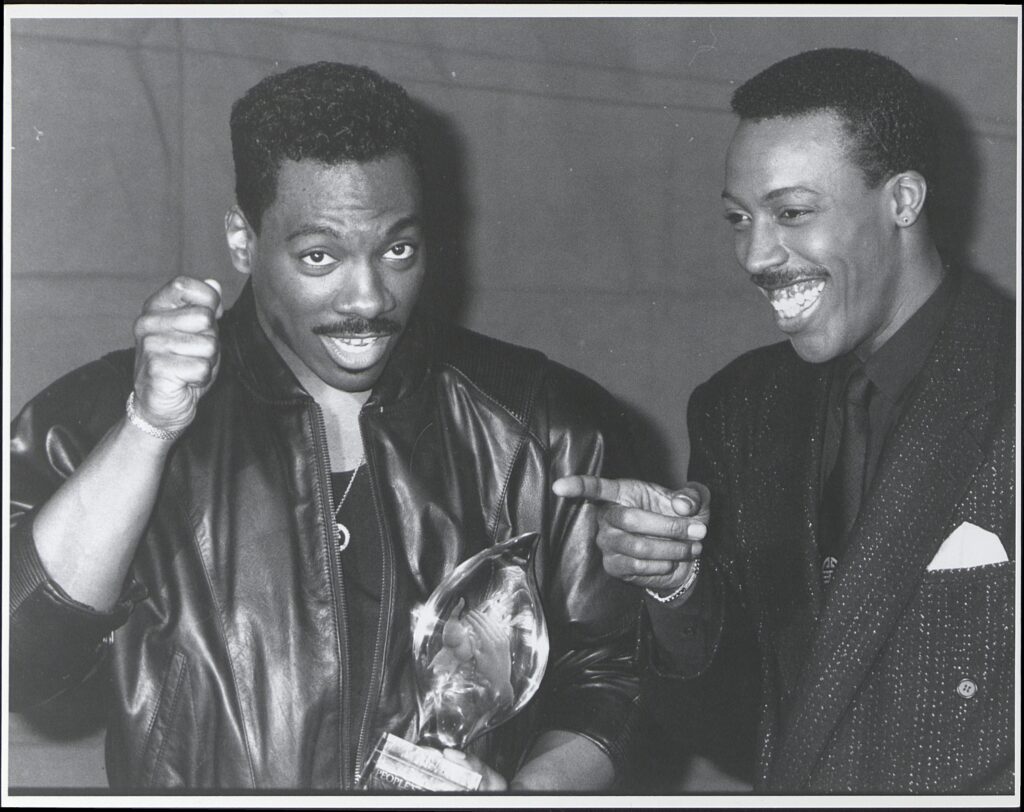
Eddie Murphy with talk show host Arsenio Hall, 1990.
DMI
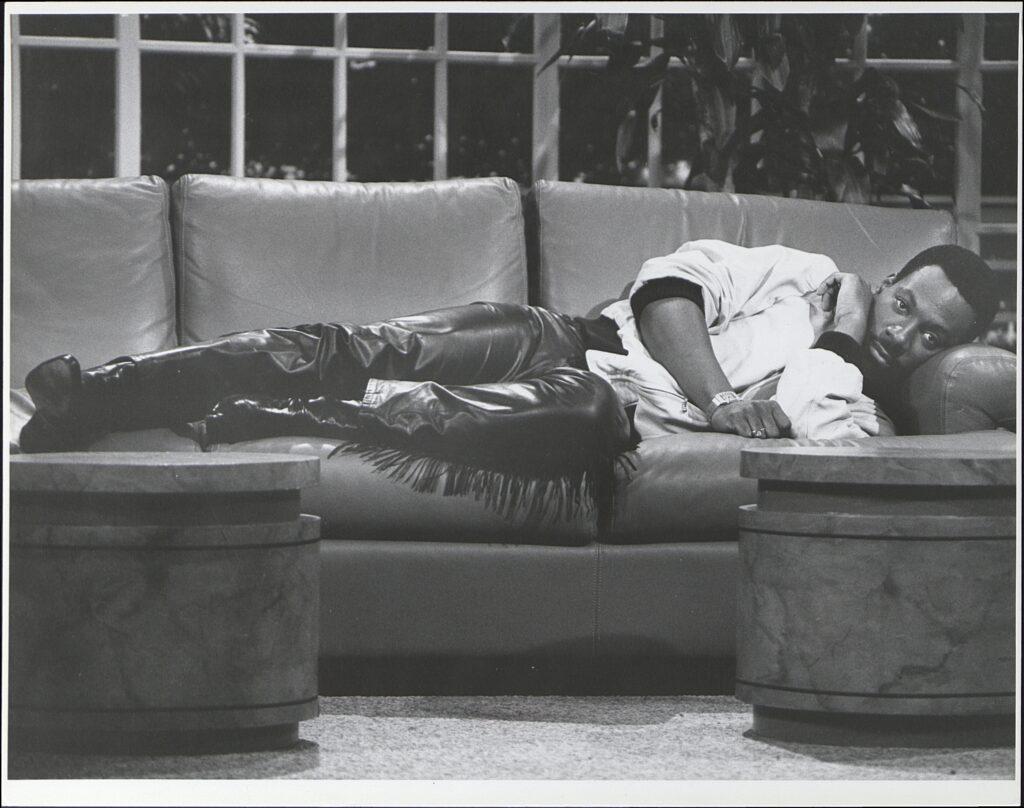
Eddie Murphy, 1990.
DMI
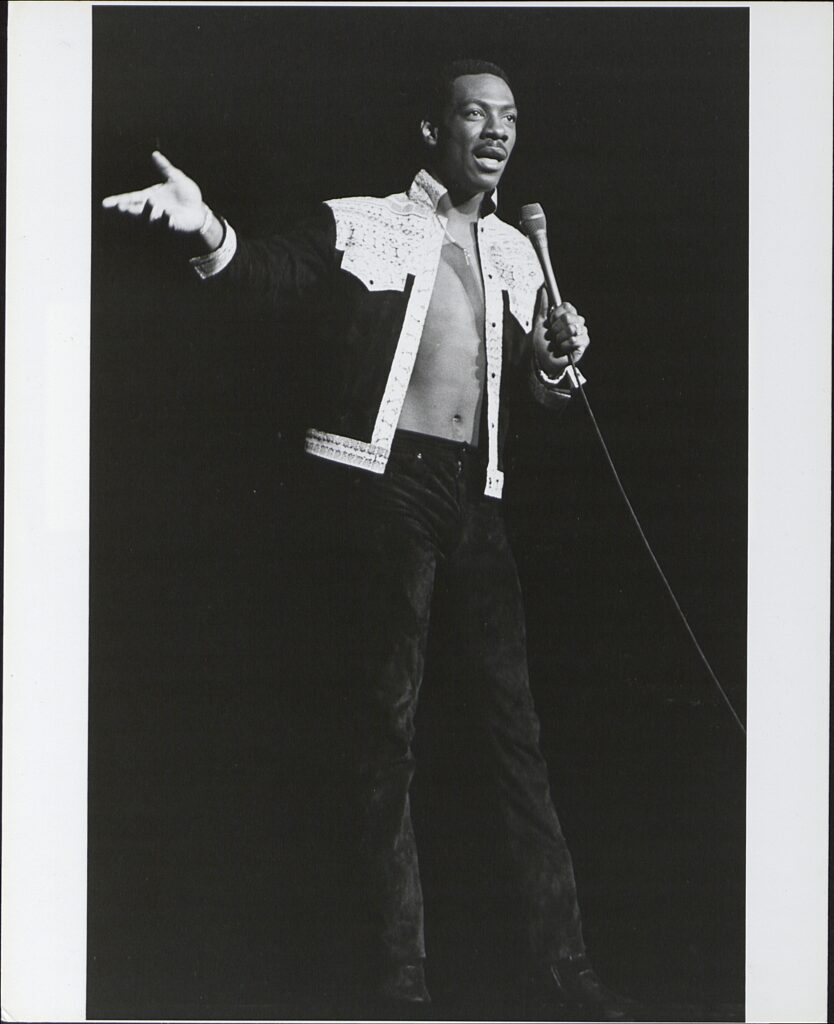
Eddie Murphy, 1990.
DMI
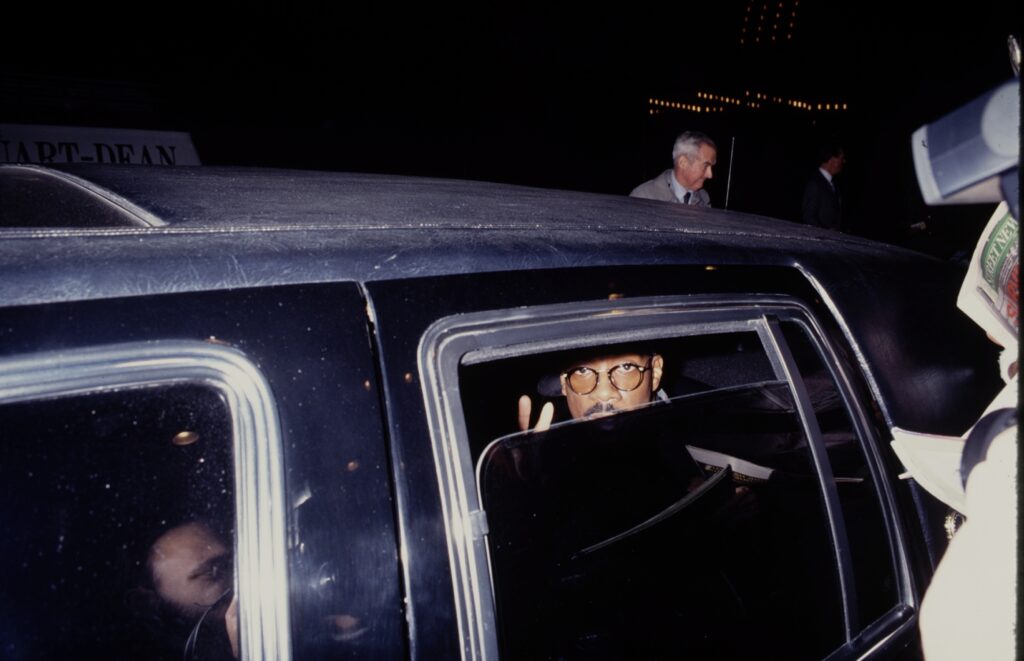
Eddie Murphy
DMI
The post Eddie Murphy: Images of a Star Taking Flight appeared first on LIFE.

Michael Jordan: The One and Only
The following is excerpted from LIFE’s new special issue Michael Jordan: The Greatest of All Time, available at newsstands and here online. When it dropped in the mid-’90s, the 30-second spot felt like just another quick and clever Nike ad, though if you go back […]
PeopleThe following is excerpted from LIFE’s new special issue Michael Jordan: The Greatest of All Time, available at newsstands and here online.
When it dropped in the mid-’90s, the 30-second spot felt like just another quick and clever Nike ad, though if you go back now and watch “The Hundred-Foot Hoop,” it seems to speak to us on several levels. At the fade-in, we see a basket hanging mercilessly high in a dimly lit warehouse. The storyline, at least initially, is simple: Michael Jordan enters, dribbling, then, looking grim but confident, drives in and up (and up) for the unmakeable but of course inevitable jam. The spoonful of message—that the man inside those supercool shoes can perform superhuman feats—went down without question back then, when Jordan was still in his Chicago Bulls prime and on a nightly basis redefining what was possible in the game of basketball. But the commercial doesn’t stop there.
In a spasm of celebratory ecstasy, our hero, we see, has grabbed onto the rim, as slam-dunkers do, and now finds himself swinging slowly above the hardwood at an unsafe altitude. The moment of triumph has passed. Jordan first looks down, then at us, the audience that he always wanted to impress. He does not speak, but his big brown eyes pose an excellent question: “Where do I go from here?”
Michael Jeffrey Jordan was a skinny middle-class kid from Wilmington, North Carolina, who put aside the doubters—no, who used the doubters who appeared at every stage—to have himself a storybook career. His breakthrough came in the spring of 1982, when, in a game played in the Louisiana Superdome against Patrick Ewing and the Georgetown Hoyas,
he hit an electrifying jumper with 15 seconds left to give his Carolina Tar Heels the National Championship. “Your life will never be the same after that shot, son,” his father, James, told him soon afterward.
A few years later, Jordan revitalized the Bulls, a motley bunch that played in a dreary, half-empty arena, a team that according to its owner was regarded by Chicagoans as “somewhere between mud wrestling and tractor pulling,” eventually leading them to six NBA championships. Along the way, Jordan took the excitement generated by Larry Bird and Magic Johnson—stars a few years ahead of him—and brought it to a new level, helping shake the NBA out of its 1970s doldrums and usher its players and franchises onto an international stage. In Jordan’s spare time, he revolutionized the sneaker business.
Jordan broke into the league exactly 40 years ago, in the fall of 1984, and he left it for good in the spring of 2003. Over a 15-season playing career, he won 10 scoring titles, five MVP awards, and six Finals MVP awards, and he was named to the All-Defensive first team nine times. He played in 14 NBA All-Star Games and, competing against Bird, Johnson, Kareem Abdul-Jabbar, Shaquille O’Neal, and others in the pantheon of basketball gods, won three All-Star MVP trophies. He has the highest regular-season career scoring average and career playoff scoring average of all time (30.1 and 33.4 points per game, respectively). Numb yet? After a point, even such incomparable statistics don’t capture all of the player Jordan was. They say nothing about the way he did what he did, the rampaging love of the game he always demonstrated, or the role he played in the larger popular culture—the very things that made him the man and the brand we know and love.
Here is a selection of images from LIFE’s new special issue Michael Jordan: The Greatest of All Time.

Cover photo by Jerry Wachter/NBAE/Getty

Michael Jordan in his freshman year at North Carolina, January 1982.
Bettmann Archive

Michael Jordan, with Chicago Bulls general manager Rod Thorn, signed his first NBA contract in 1984.
Bettmann Archive
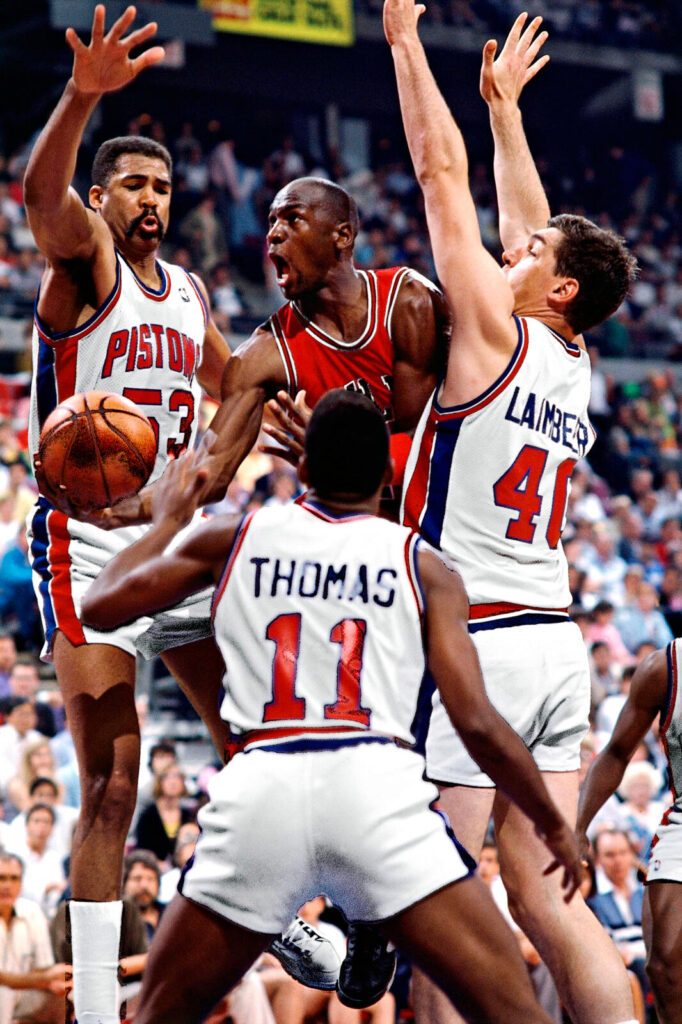
Michael Jordan in 1989 took on the Detroit Pistons, a team that served as an early foil on his way to the top.
Photo by Andrew D. Bernstein/NBAE via Getty Images
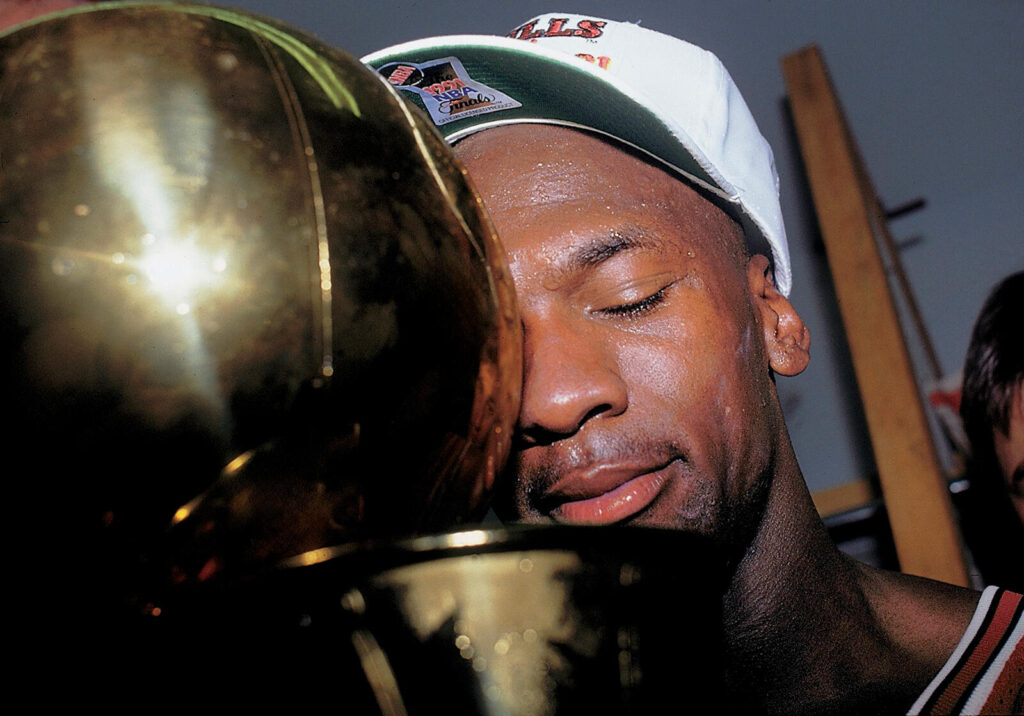
Michael Jordan celebrated winning his first NBA title in 1991.
Richard Mackson/Sports Illustrated via Getty Images

Michael Jordan led the Dream Team to a gold medal at the 1992 Summer Olympics in Barcelona.
Richard Mackson/Sports Illustrated via Getty Images
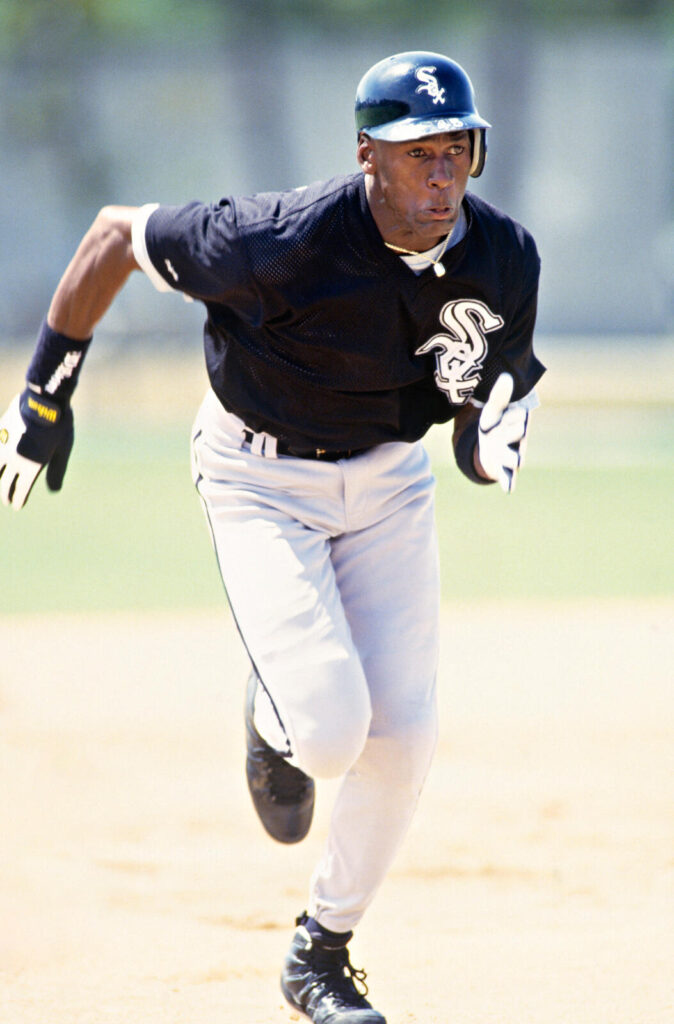
Michael Jordan in 1994, when he took time off from the NBA and tried his hand at minor-league baseball with the Birmingham Barons.
Photo by Focus On Sport/Getty Images

Michael Jordan, when he returned to the NBA following his time in minor league baseball, briefly wore No. 45 before returning to his familiar No. 23.
NBAE via Getty Images

Michael Jordan in 2003, his final season.
Simon Bruty/Anychance/Getty Images

Michael Jordan waved farewell after playing his final NBA game in April 2003, when he was a member of the Washington Wizards.
Nathaniel S. Butler/NBAE via Getty Images

Michael Jordan, representing his Jordan Brand, visited Paris in 2015 to celebrate the 30th anniversary of his signature Air Jordan shoe.
Jordan Brand via Getty Images
The post Michael Jordan: The One and Only appeared first on LIFE.

Educational toys for toddlers & babies
In today’s fast-paced world, it’s more important than ever to provide our children with opportunities for learning and growth, even from the earliest stages of… The post Educational toys for toddlers & babies appeared first on The Daily Struggle.
Family
In today’s fast-paced world, it’s more important than ever to provide our children with opportunities for learning and growth, even from the earliest stages of…
The post Educational toys for toddlers & babies appeared first on The Daily Struggle.
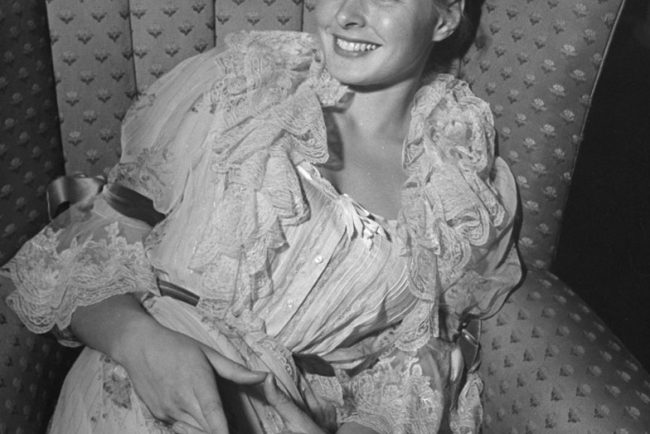
LIFE With Ingrid Bergman
More than most stars of her rare magnitude, Ingrid Bergman was an actress who went her own way. A Hollywood luminary for decades, from the Thirties well into the Seventies, the Swedish-born beauty acted in films that not only entertained millions but that also satisfied […]
PeopleMore than most stars of her rare magnitude, Ingrid Bergman was an actress who went her own way. A Hollywood luminary for decades, from the Thirties well into the Seventies, the Swedish-born beauty acted in films that not only entertained millions but that also satisfied her own, personal need to constantly test and broaden the limits of her craft.
In 1943, for example, she told LIFE magazine, “I am an actress and I am interested in acting, not in making money.” Coming from almost anyone else in her position, that might sound like a public relations platitude. But even at that relatively early point in her career, Bergman had already proven herself a singularly versatile artist, with solid and even iconic performances in films ranging from psychological thrillers (Rage in Heaven) to horror (Dr. Jekyll and Mr. Hyde) to romance (Intermezzo) to arguably the very greatest of all American movies, the 1942 Best Picture Oscar winner, Casablanca.
Bergman won three acting Oscars during her long career (two for Best Actress, in Gaslight and Anastasia, and one for Best Supporting Actress for her role in 1974’s star-studded Murder on the Orient Express), and was nominated four more times. She also won Emmys, a Tony, Golden Globe and New York Film Critics Circle awards in other words, she proved again and again that she could act as well as star in almost any role, on film, stage and the small screen.
And for pretty much all of those years that she lit up the screen and the stage with her combustible mix of intellect, emotional honesty and sensuality, LIFE magazine covered Bergman’s life and her career. When she was the “hot new thing” in Hollywood (after making a name for herself in her native Sweden in the 1930s), LIFE raved about the “new brand of charm” she brought to the American screen. When, in 1946, she starred on Broadway in Maxwell Anderson’s Joan of Lorraine (for which she won her only Tony), LIFE referred to her deserved “enormous reputation” as Hollywood’s “undisputed queen.” When her career took a hit in the States after she left her husband and daughter, Pia, to live with and eventually marry the great Italian director Roberto Rossellini shocking and angering her American fans who had, simplistically, come to view her as something like a saint LIFE sympathetically covered her life and her work in Europe.
And when, years later, she was again embraced and beloved by fans who “forgave” her her trespasses, and flocked to see her in films like Orient Express and Autumn Sonata and watched, in the millions, her Emmy and Golden Globe-winning turn in the Golda Meir television biopic, A Woman Called Golda, LIFE celebrated her return to America’s good graces.
Here, on the anniversary of both her birth and her death she was born Aug. 29, 1915, and died Aug. 29, 1982, at a too-young 67 after a long battle with breast cancer LIFE.com presents pictures of the one and only Ingrid Bergman as she appeared in LIFE through the years.
Liz Ronk, who edited this gallery, is the Photo Editor for LIFE.com. Follow her on Twitter @lizabethronk.
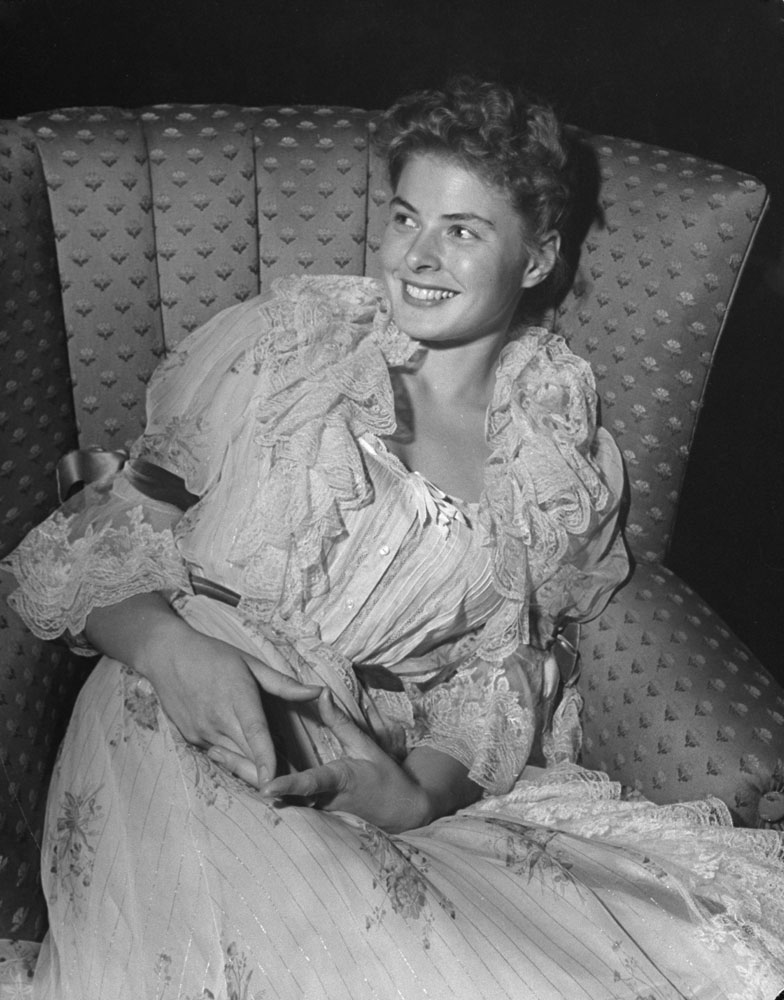
Ingrid Bergman in 1941
Peter Stackpole/Life Picture Collection/Shutterstock images
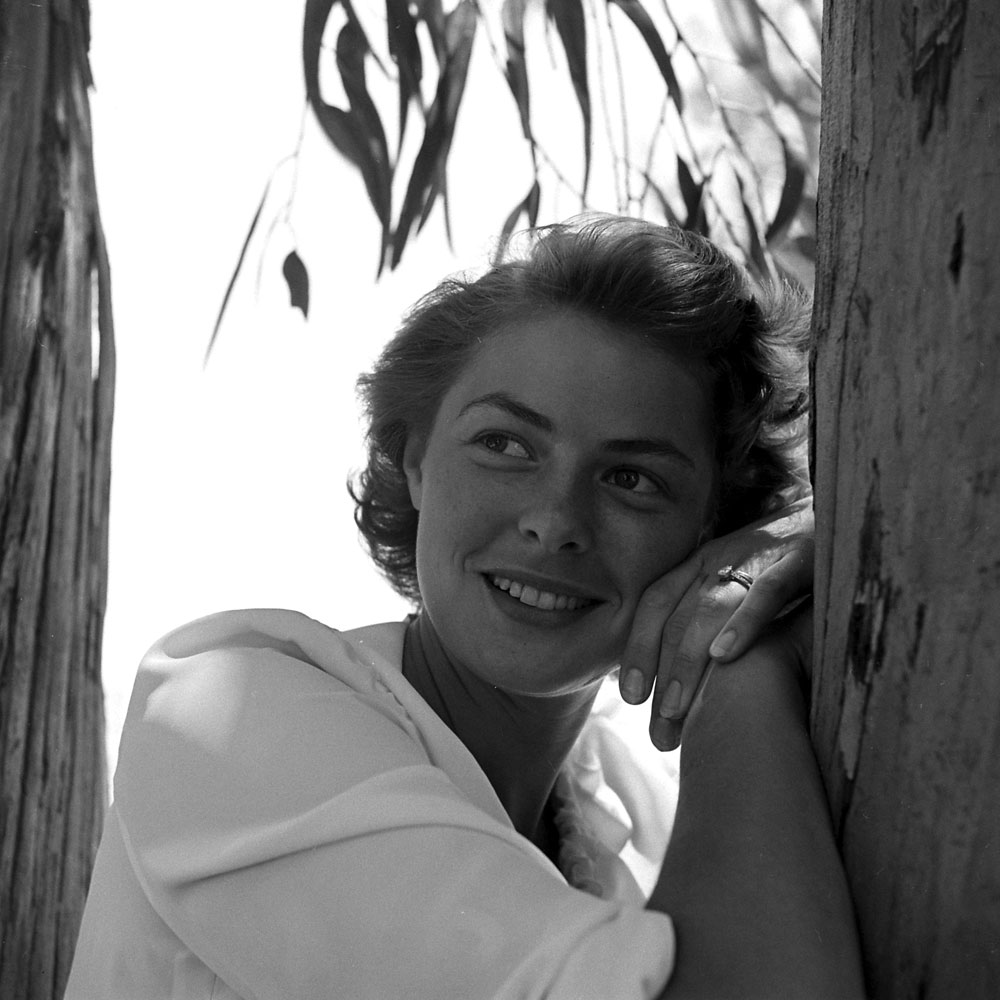
Ingrid Bergman in 1943, around the time she starred in For Whom The Bell Tolls.
John Florea/Life Picture Collection/Shutterstock images
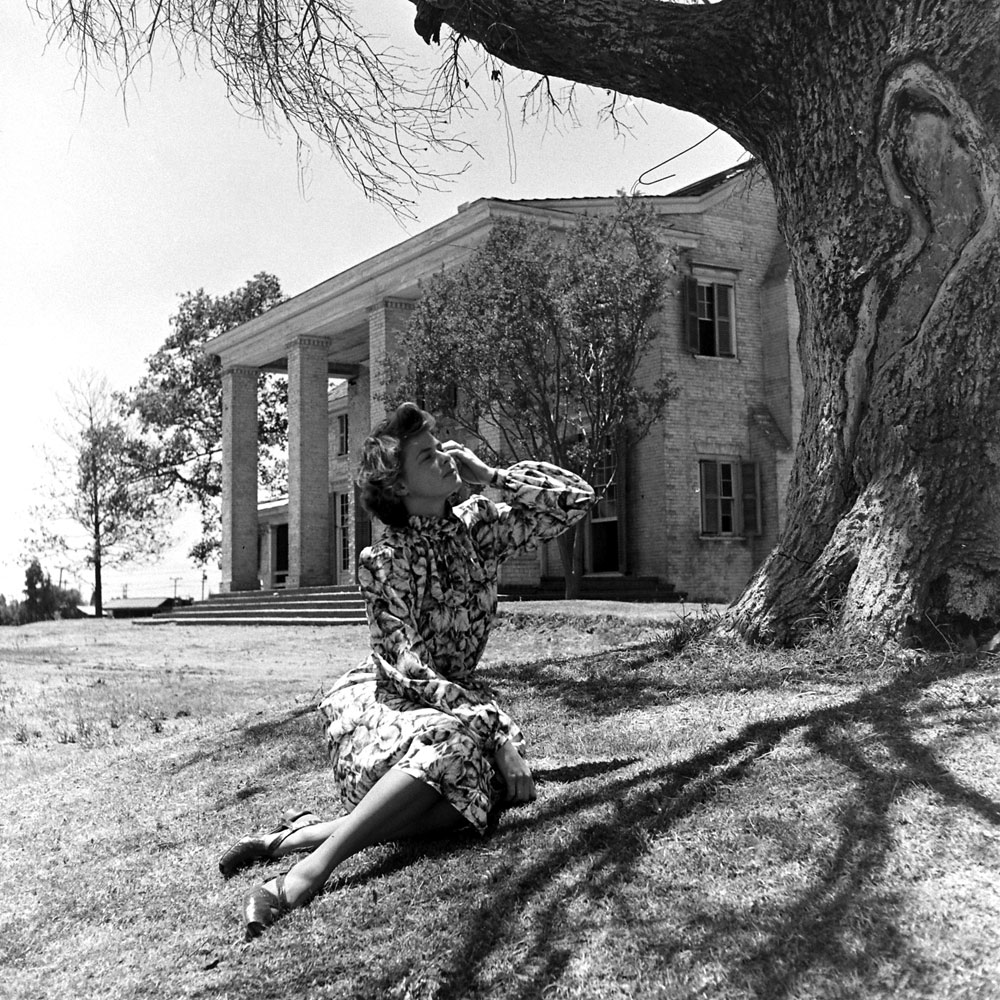
Ingrid Bergman in 1943
John Florea/Life Picture Collection/Shutterstock images

Ingrid Bergman with the painter Alexander Brook, 1944.
John Florea/Life Picture Collection/Shutterstock images

Ingrid Bergman as Maria in the movie For Whom the Bell Tolls, 1944.
John Florea/Life Picture Collection/Shutterstock images
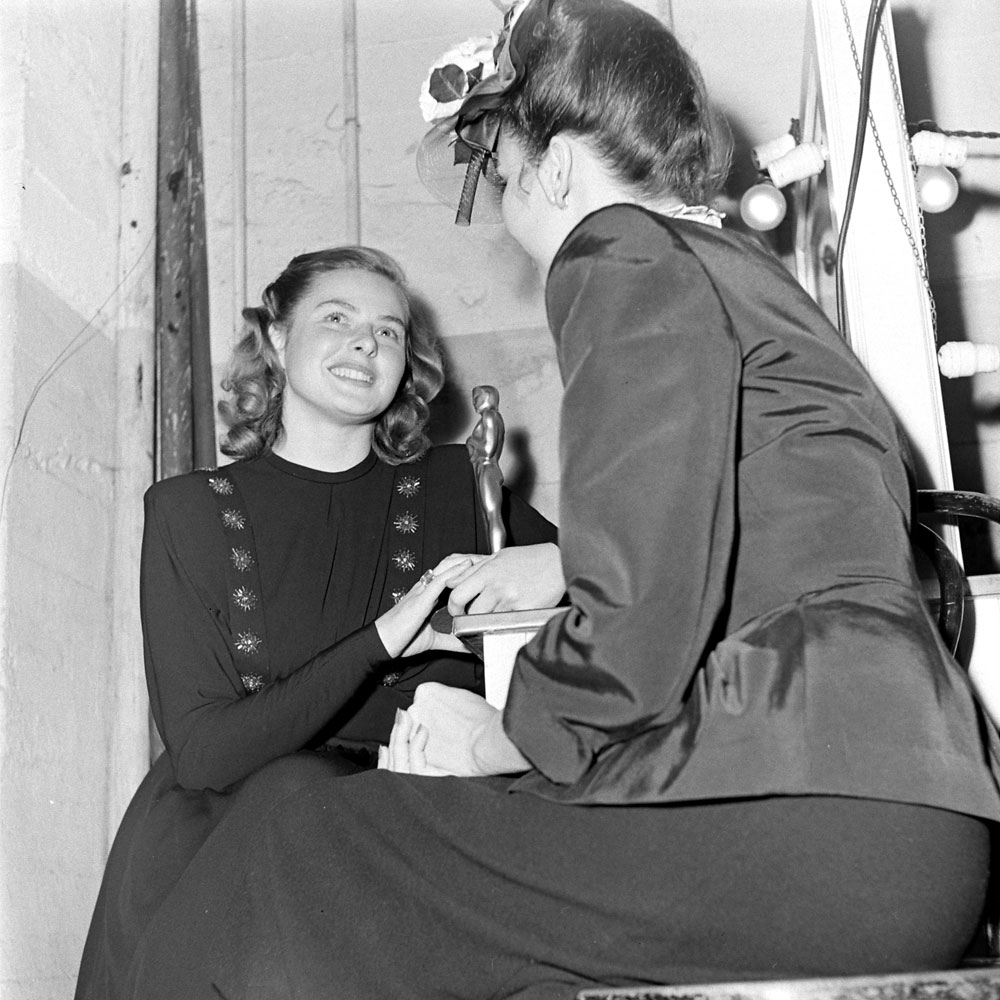
Ingrid Bergman in 1945 with her Best Actress Academy Award for Gaslight.
Walter Sanders/Life Picture Collection/Shutterstock images
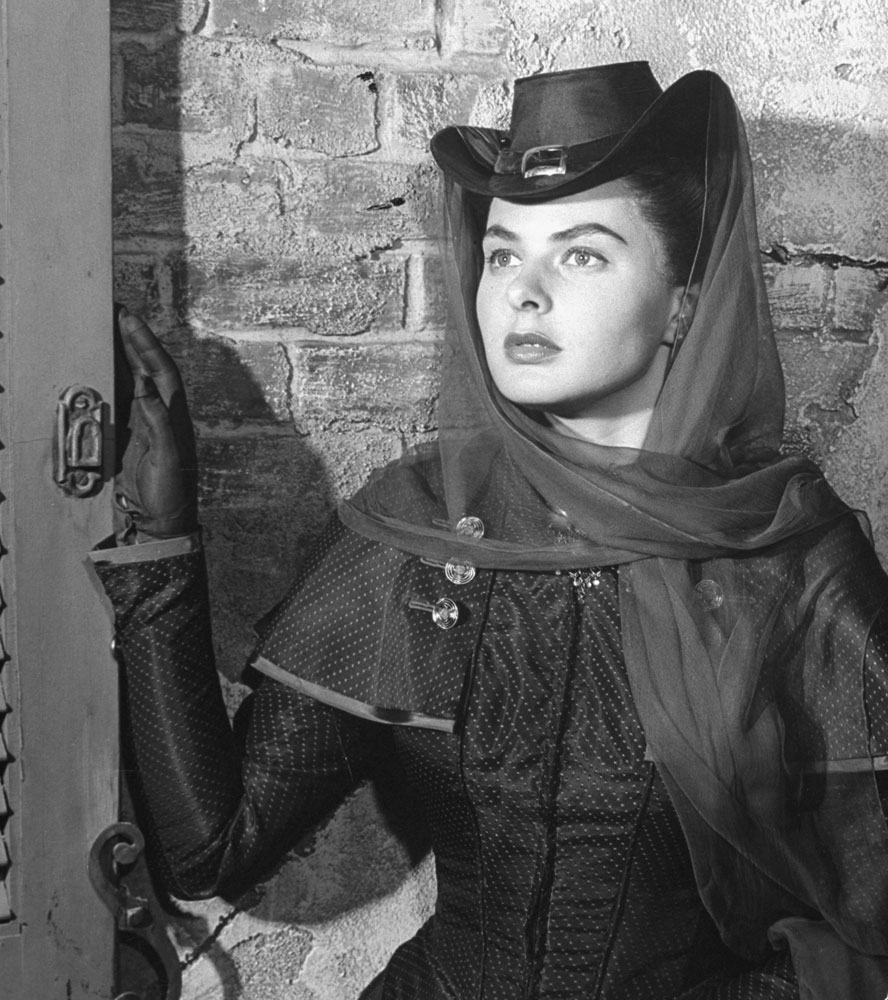
Ingrid Bergman in 1945
John Florea/Life Picture Collection/Shutterstock images
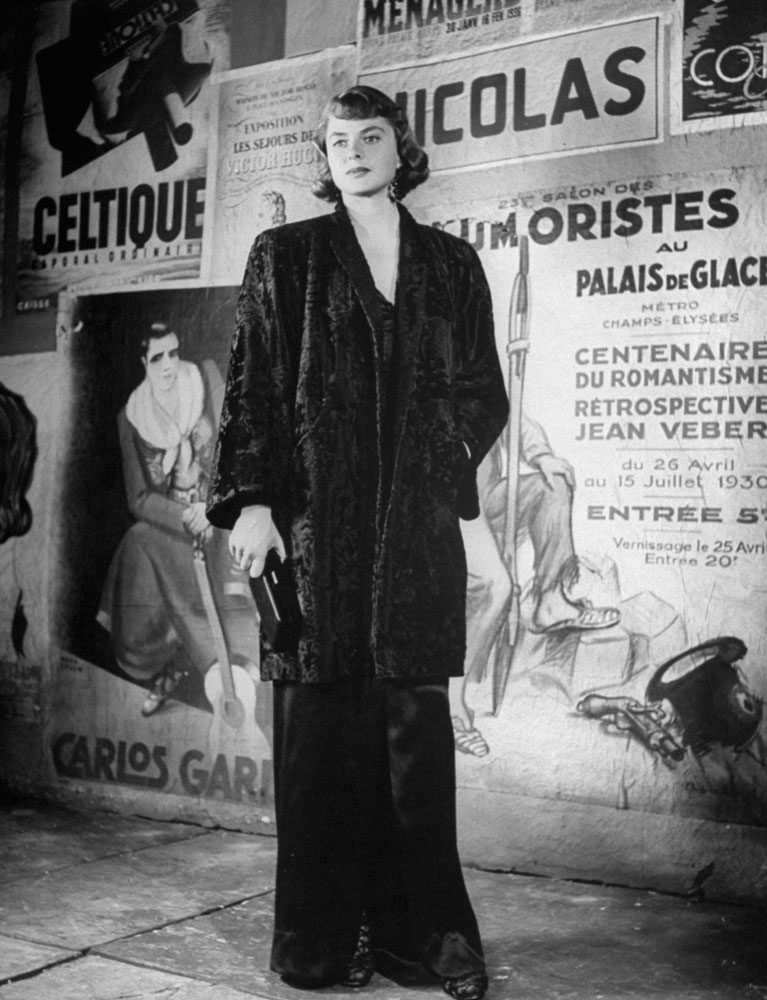
Ingrid Bergman in the film Arch of Triumph
George Lacks/Life Picture Collection/Shutterstock images

Ingrid Bergman in the film Arch of Triumph
Peter Stackpole/Life Picture Collection/Shutterstock images
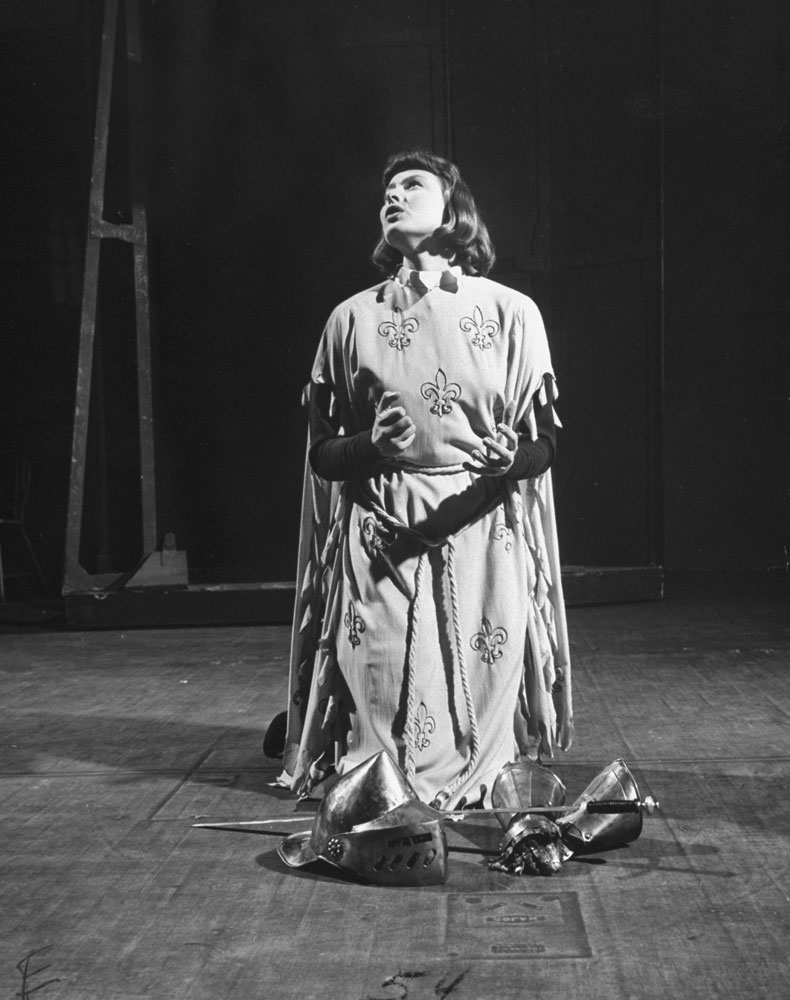
Ingrid Bergman as Joan of Arc praying for guidance during a scene from the Broadway production of Maxwell Anderson’s 1946 play, Joan of Lorraine, for which Bergman won a Tony.
Gjon Mili /Life Picture Collection/Shutterstock images
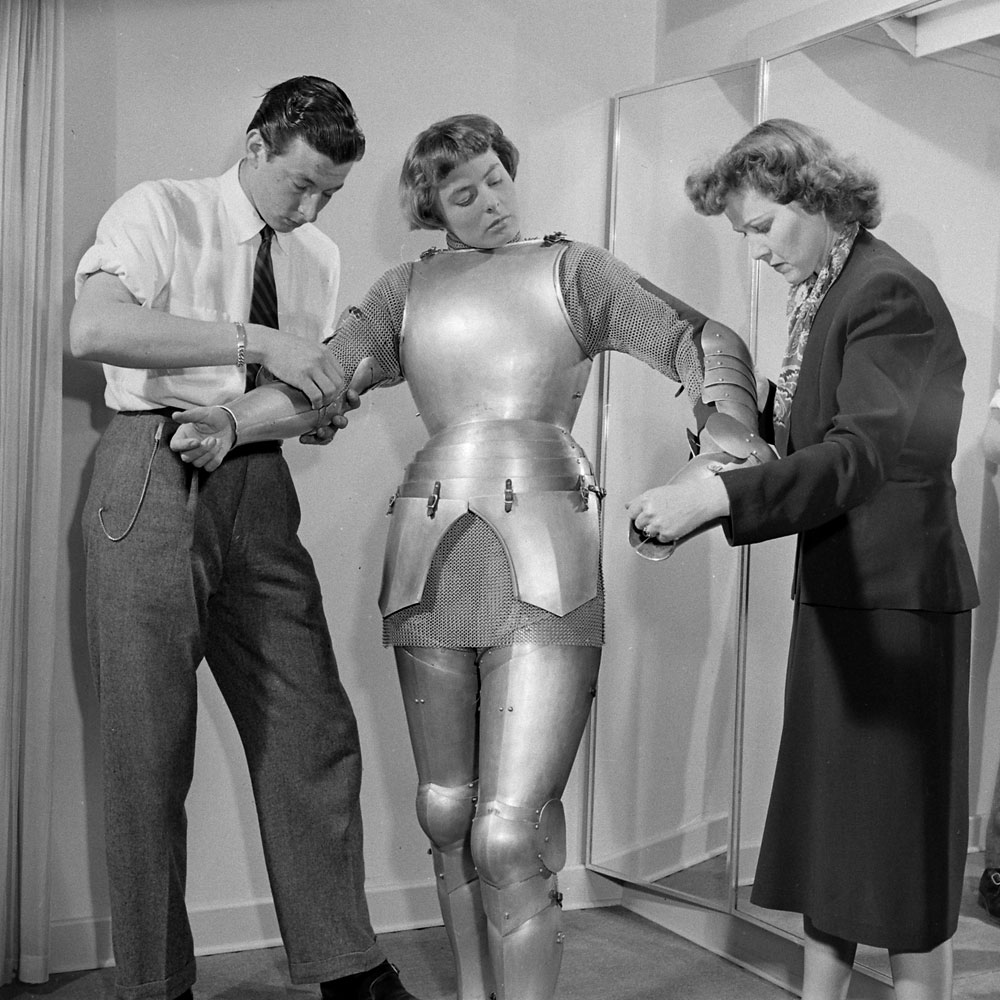
Ingrid Bergman dresses as Joan of Arc in the Broadway production of Maxwell Anderson’s 1946 play, Joan of Lorraine, for which Bergman won a Tony.
Allan Grant/Life Pciture Collection/Shutterstock images
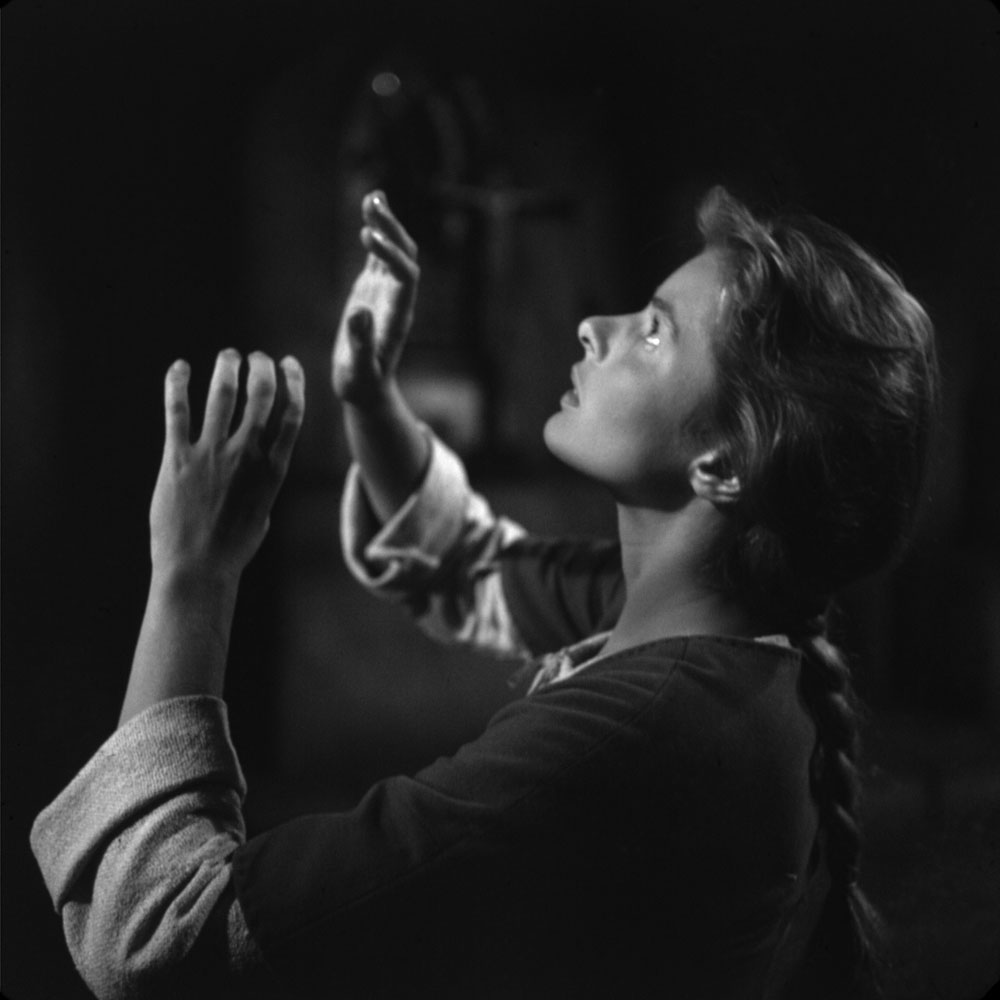
Ingrid Bergman as Joan in the 1948 movie, Joan of Arc.
Loomis Dean/Life Pciture Collection/Shutterstock images

Ingrid Bergman stands on a street as village women stare at her during filming of the movie “Stromboli” on the Italian island of Stromboli, 1949.
Gordon Parks/Life Picture Collection/Shutterstock images
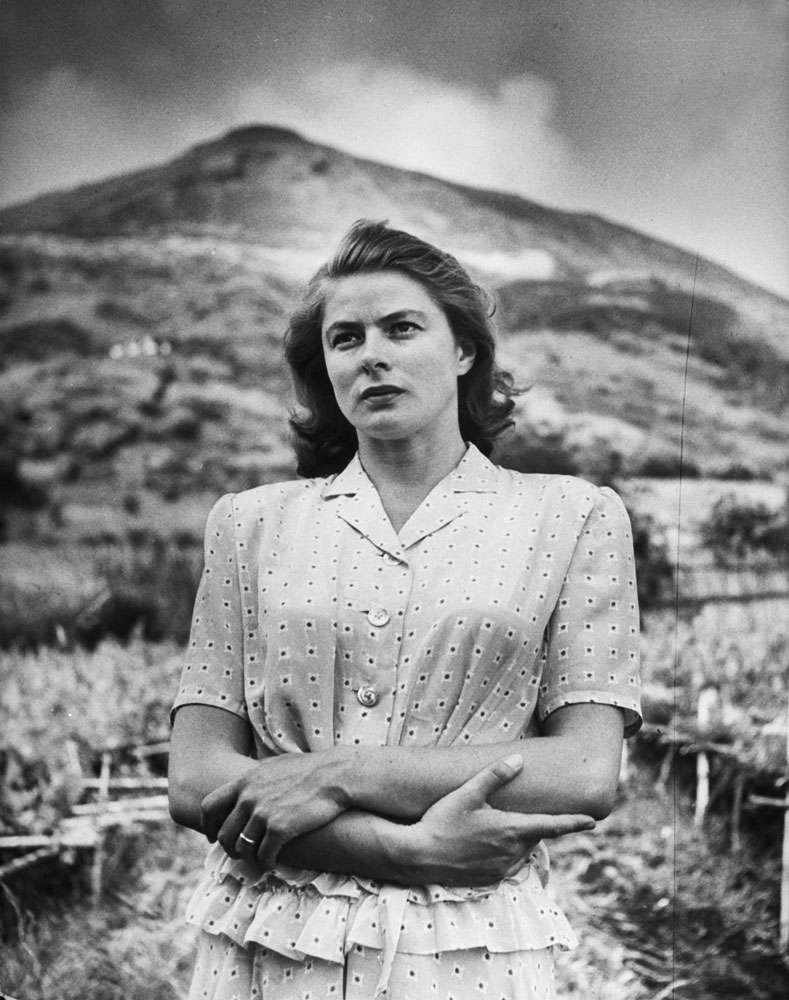
Ingrid Bergman during filming of the movie “Stromboli” on the Italian island of Stromboli, 1949.
Gordon Parks/Life Picture Collection/Shutterstock images
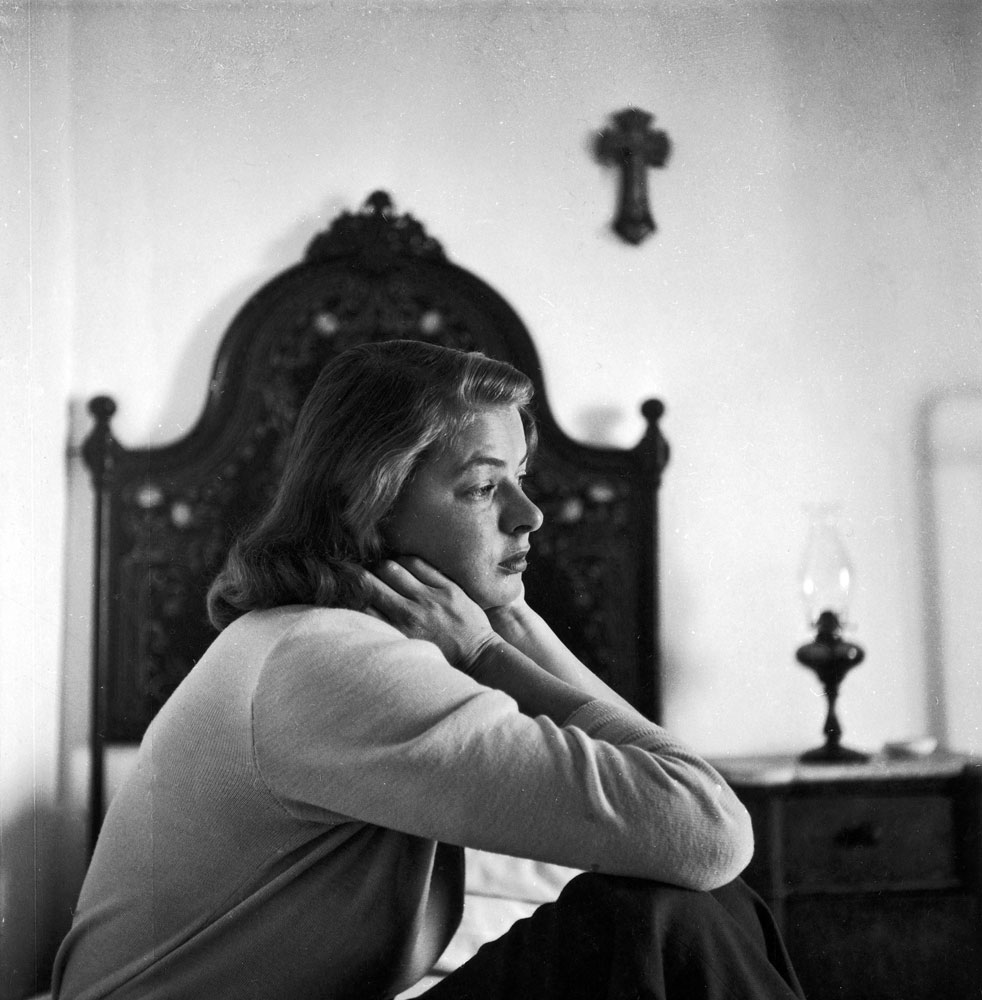
Ingrid Bergman during filming of the movie “Stromboli,” on the Italian island of Stromboli, 1949.
Gordon Parks/Life Picture Collection/Shutterstock images
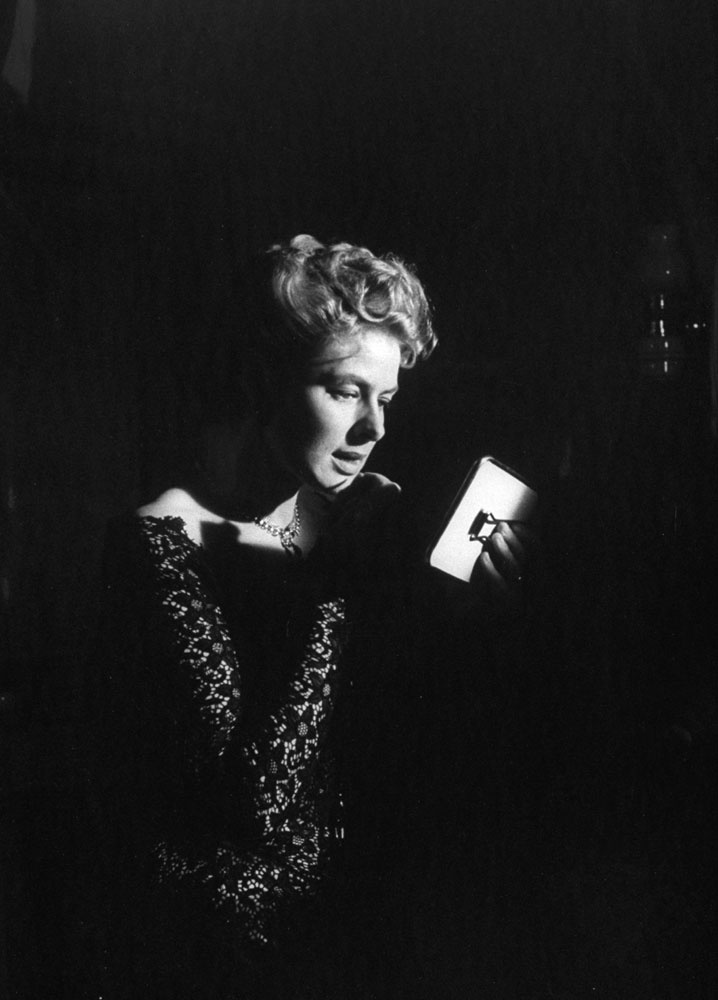
Ingrid Bergman acting in a scene from the 1956 Jean Renoir film, ‘Elena et les Hommes.”
Thomas McAvoy/Life Picture Collection/Shutterstock images
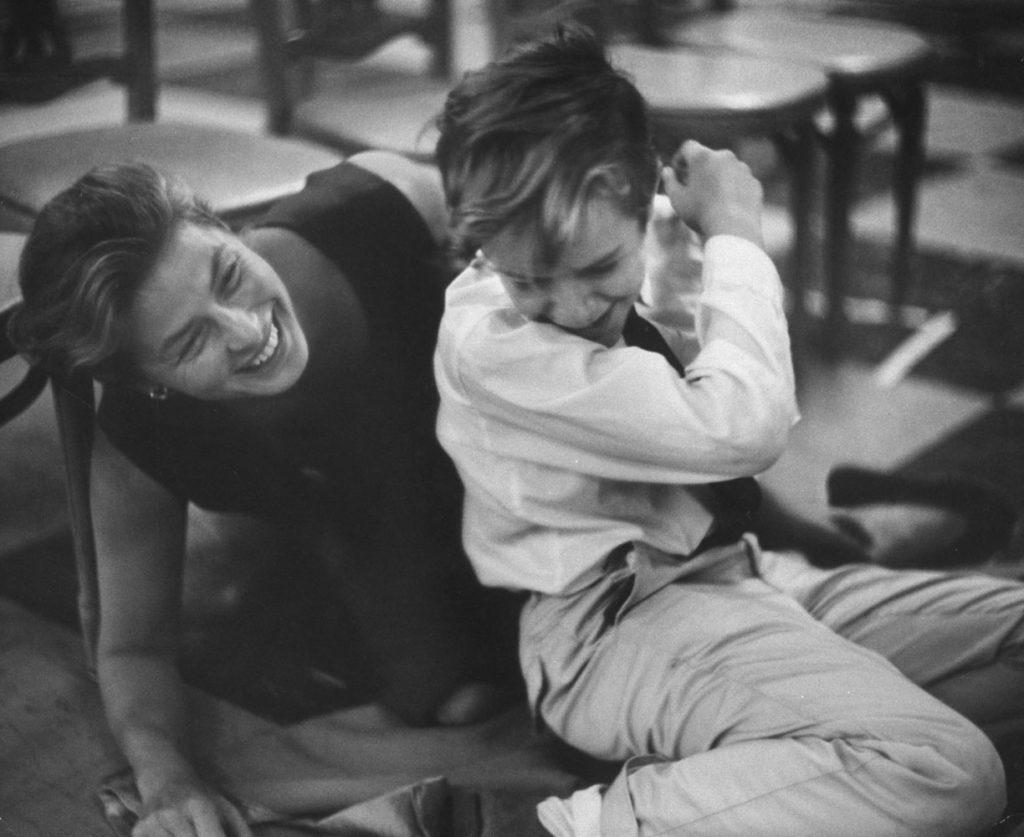
Ingrid Bergman plays with a child actor between scenes of the taping of John Frankenheimer’s 1959 TV movie, The Turn of the Screw, for which she won an Emmy.
Gordon Parks/Life Picture Collection/Shutterstock images
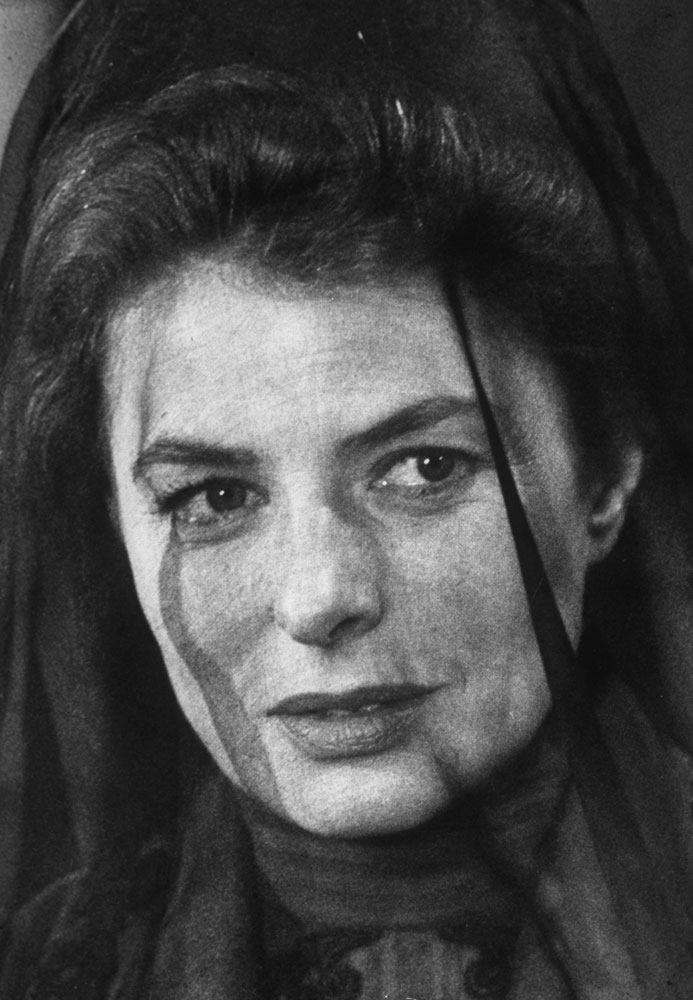
Ingrid Bergman in a special 1961 play on CBS, Twenty Four Hours in a Woman’s Life.
Leonard McCombe/Life Picture Collection/Shutterstock images
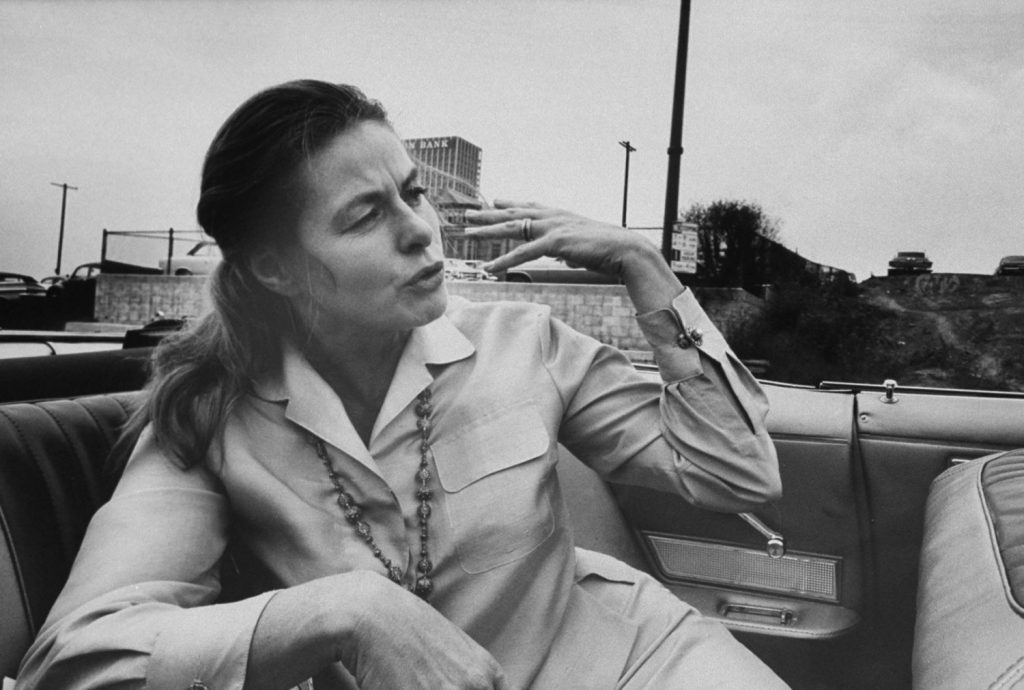
Absorbed in conversation, 52-year-old Ingrid Bergman rides through Los Angeles on her way to the theater where she’ll perform in Eugene O’Neill’s play, More Stately Mansions, in 1967.
Bill Ray/Life Picture Collection/Shutterstock images
The post LIFE With Ingrid Bergman appeared first on LIFE.

10 Best Family Board Games for Memorable Holiday Fun
The holiday season is upon us, and what better way to bring the family together than with a collection of the best family board games?… The post 10 Best Family Board Games for Memorable Holiday Fun appeared first on The Daily Struggle.
Family
The holiday season is upon us, and what better way to bring the family together than with a collection of the best family board games?…
The post 10 Best Family Board Games for Memorable Holiday Fun appeared first on The Daily Struggle.
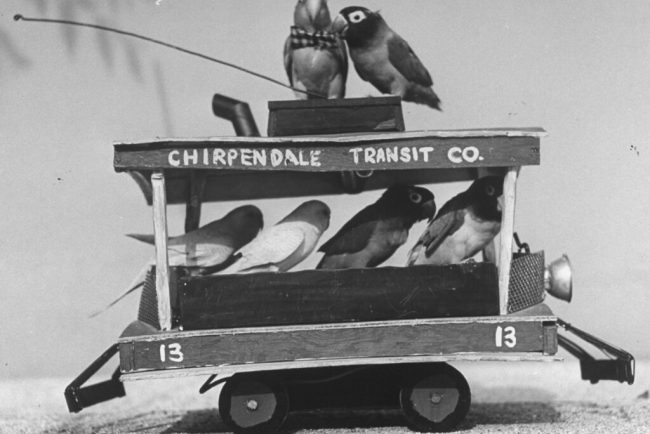
The Oscar-Winning Movie Where the Stars Were All Birds
If it’s not the strangest movie ever to come out of Hollywood, it’s close enough. And of all the strange movies to come out of Hollywood, it is likely the sweetest. The stars of the 1948 film Bill and Coo were birds. That’s not to […]
NatureIf it’s not the strangest movie ever to come out of Hollywood, it’s close enough. And of all the strange movies to come out of Hollywood, it is likely the sweetest.
The stars of the 1948 film Bill and Coo were birds. That’s not to say these these birds stole the show by upstaging their human costars—the birds were the show. The movie’s running time is just over an hour, and except for a two-minute introduction featuring humans, the story is acted out entirely by trained birds on a set of miniatures.
Here’s how LIFE described the production in its July 28, 1947 issue:
The pictures on these pages from Republic’s new movie Bill and Coo are tokens of the gloomy contention of the producer, that movie stars belonging to the species homo sapiens are washed up and the birds are ready to take over….No newcomer to strange breeds of actors, Vaudevillian Ken Murray for the last five years has been packing Hollywood’s El Capital Theater with a raucous oldtime variety show called Blackouts…When a bird trainer named brought his lovebird act around, Murray was so impressed that he dreamed up a starring vehicle for it, had miniature sets built and a lovebird story written.
The entire movie can be viewed online, and the photos taken by Peter Stackpole capture both the charm and peculiarity of the enterprise. The film is set in “Chirpendale U.S.A.,” and the location is one of the movie’s many bird-themed puns. The story is narrated by an off-screen human, but you see birds doing things like walking in and out of buildings, pushing little baby carriages and dropping letters in mailboxes. The plot revolves Bill and Coo, who love each other despite their class differences (Bill has a taxi service, Coo comes from a wealthy family), and they must fight off a malicious crow who threatens life in Chirpendale.
(Perhaps the most surprising detail about the production is that it was the only movie directed by former child actor Dean Riesner, who decades later would leave his mark on Hollywood history as one of the writers of the decidedly un-precious movie Dirty Harry. Yes, the man who directed Bill and Coo also gave us the line “Do you feel lucky? Well, do you punk?“)
On the one hand, no one is going to mistake Bill and Coo for Citizen Kane. On the other hand, it did win an honorary Academy Award, for creating a film “In which artistry and patience blended in a novel and entertaining use of the medium of motion pictures.”
It was novel indeed. In fact, when you look at the movie’s IMDB page and scroll to the heading “More Like This,” what you get are not more live-action movies but rather animated films such as Bambi. Which is another way of saying, there really are no movies like this.
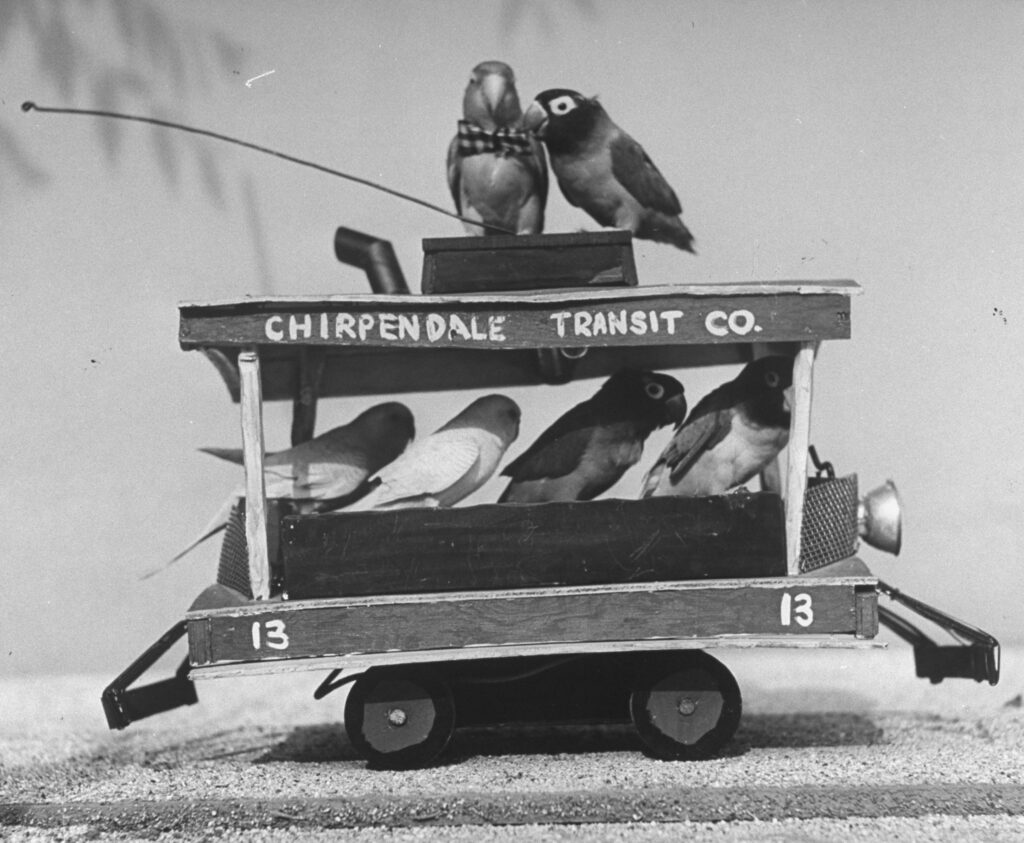
Bill and Coo, the titular stars of the movie, stood on top of a trolley on the film’s set.
Peter Stackpole/Life Picture Collection/Shutterstock
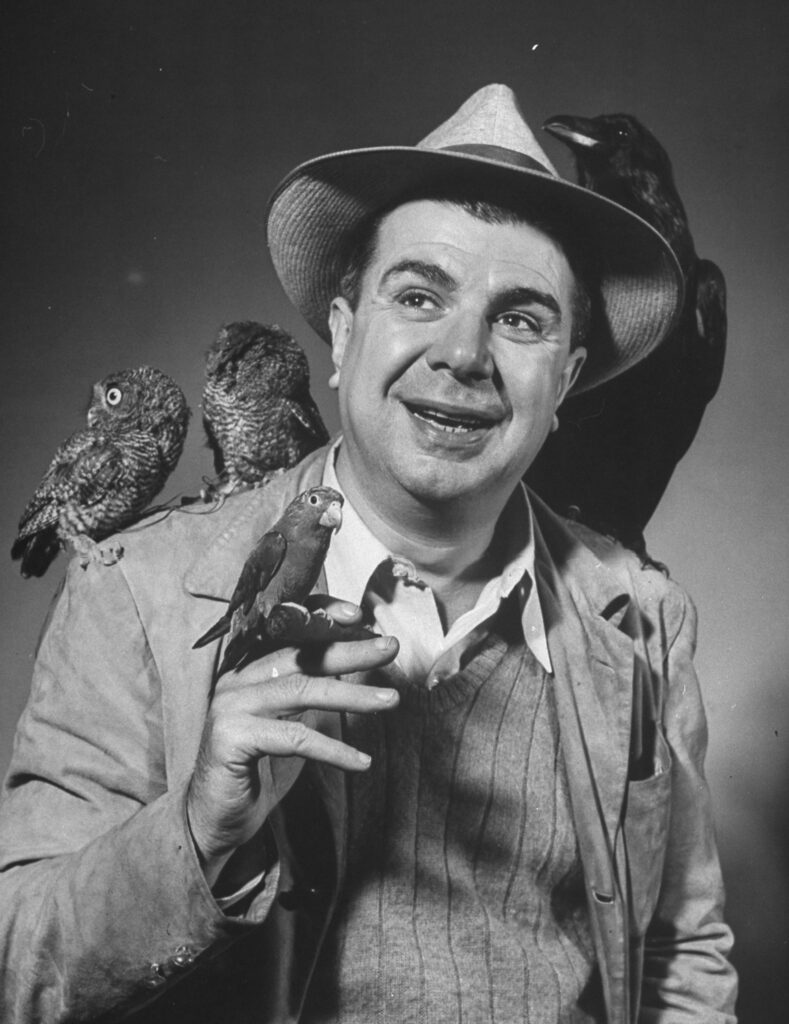
Ken Murray first encountered the birds in his vaudeville show and helped dream up the idea for featuring them in the movie that become Bill and Coo.
Peter Stackpole/Life Picture Collection/Shutterstock
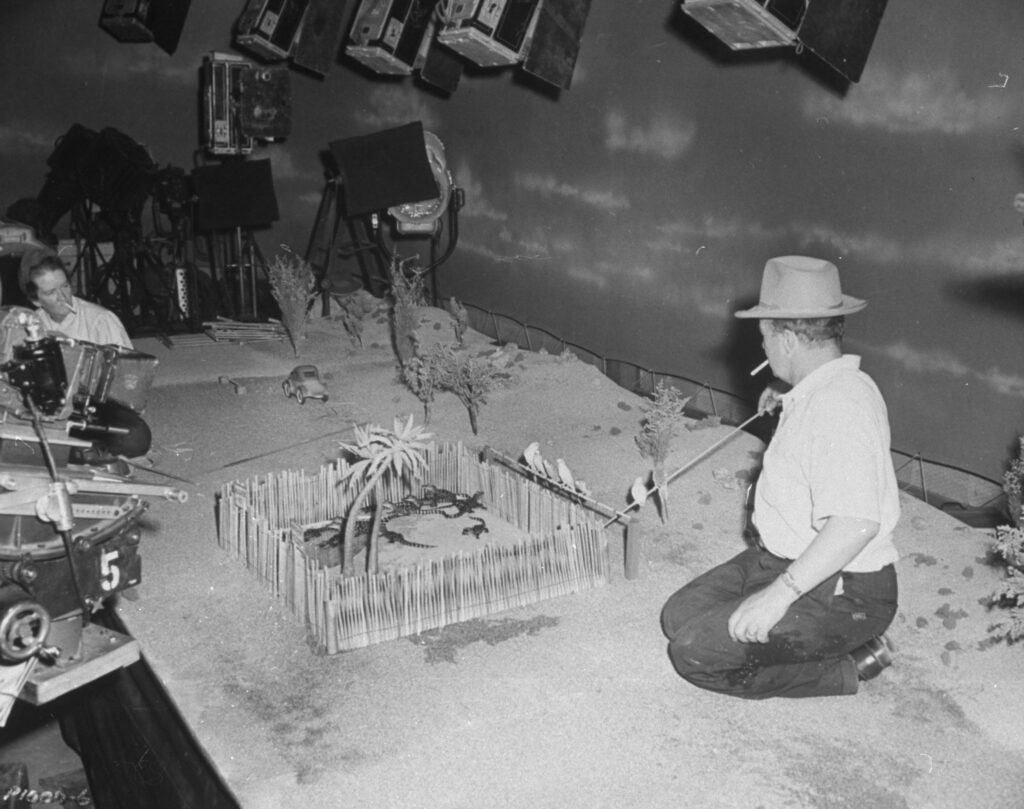
Trainer George Burton works with alligators who also played a role in the movie Bill and Coo, 1947.
Peter Stackpole/Life Picture Collection/Shutterstock
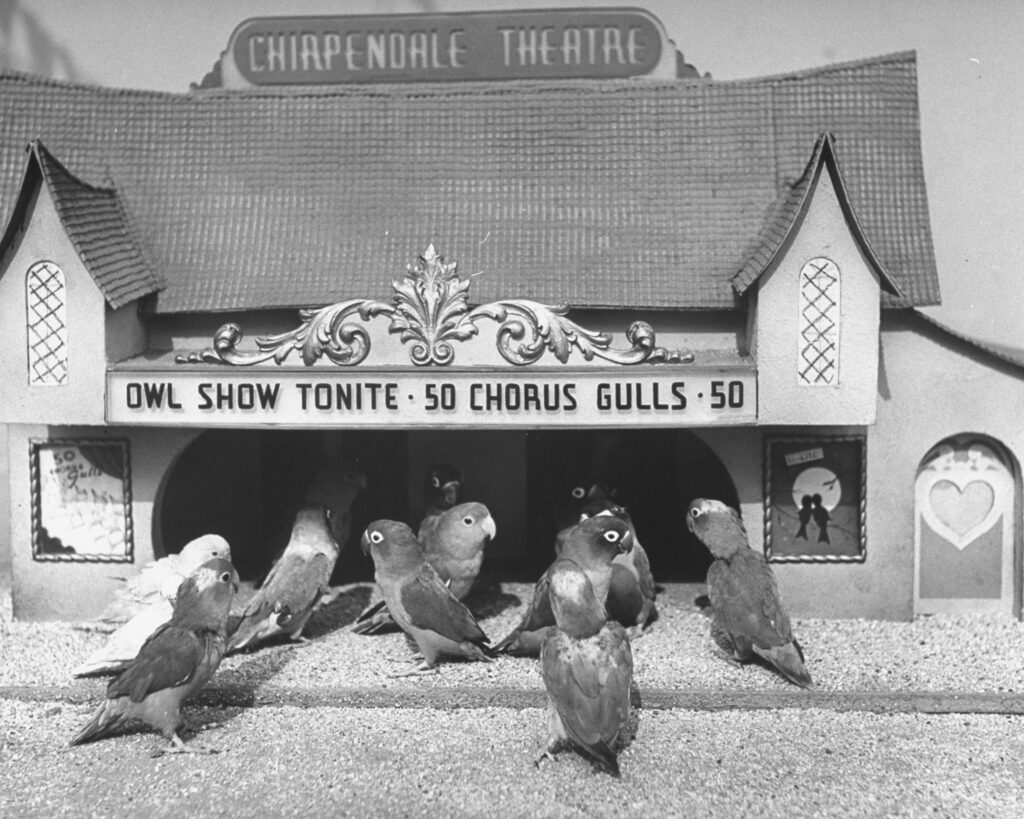
From the set of the bird-centric movie Bill and Coo, 1947.
Peter Stackpole/Life Picture Collection/Shutterstock
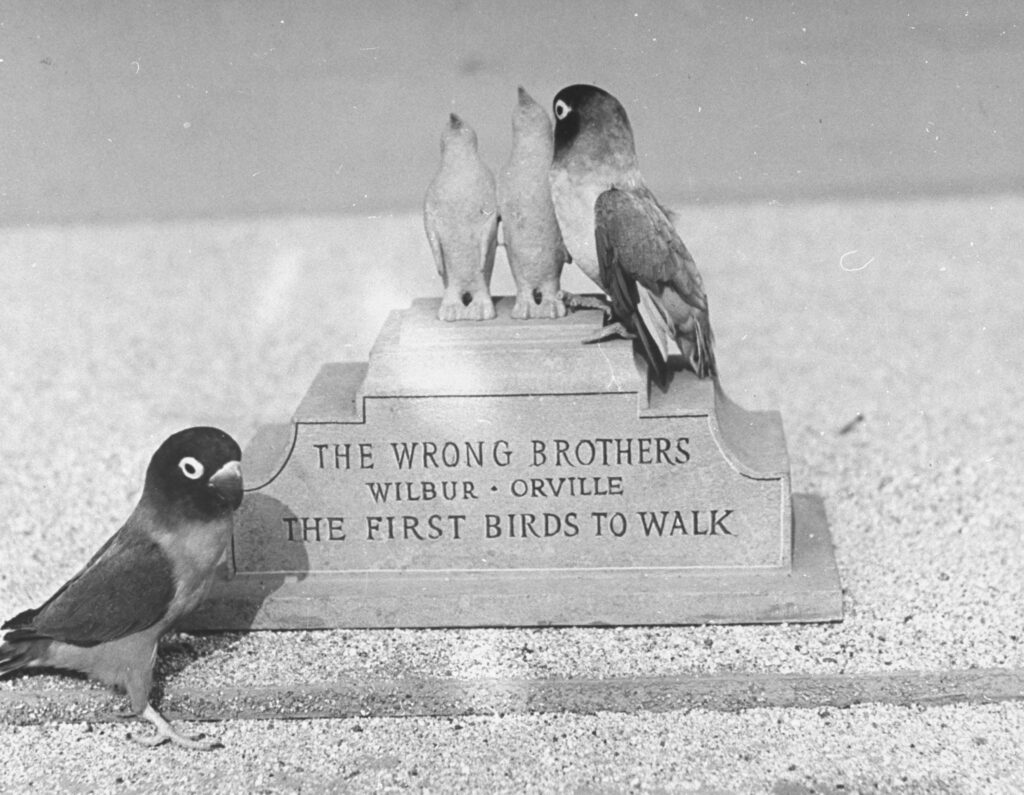
The “wrong brothers” are celebrated in one of the many bird-related puns in the movie Bill and Coo.
Peter Stackpole/Life Picture Collection/Shutterstock
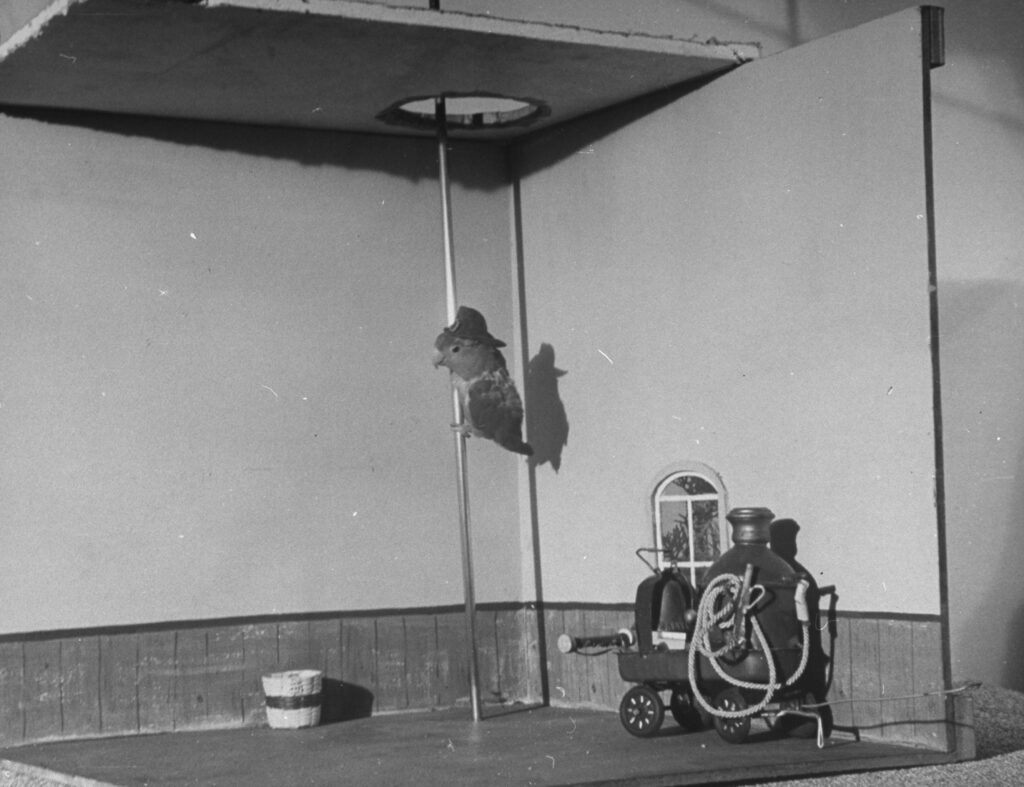
A fire-bird slides down a pole the set of the all-bird movie Bill and Coo, 1947.
Peter Stackpole/Life Picture Collection/Shutterstock
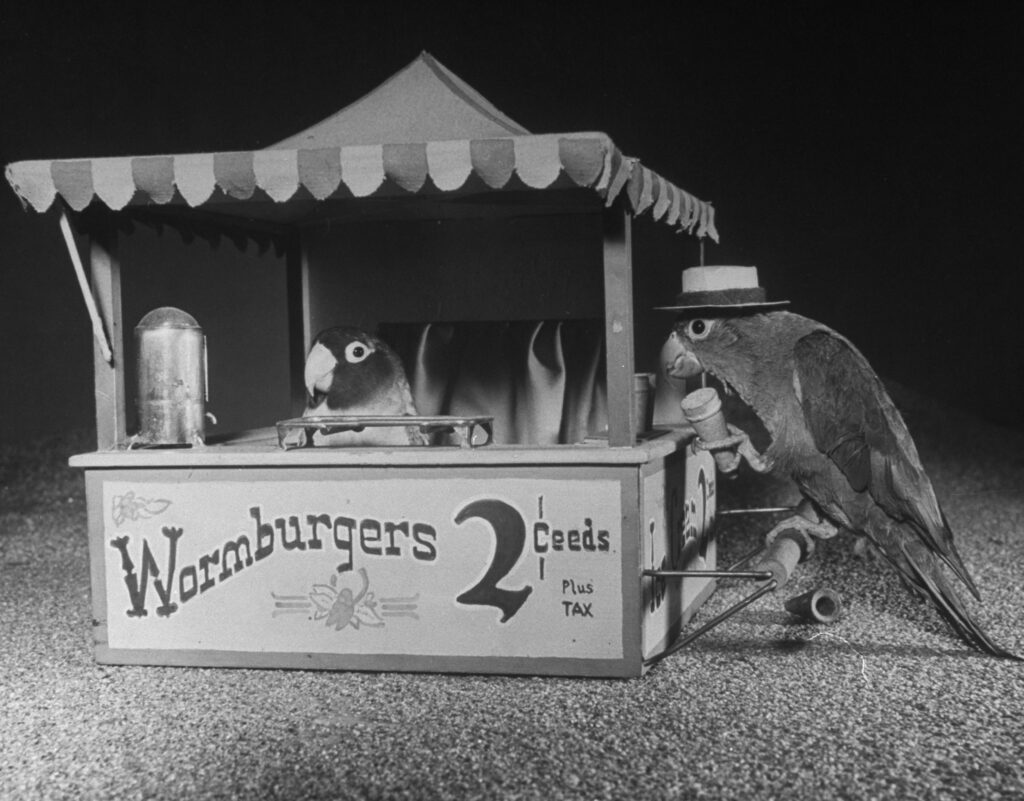
From the set of the bird-centric live action movie Bill and Coo, 1947.
Peter Stackpole/Life Picture Collection/Shutterstock
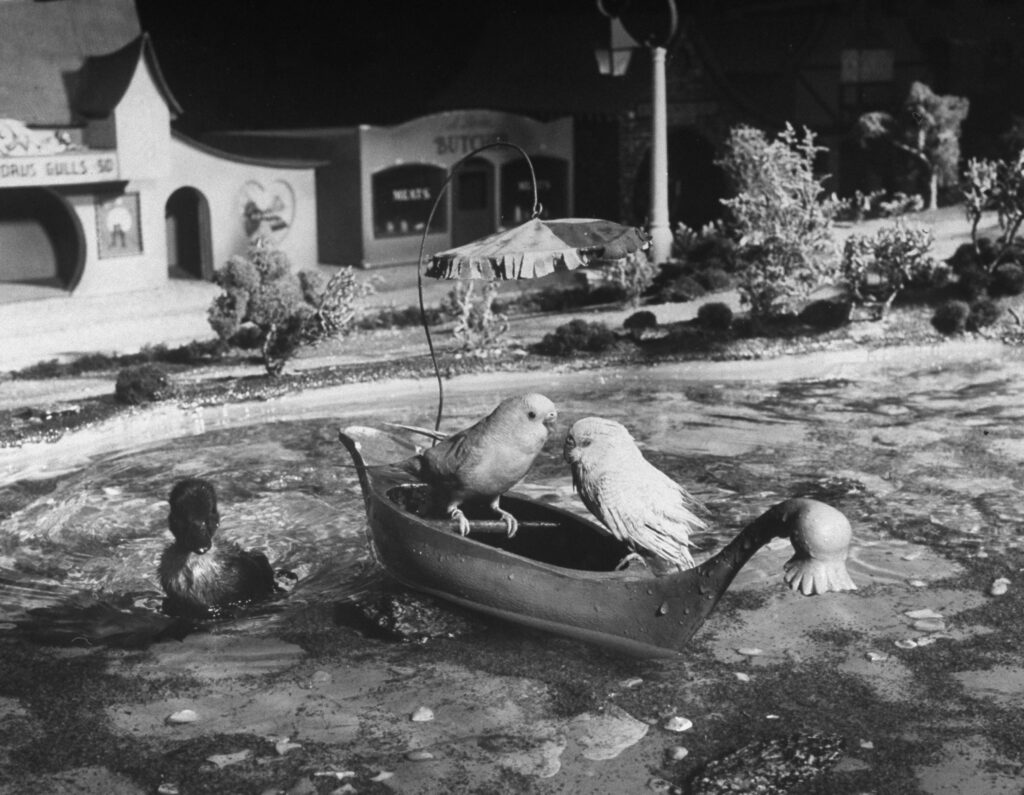
From the set of the bird-centric movie Bill and Coo, 1947.
Peter Stackpole/Life Picture Collection/Shutterstock
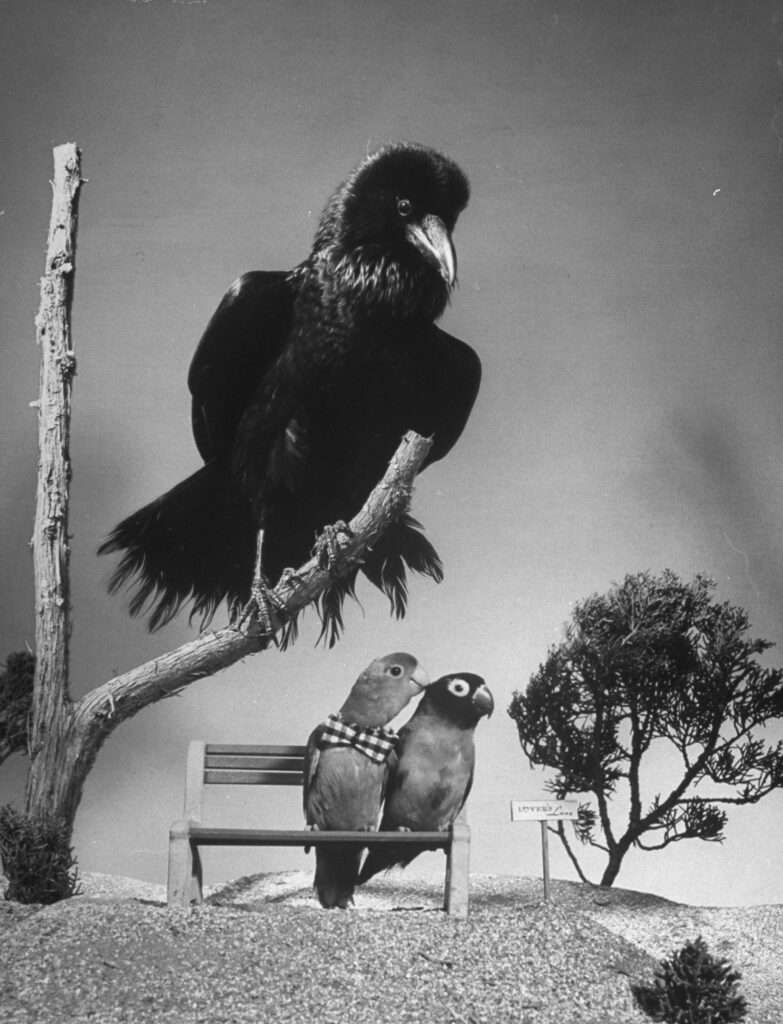
A crow played the villain in the bird-centric movie Bill and Coo, 1947.
Peter Stackpole/Life Picture Collection/Shutterstock
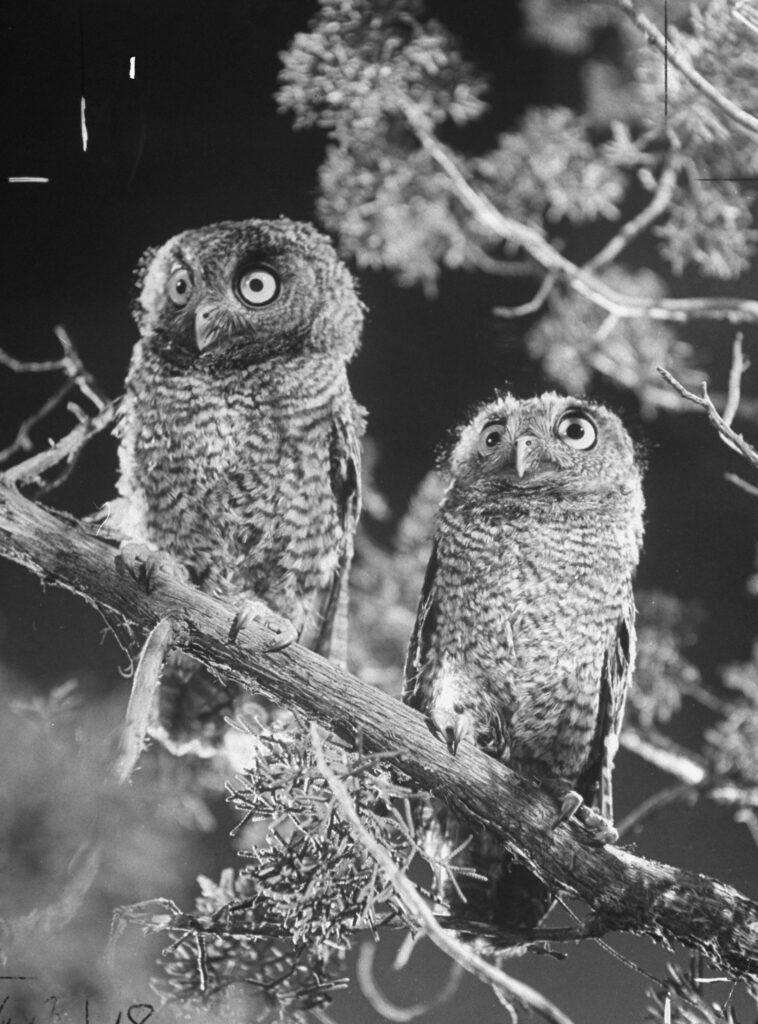
Owls on the set of the bird-centric movie Bill and Coo, 1947.
Peter Stackpole/Life Picture Collection/Shutterstock
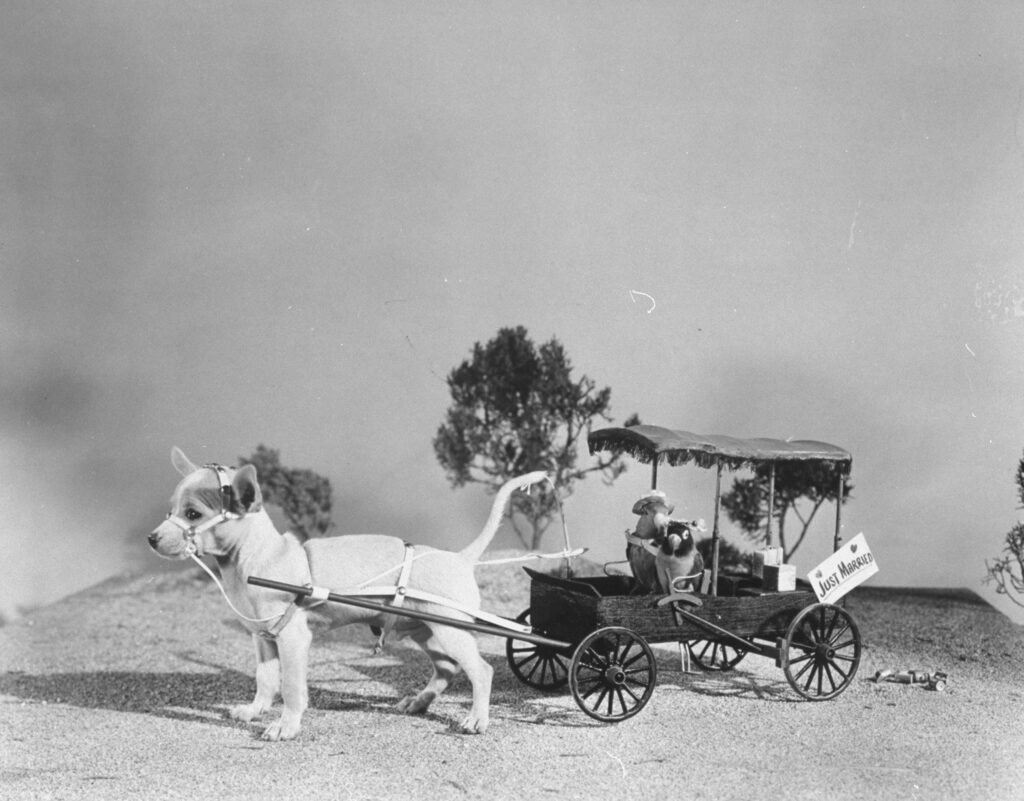
At the end of the movie Bill and Coo, the titular birds head off on their honeymoon in a puppy-drawn carriage, 1947.
Peter Stackpole/Life Picture Collection/Shutterstock
The post The Oscar-Winning Movie Where the Stars Were All Birds appeared first on LIFE.











